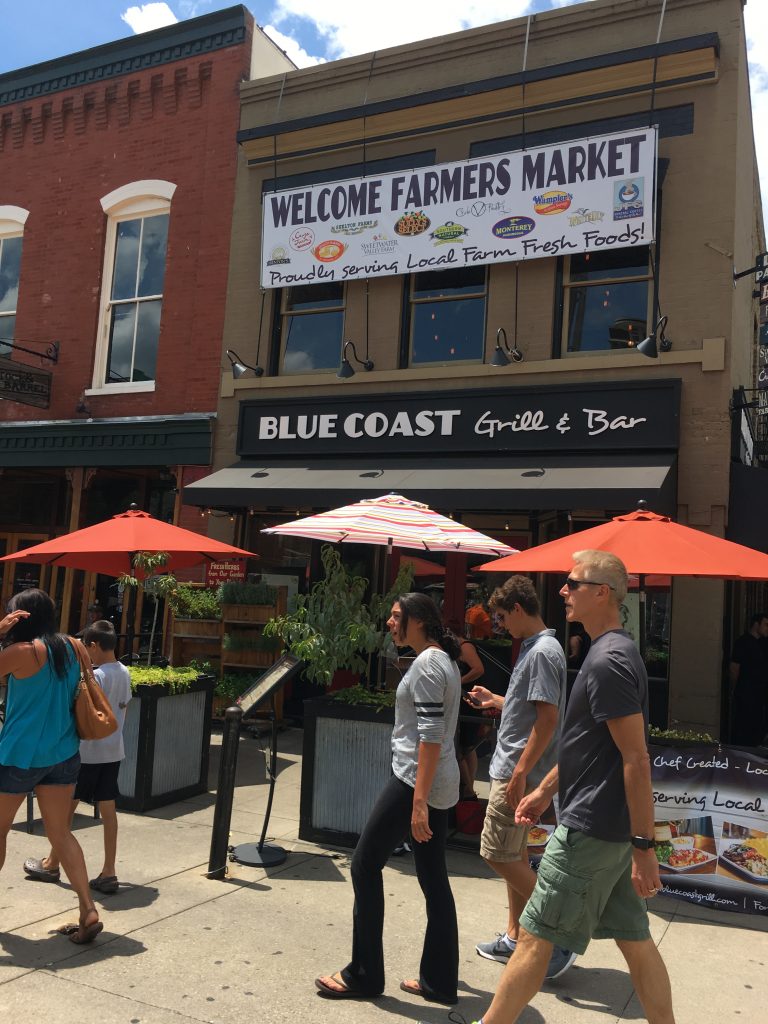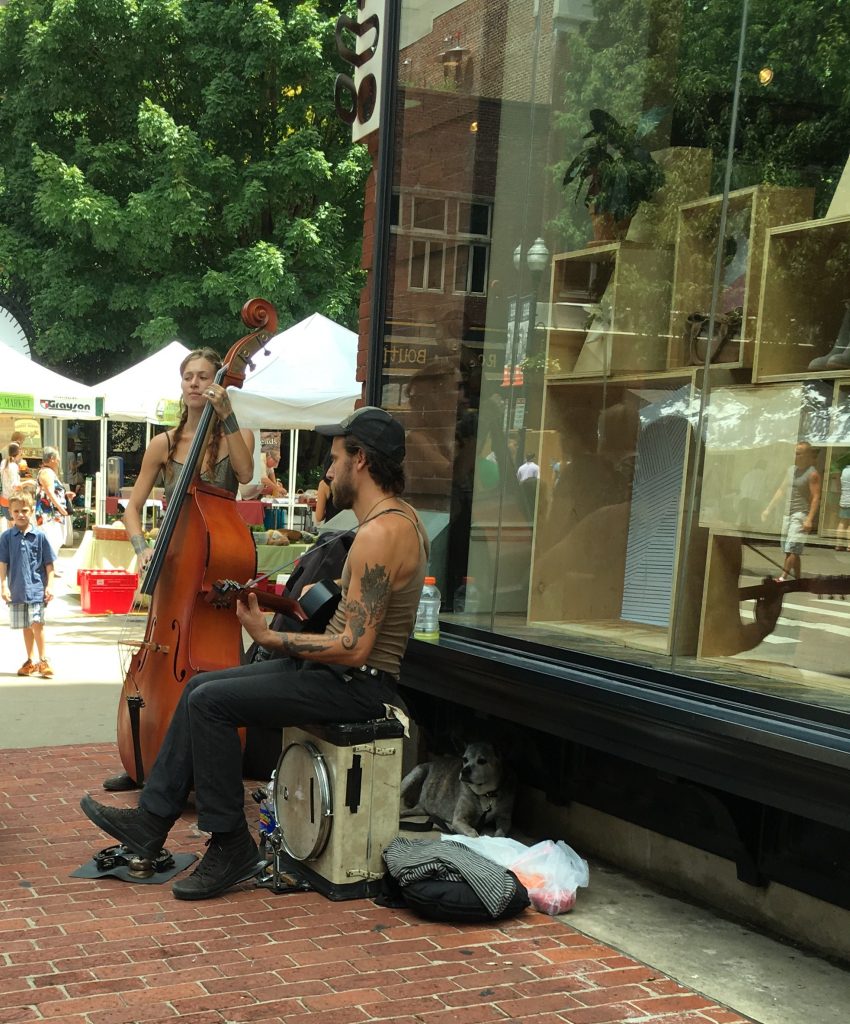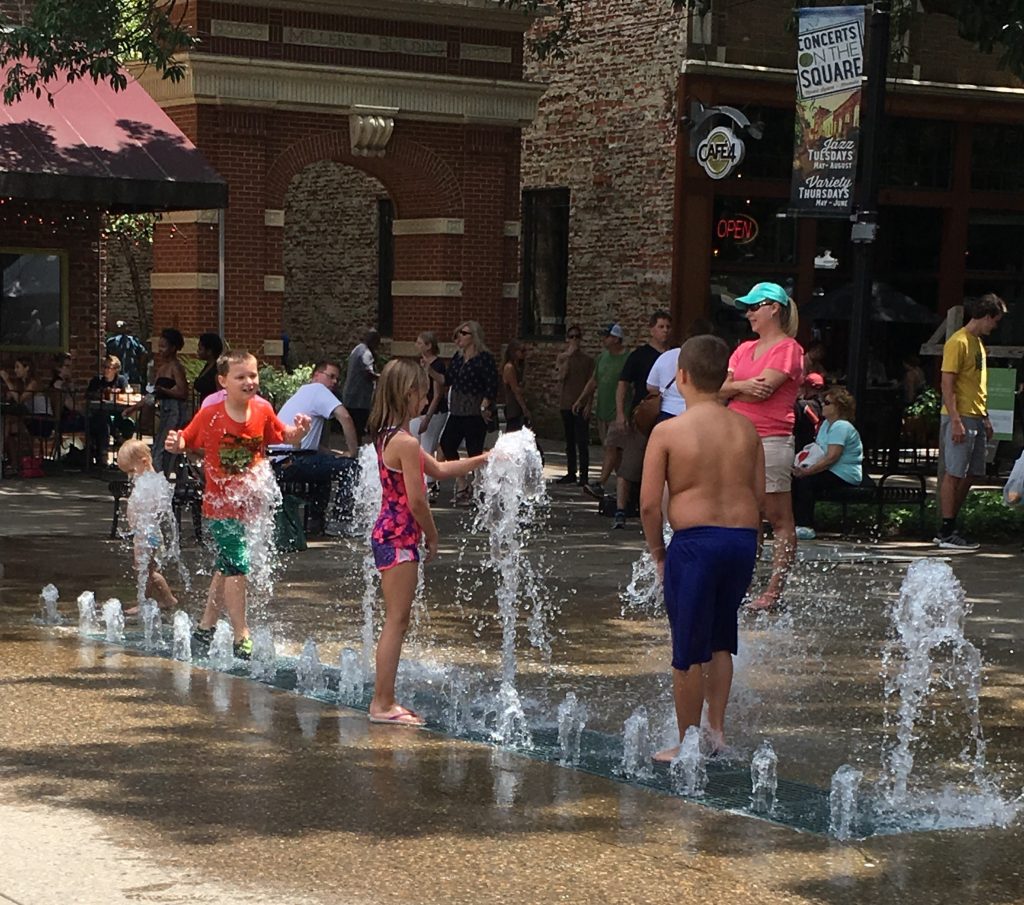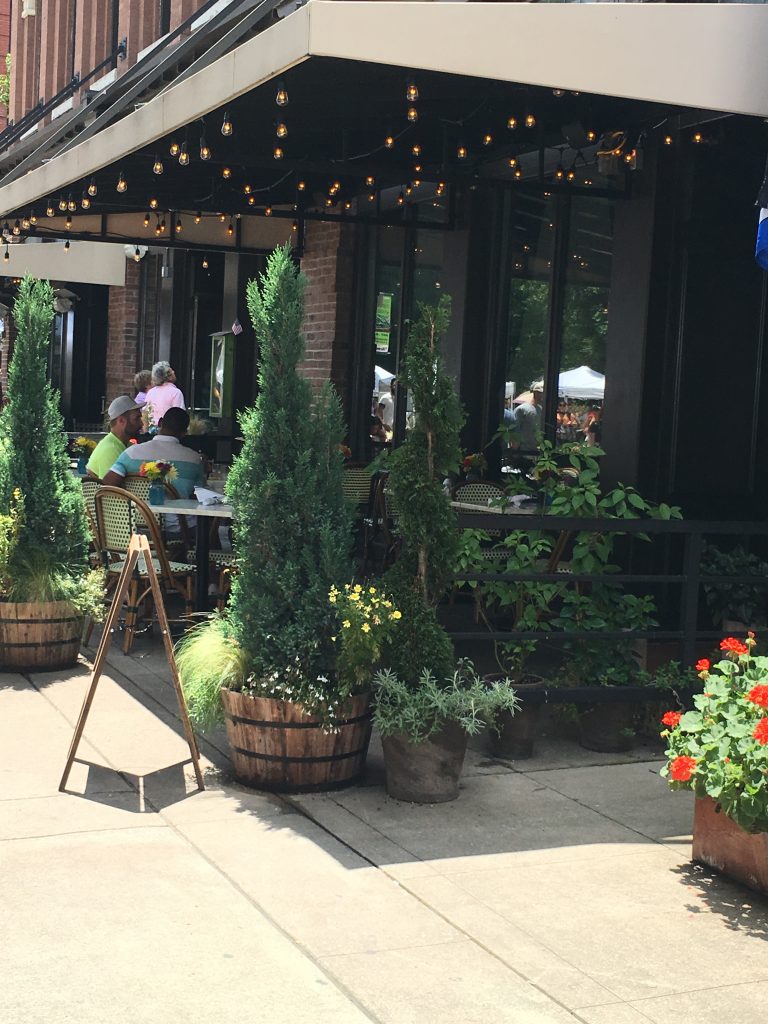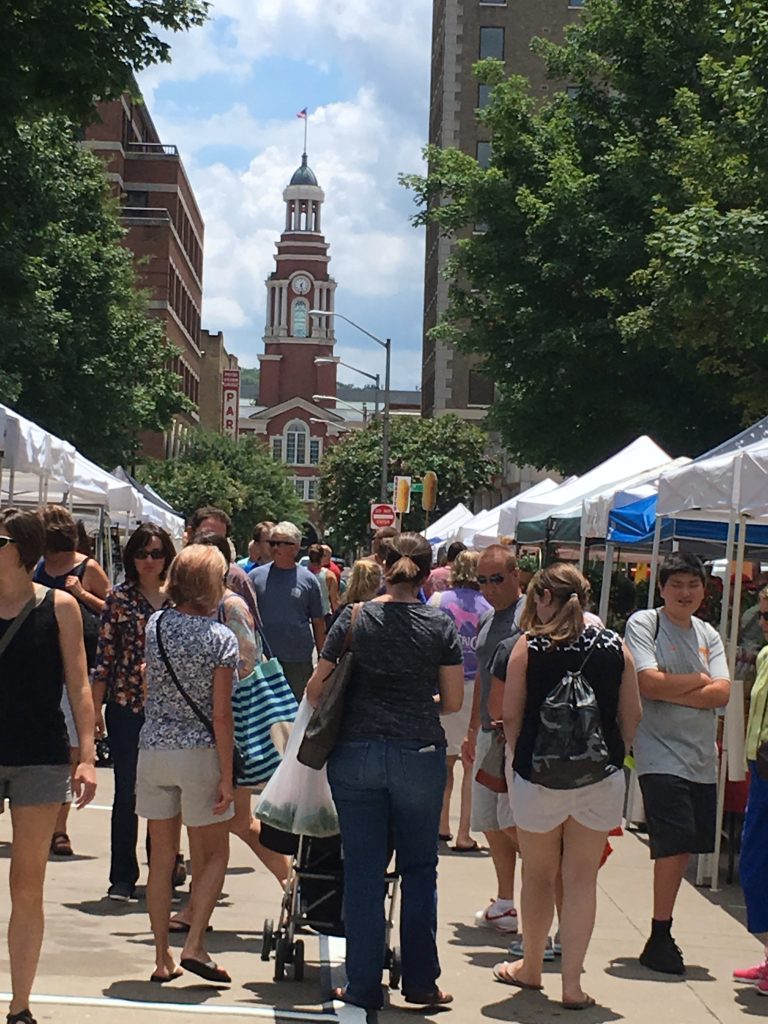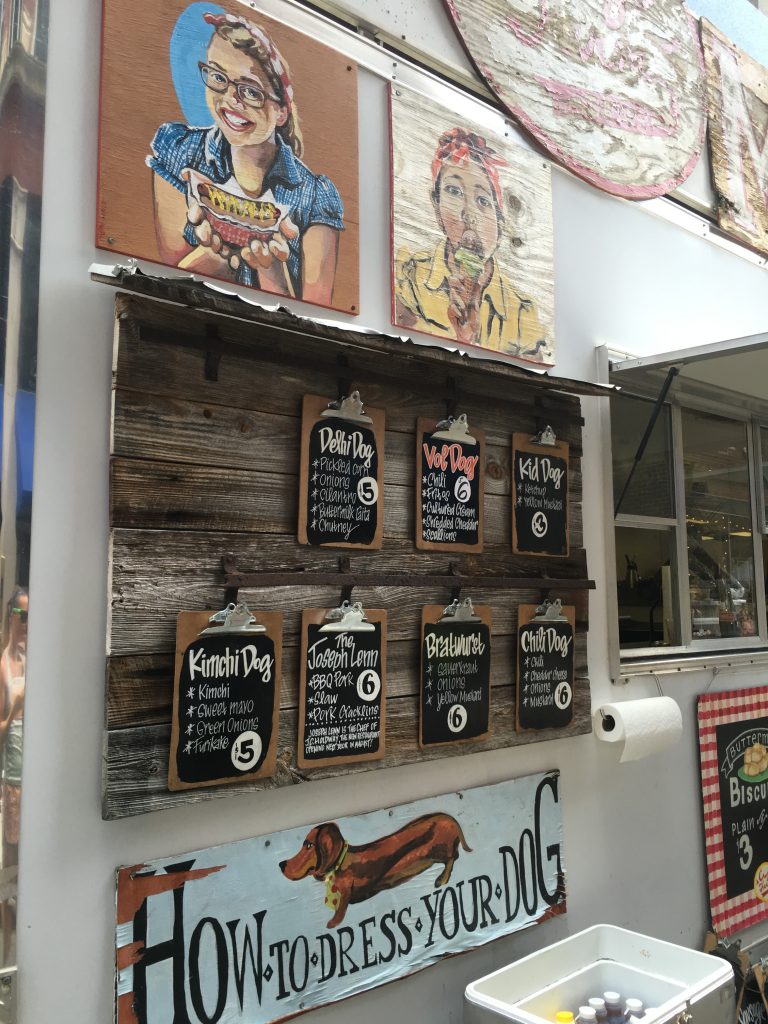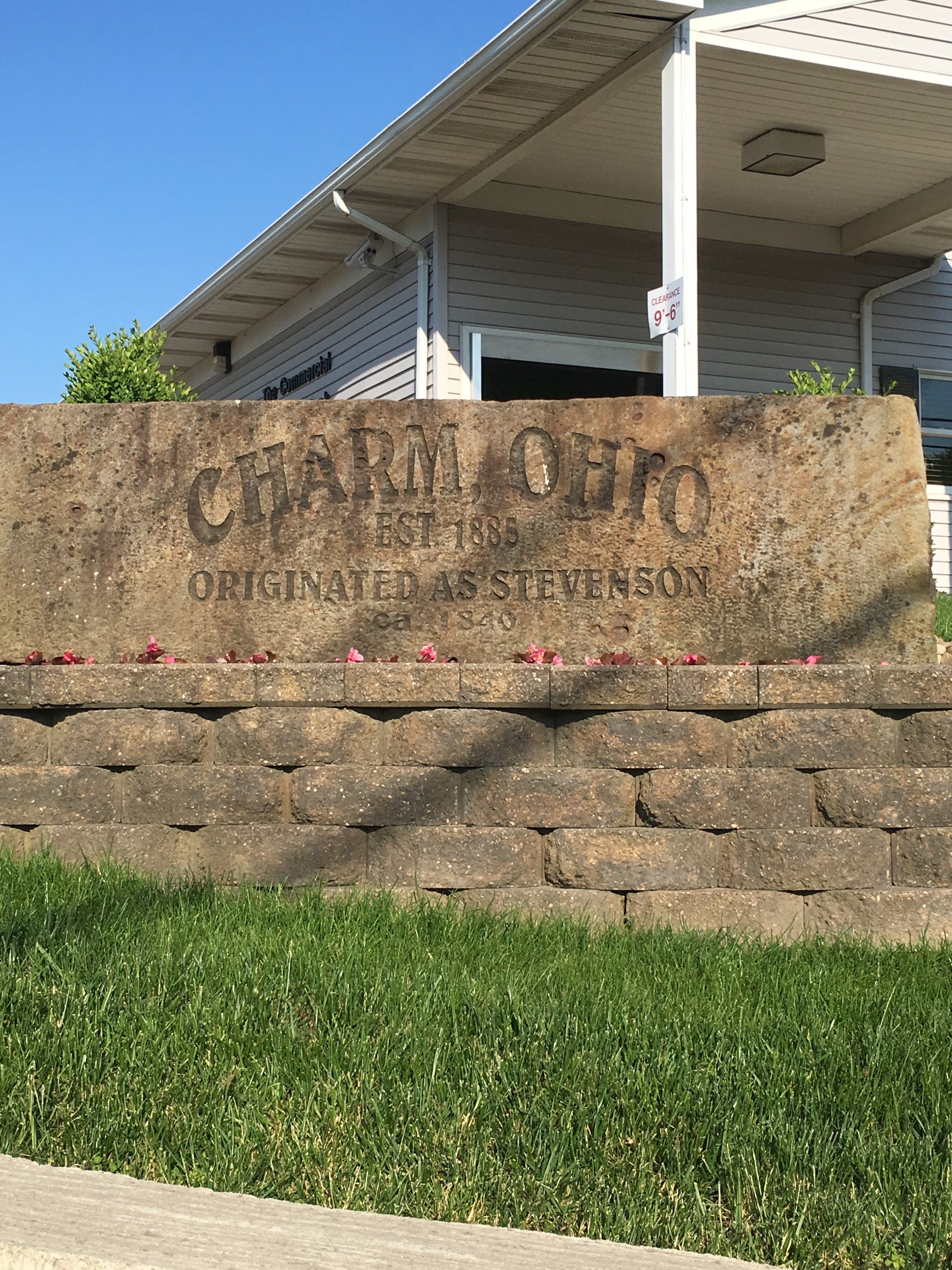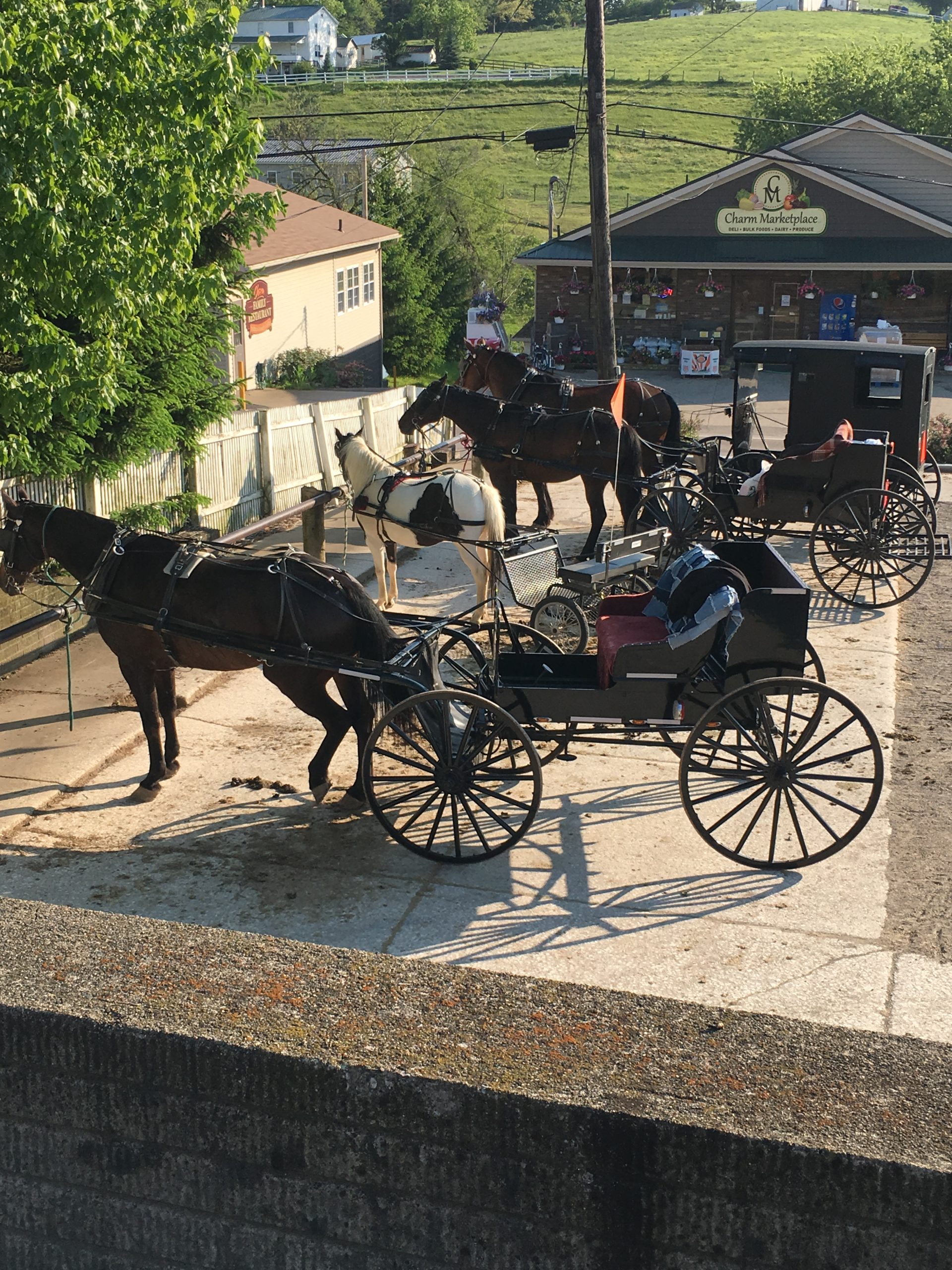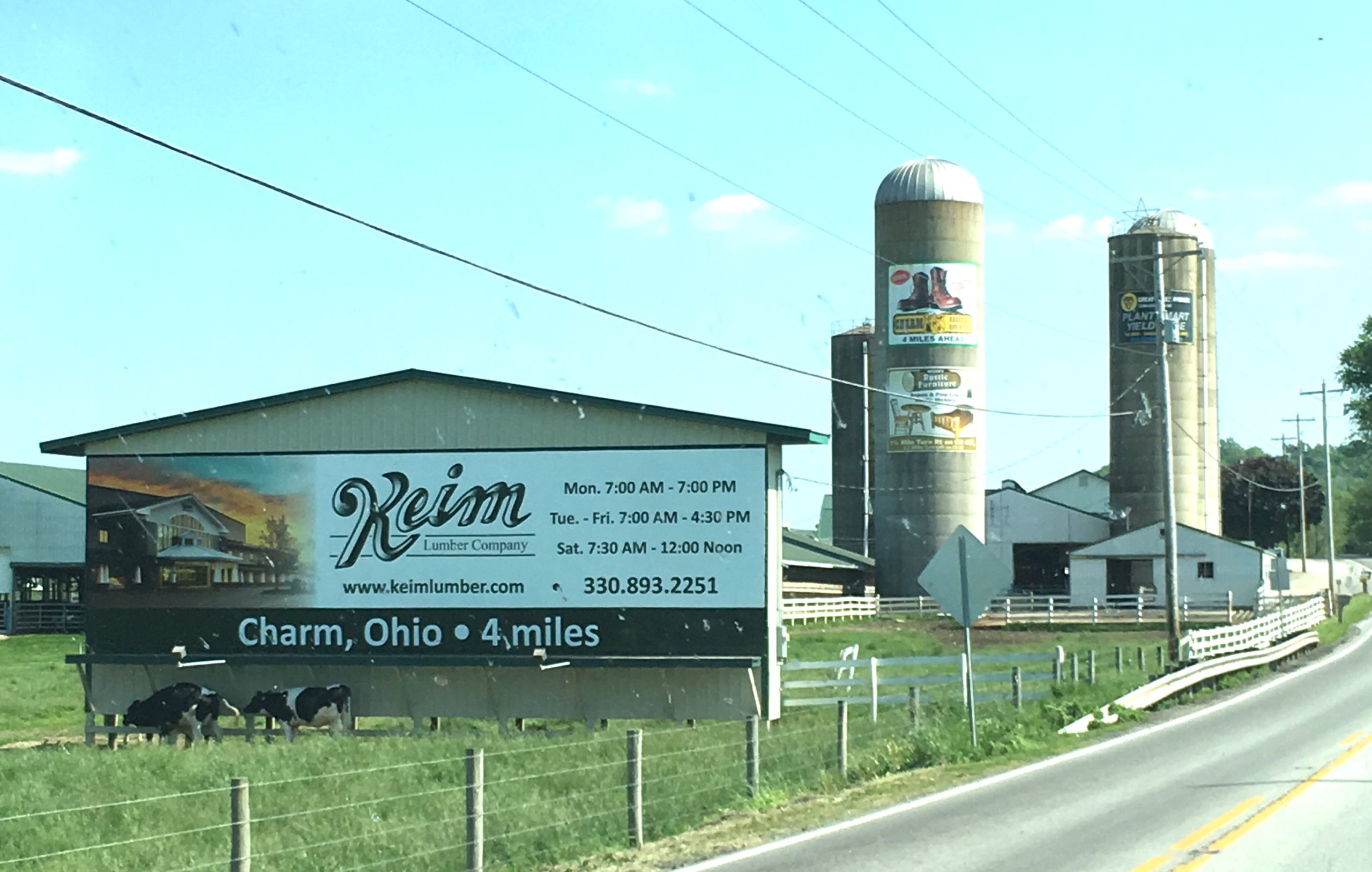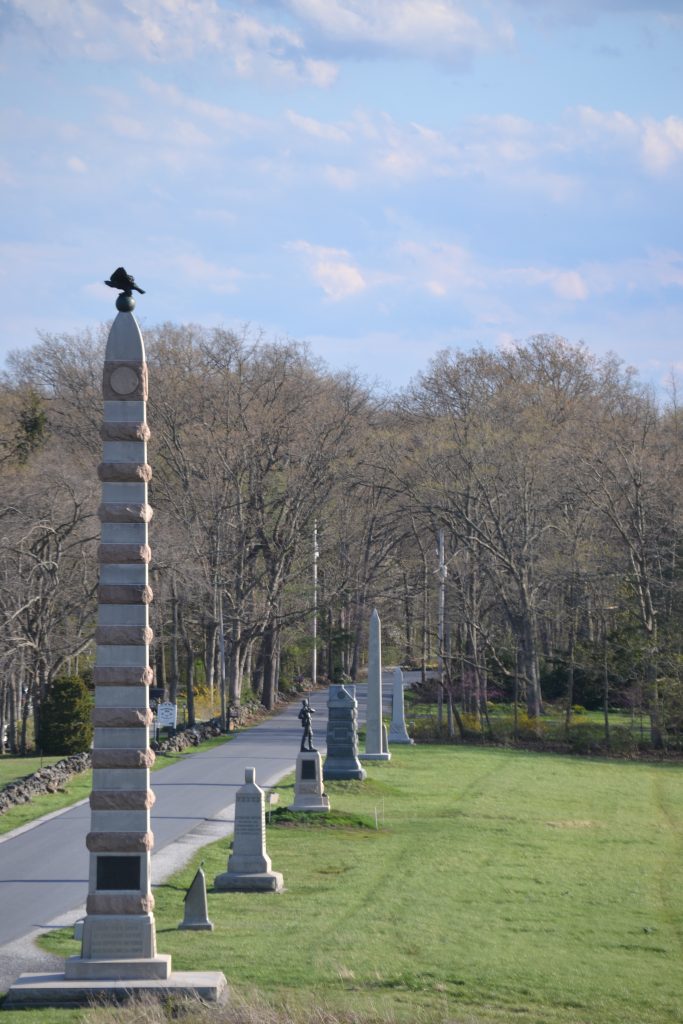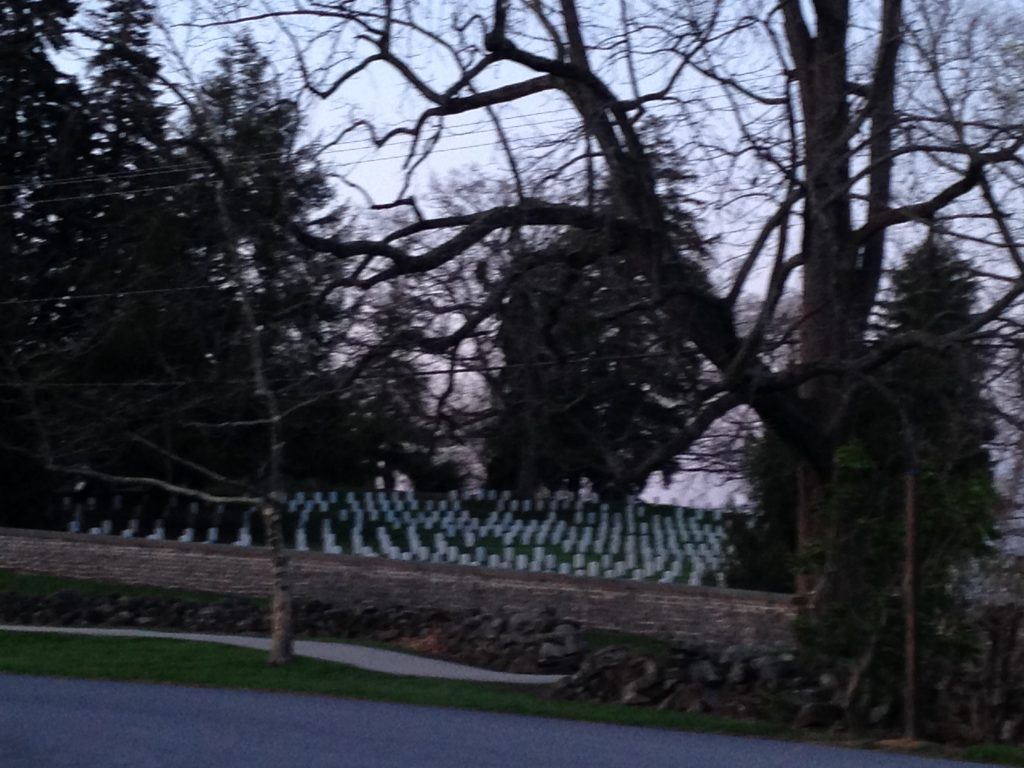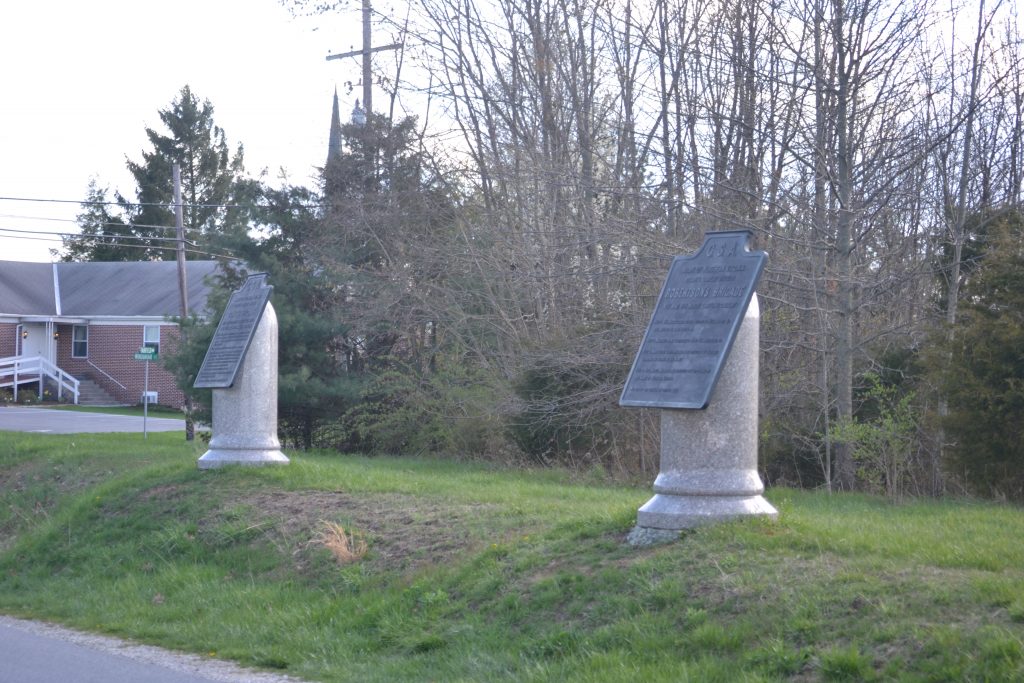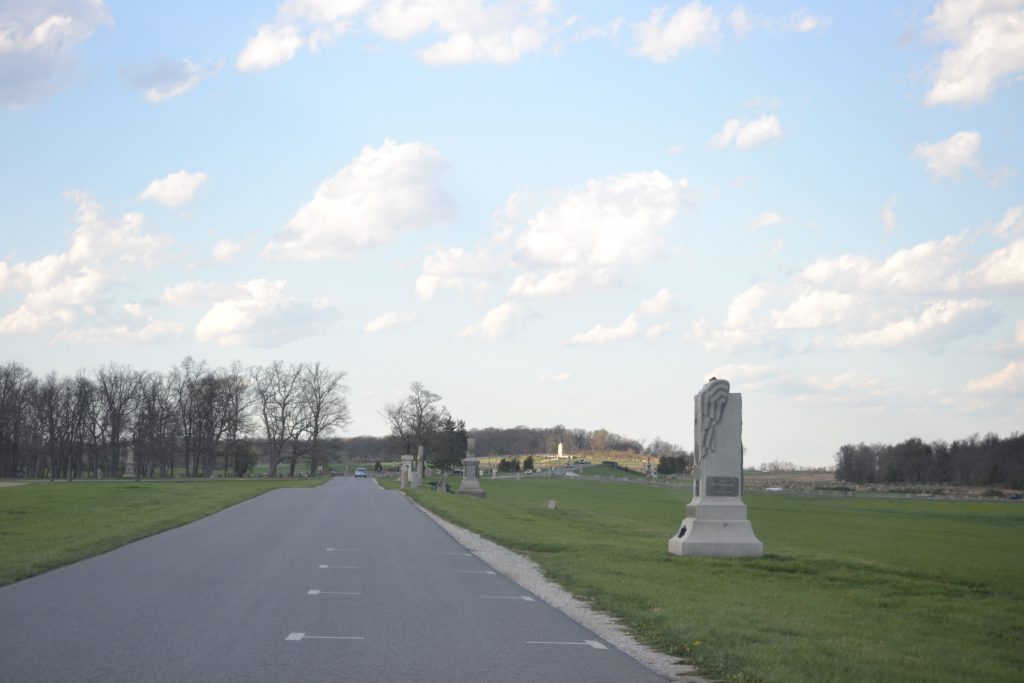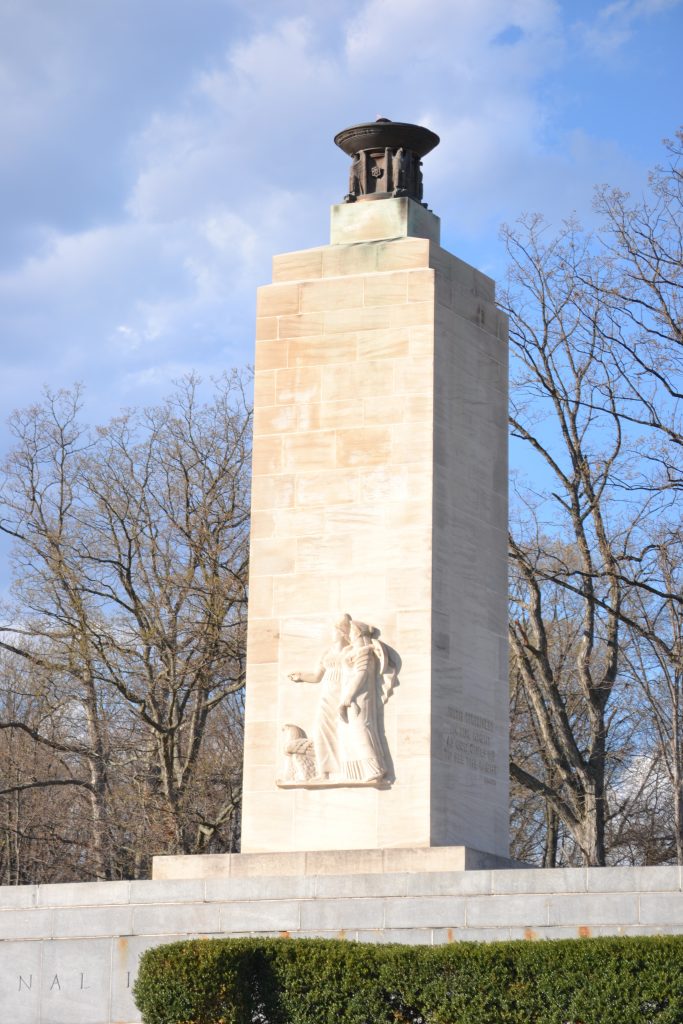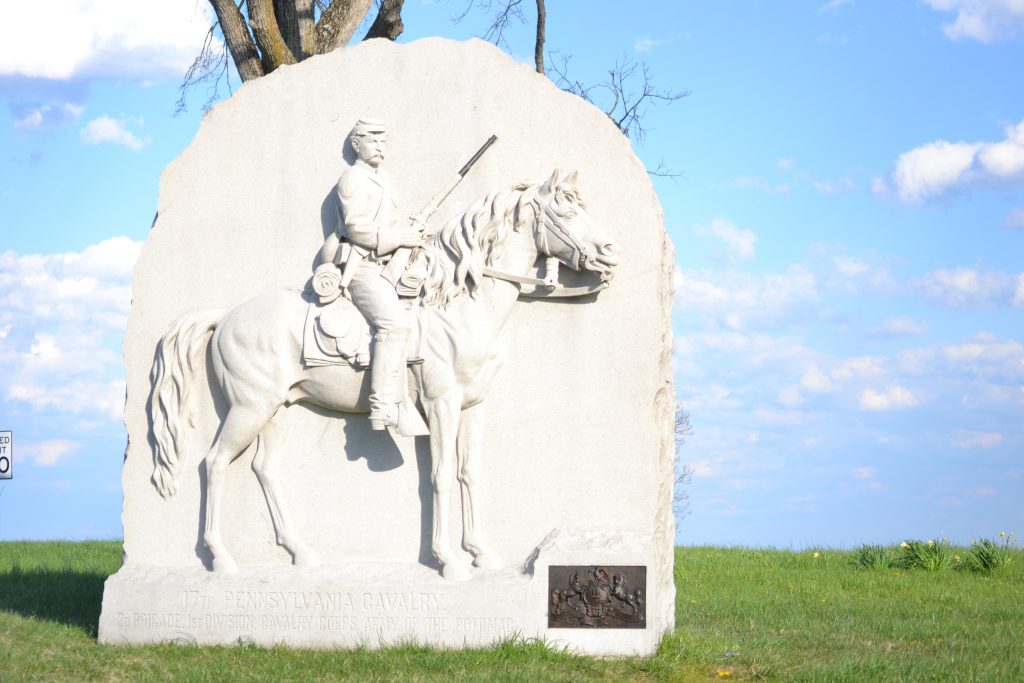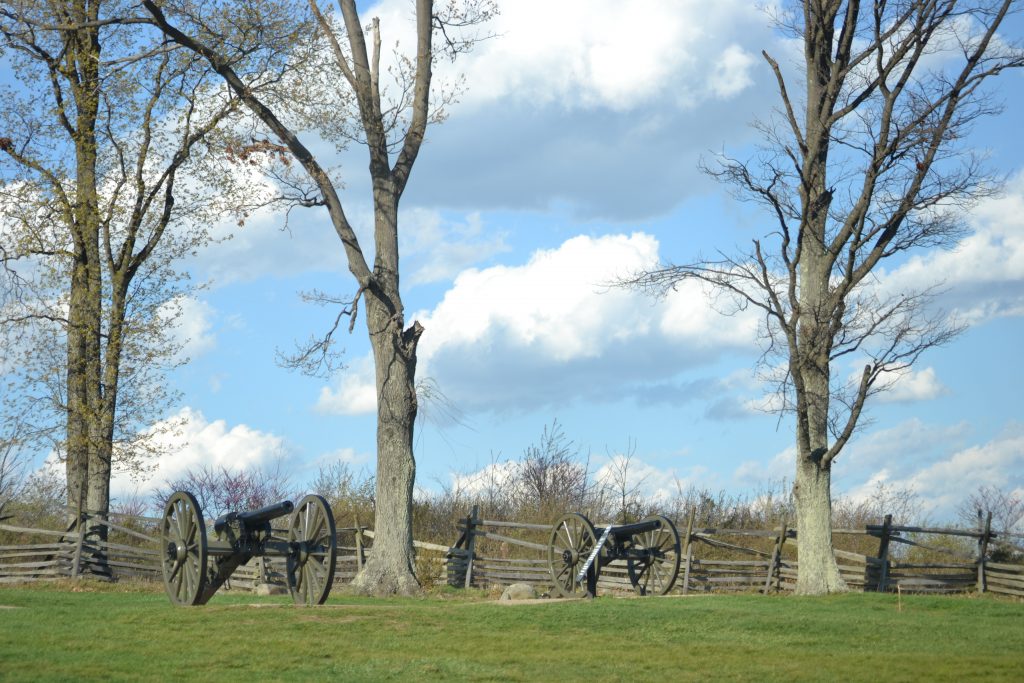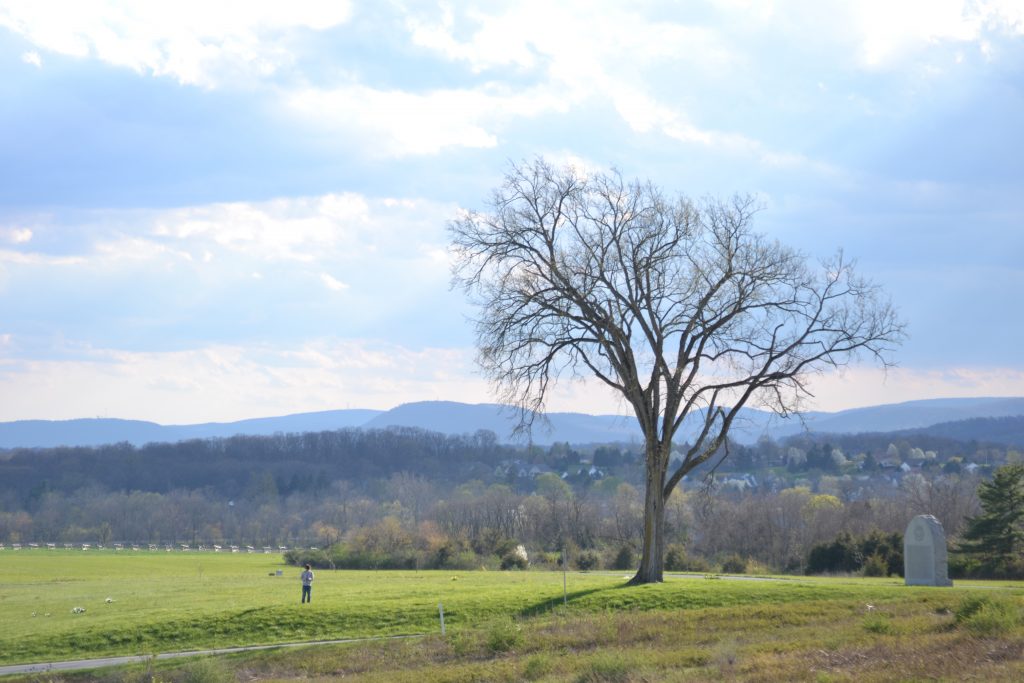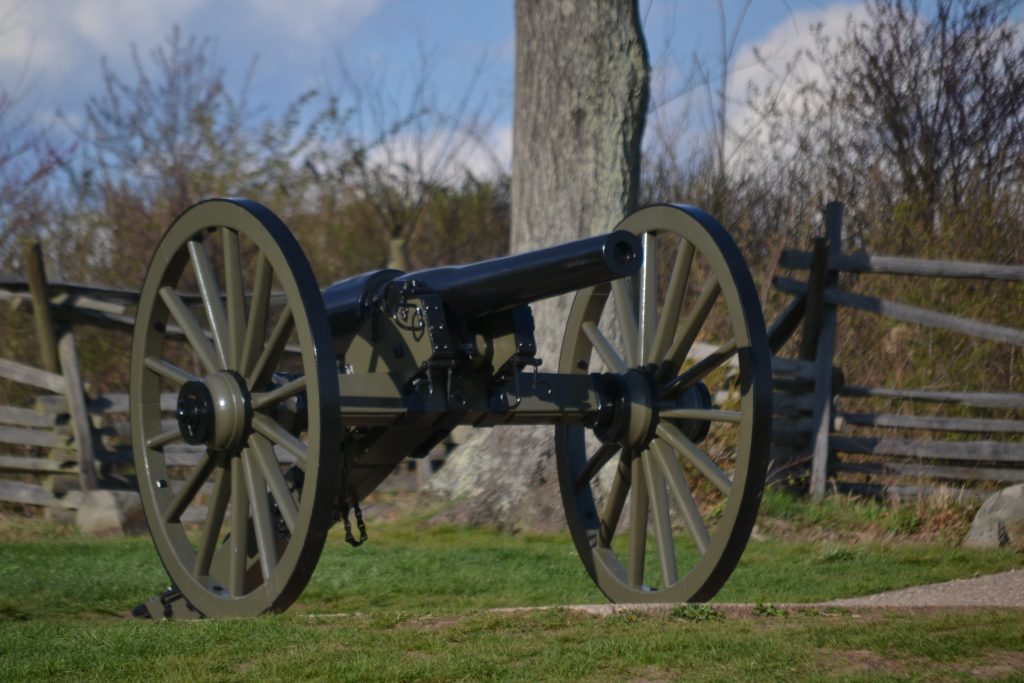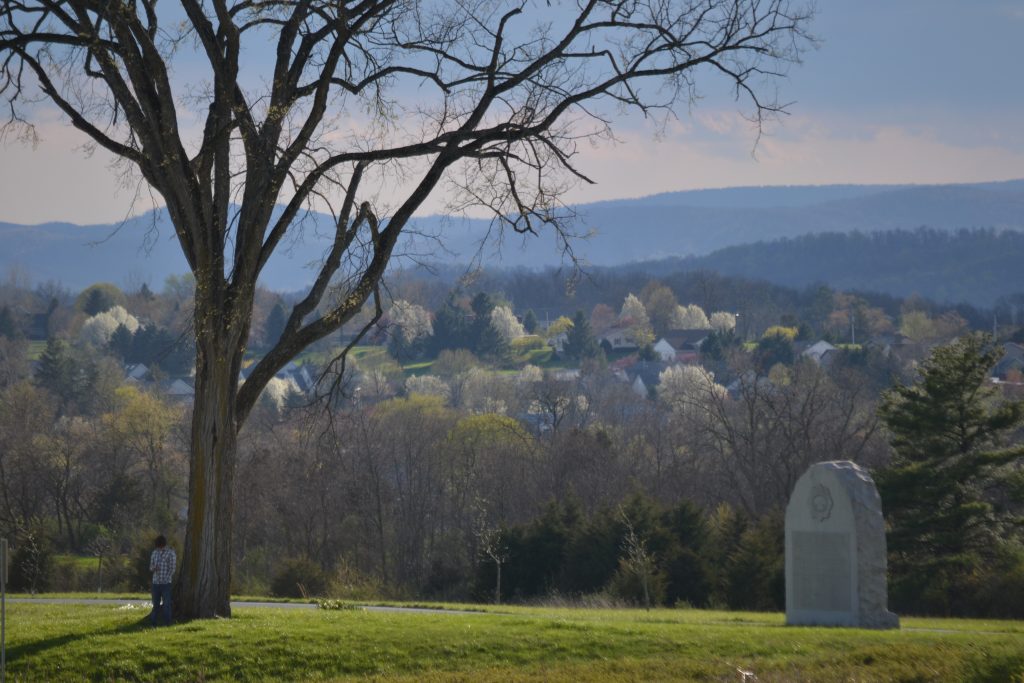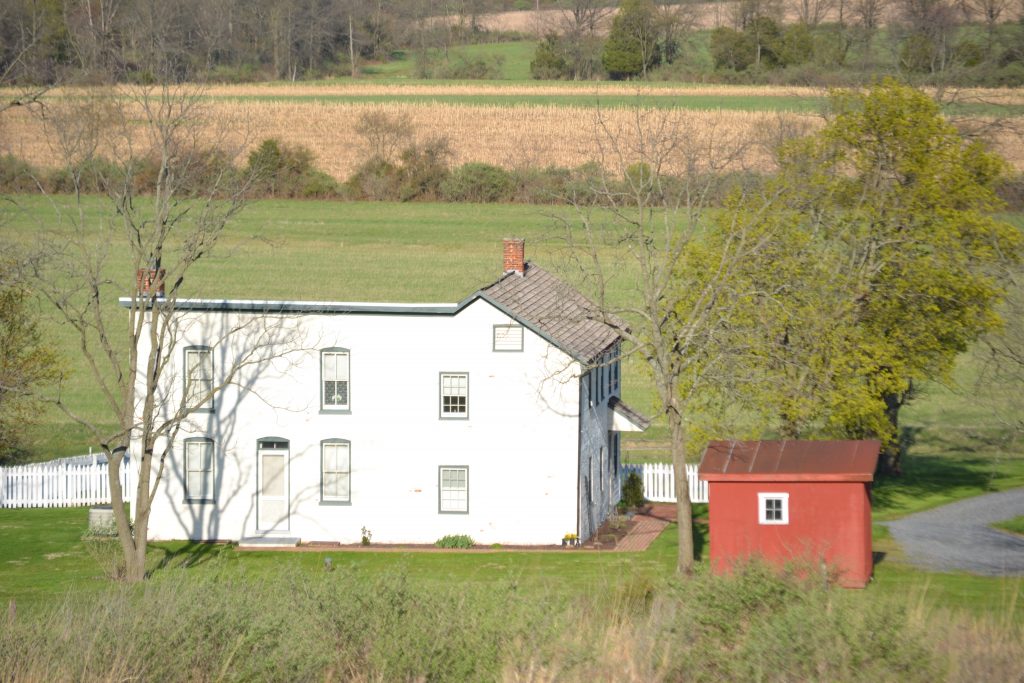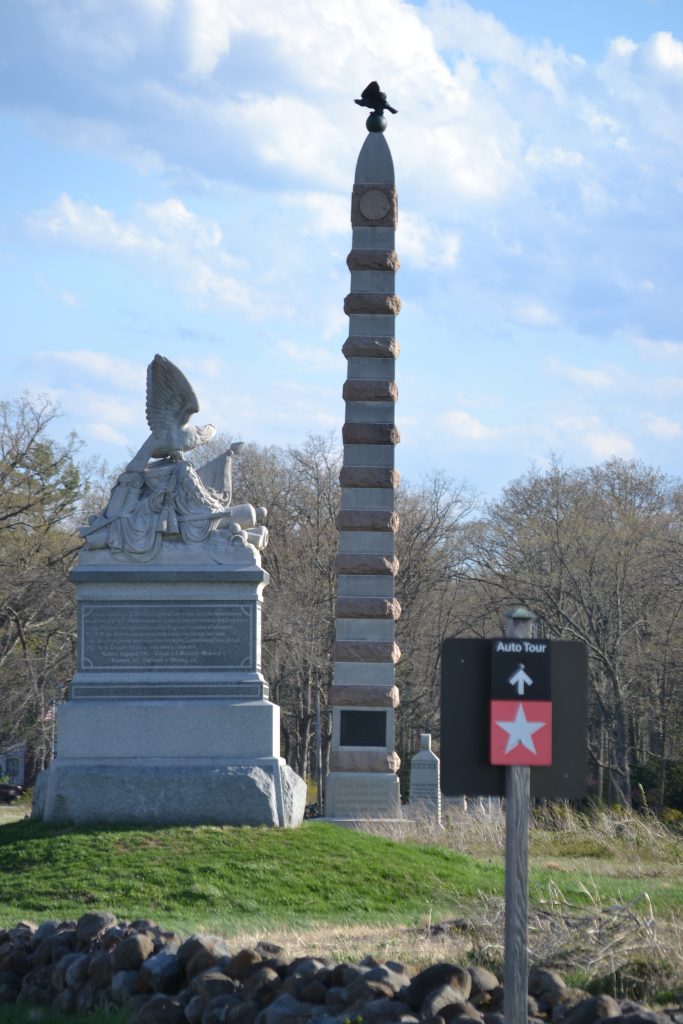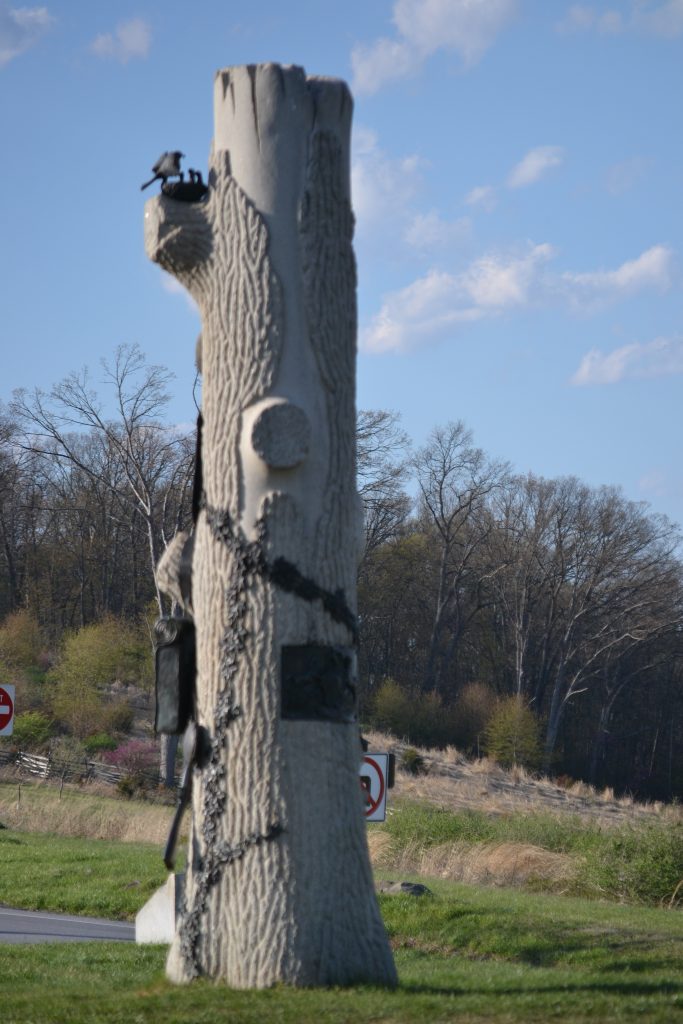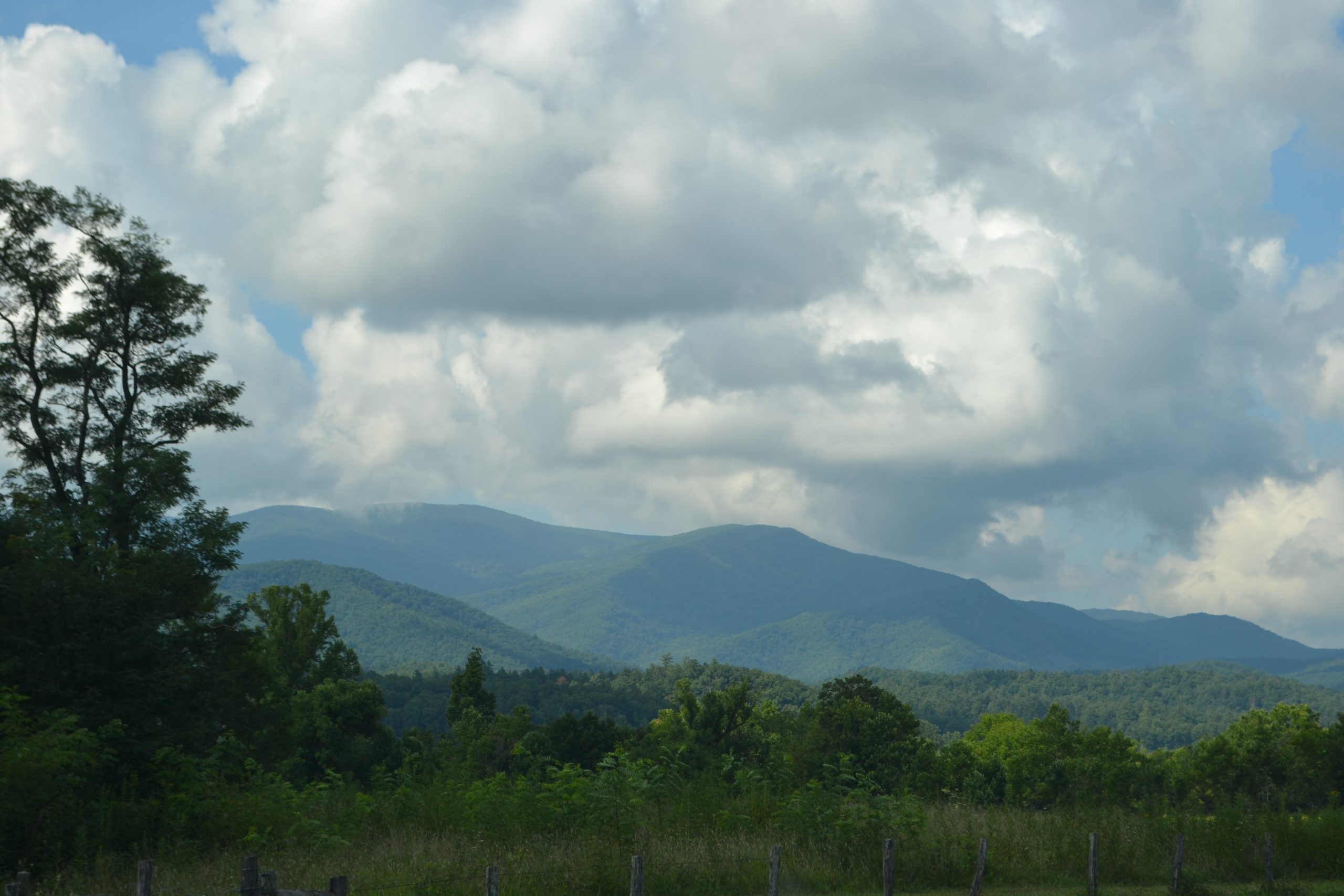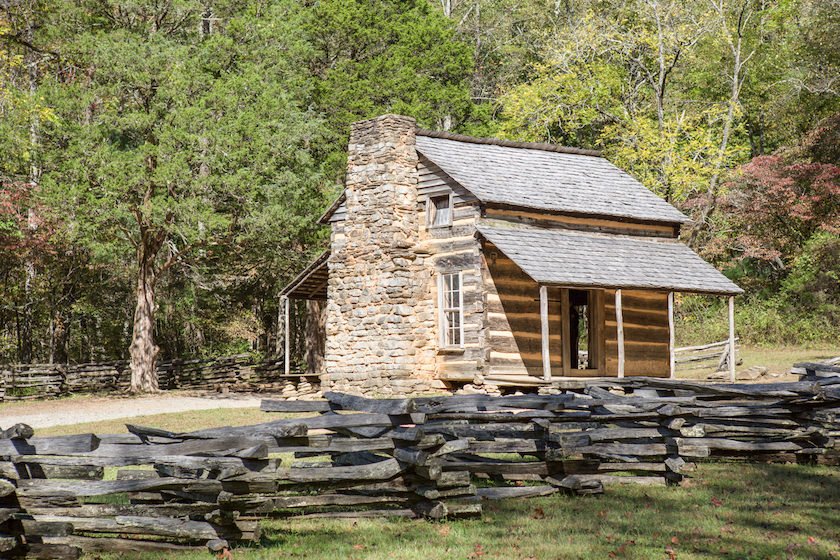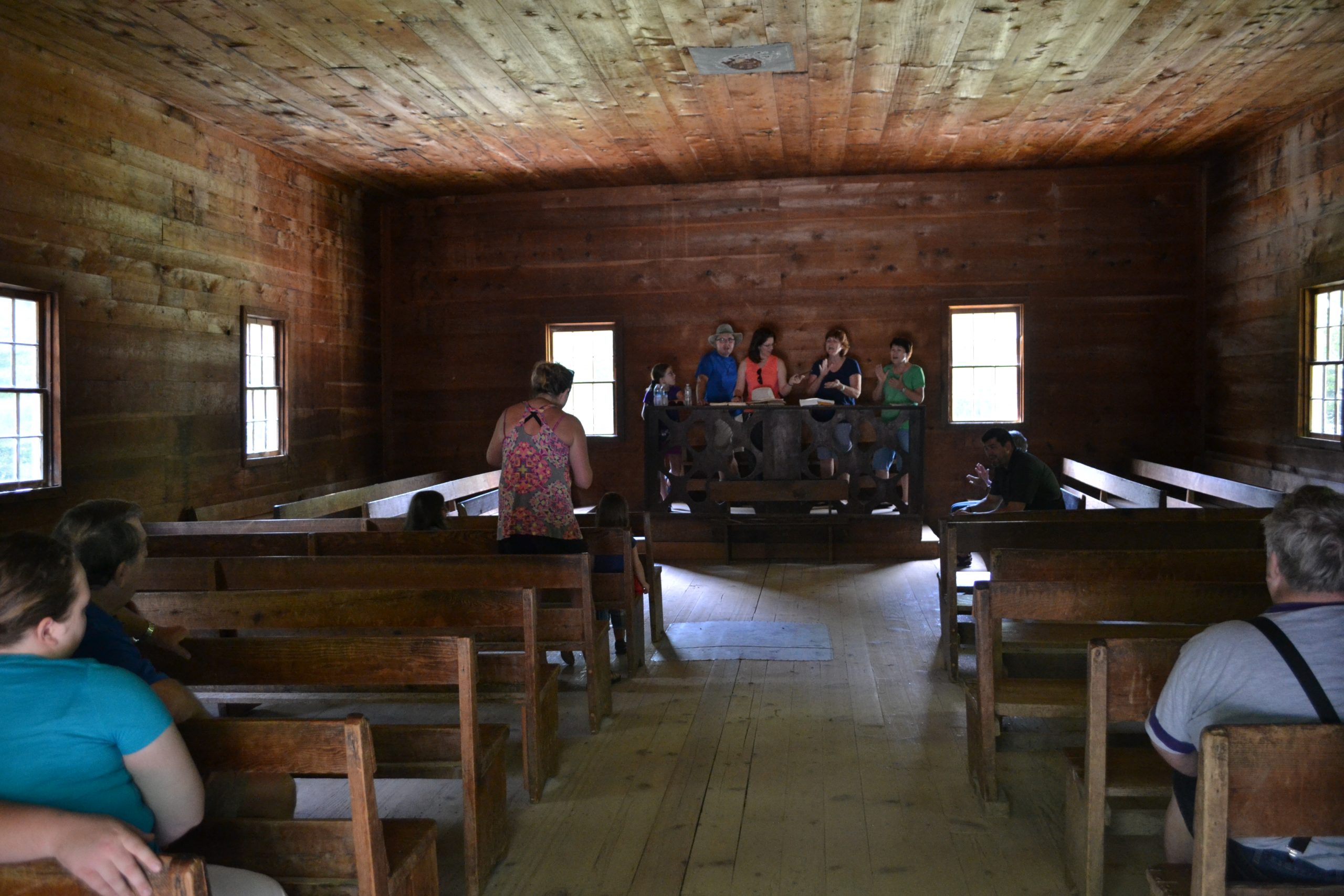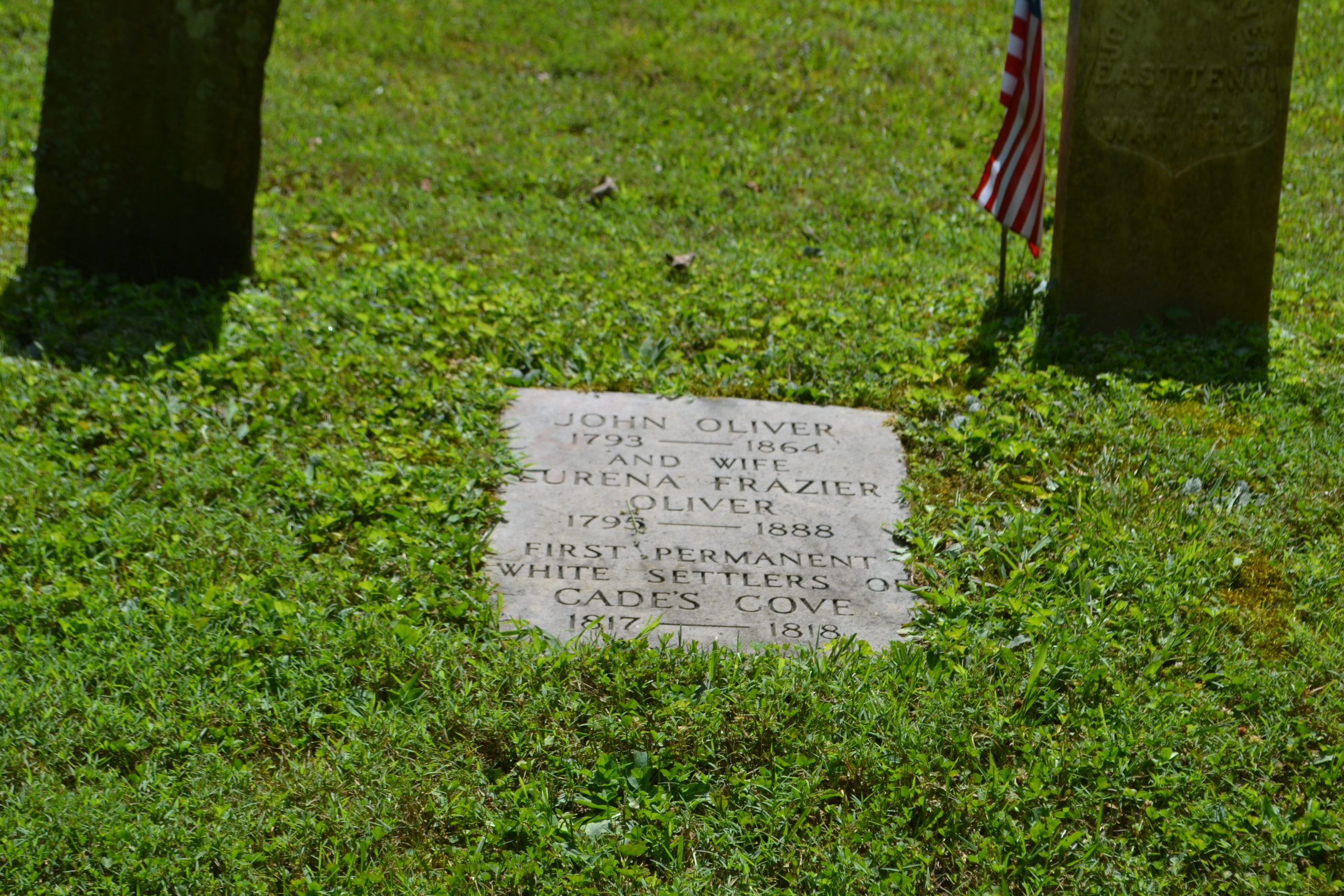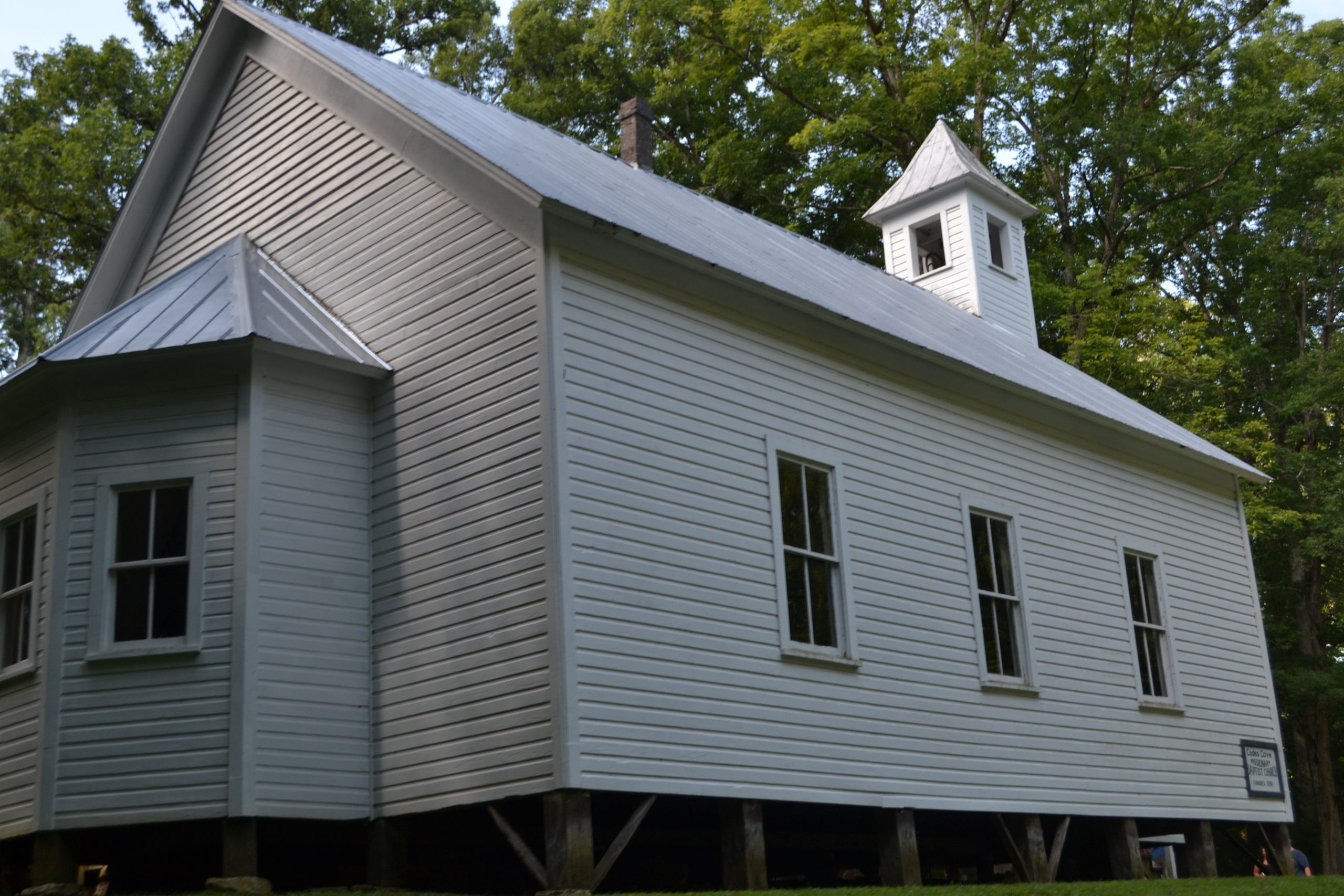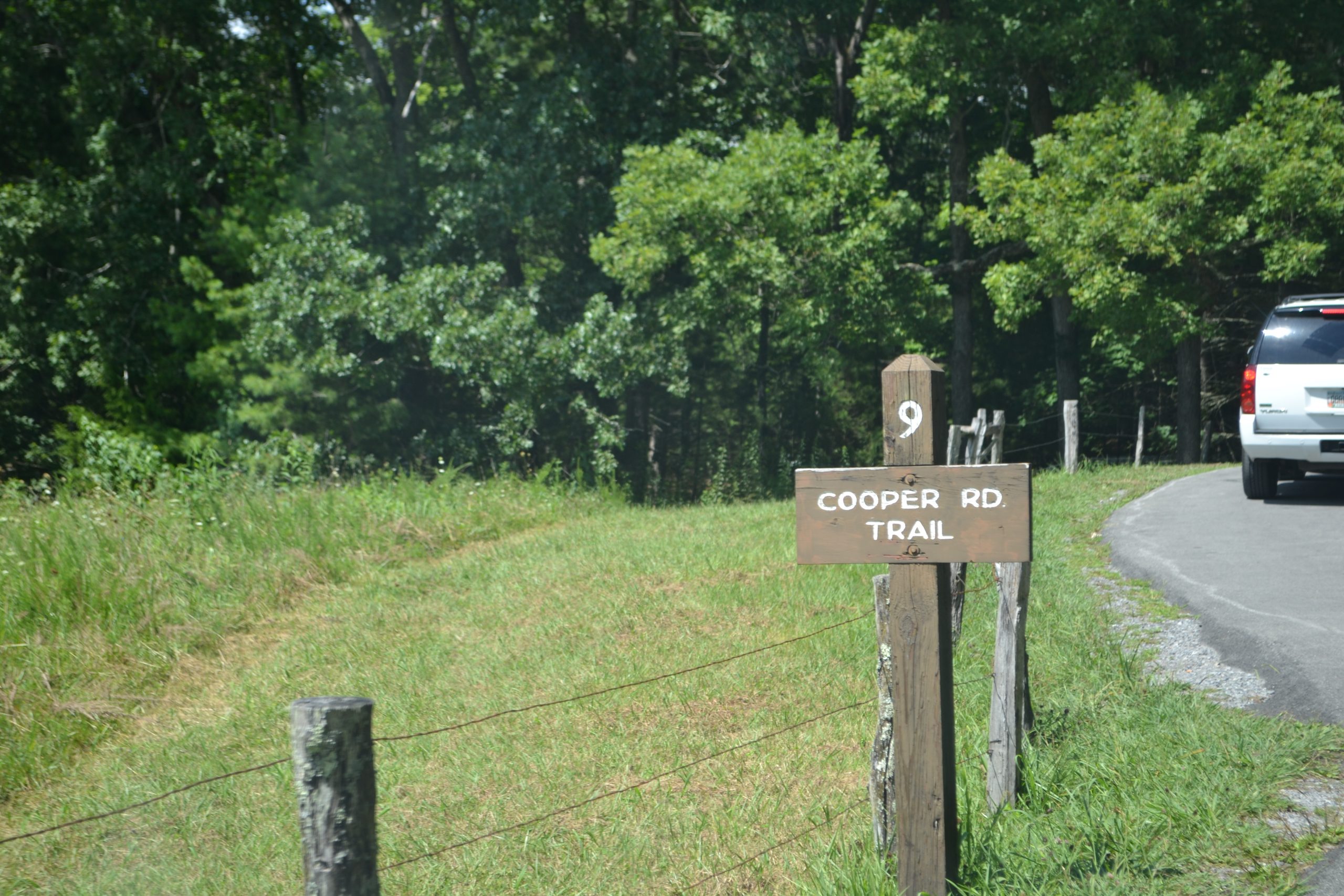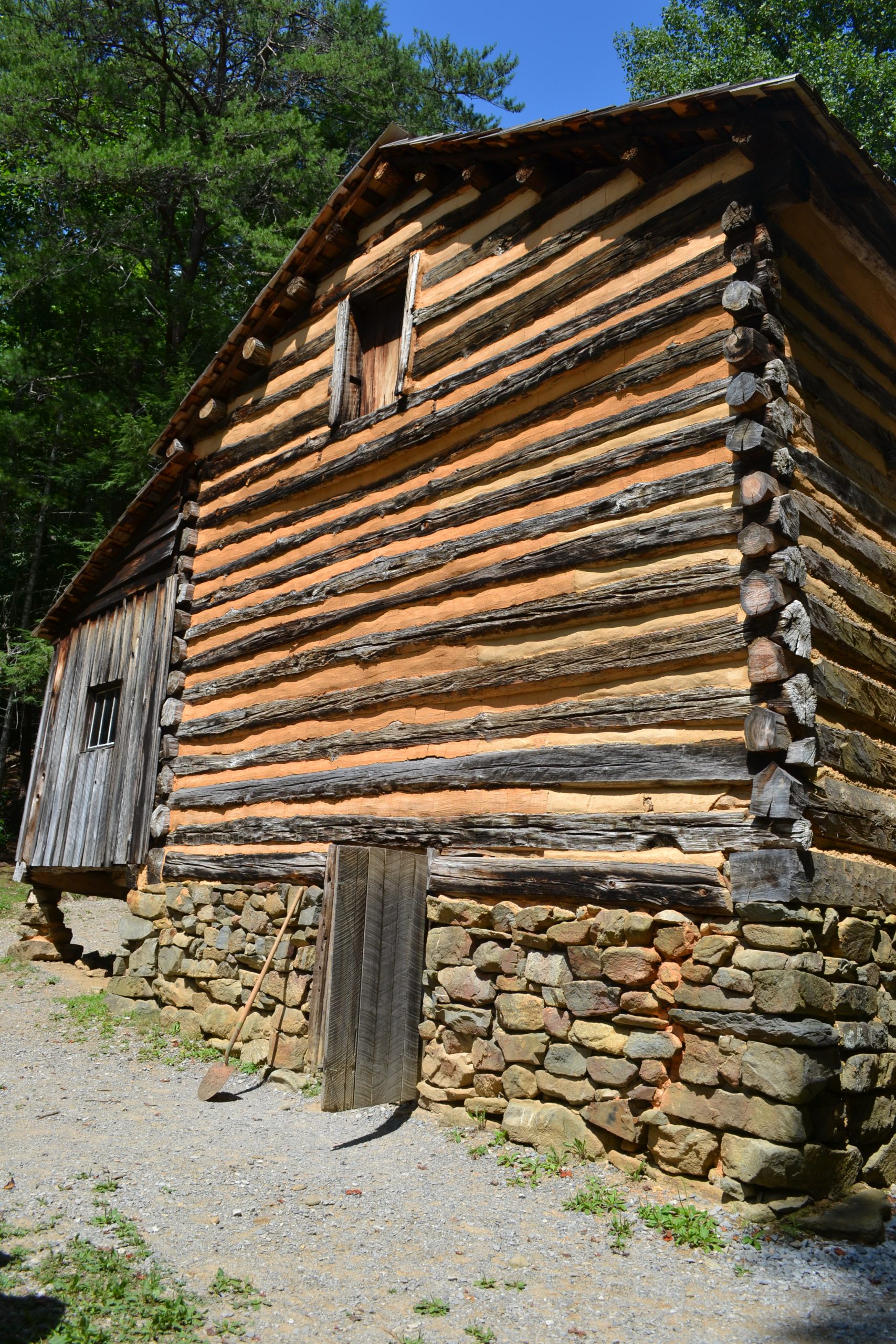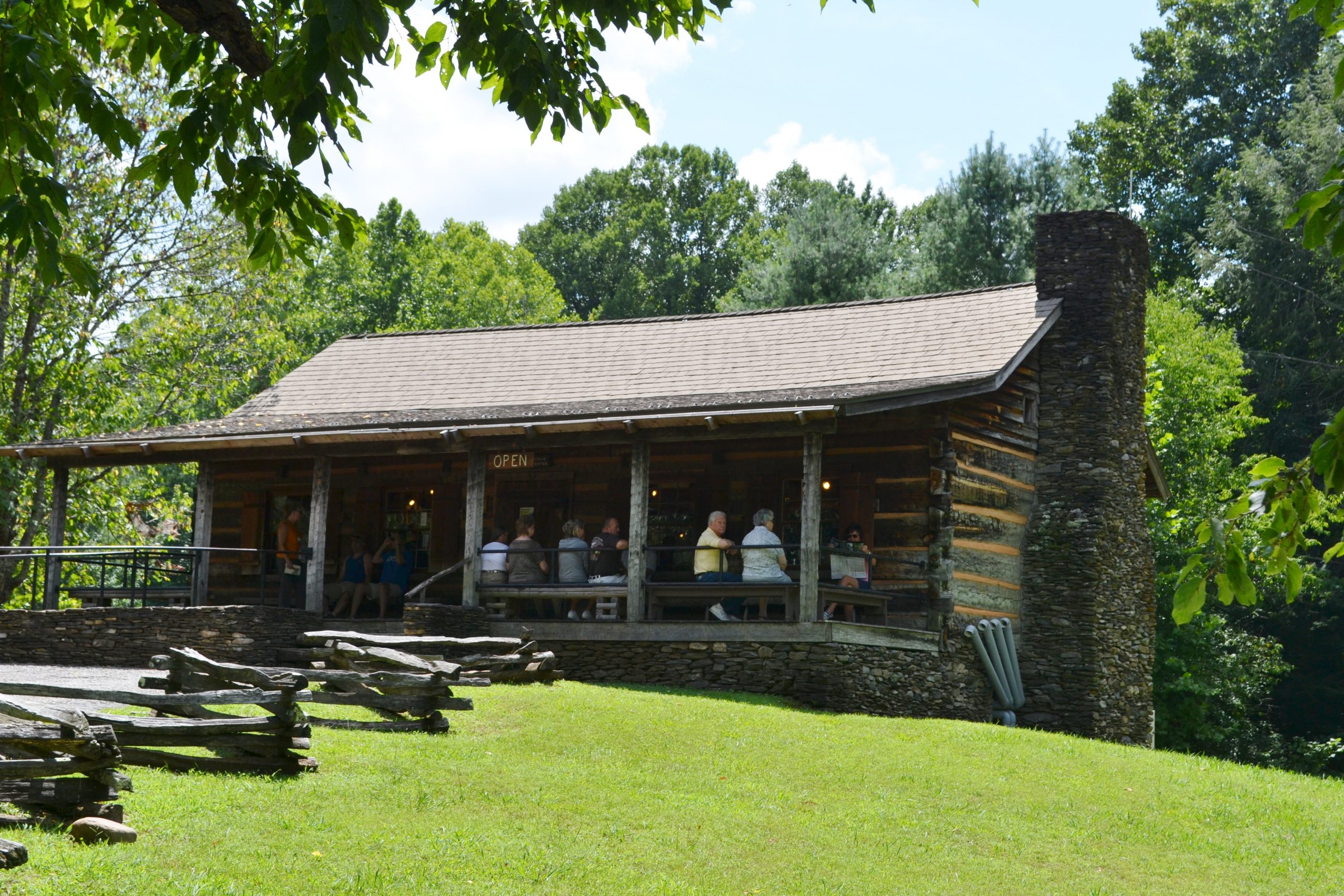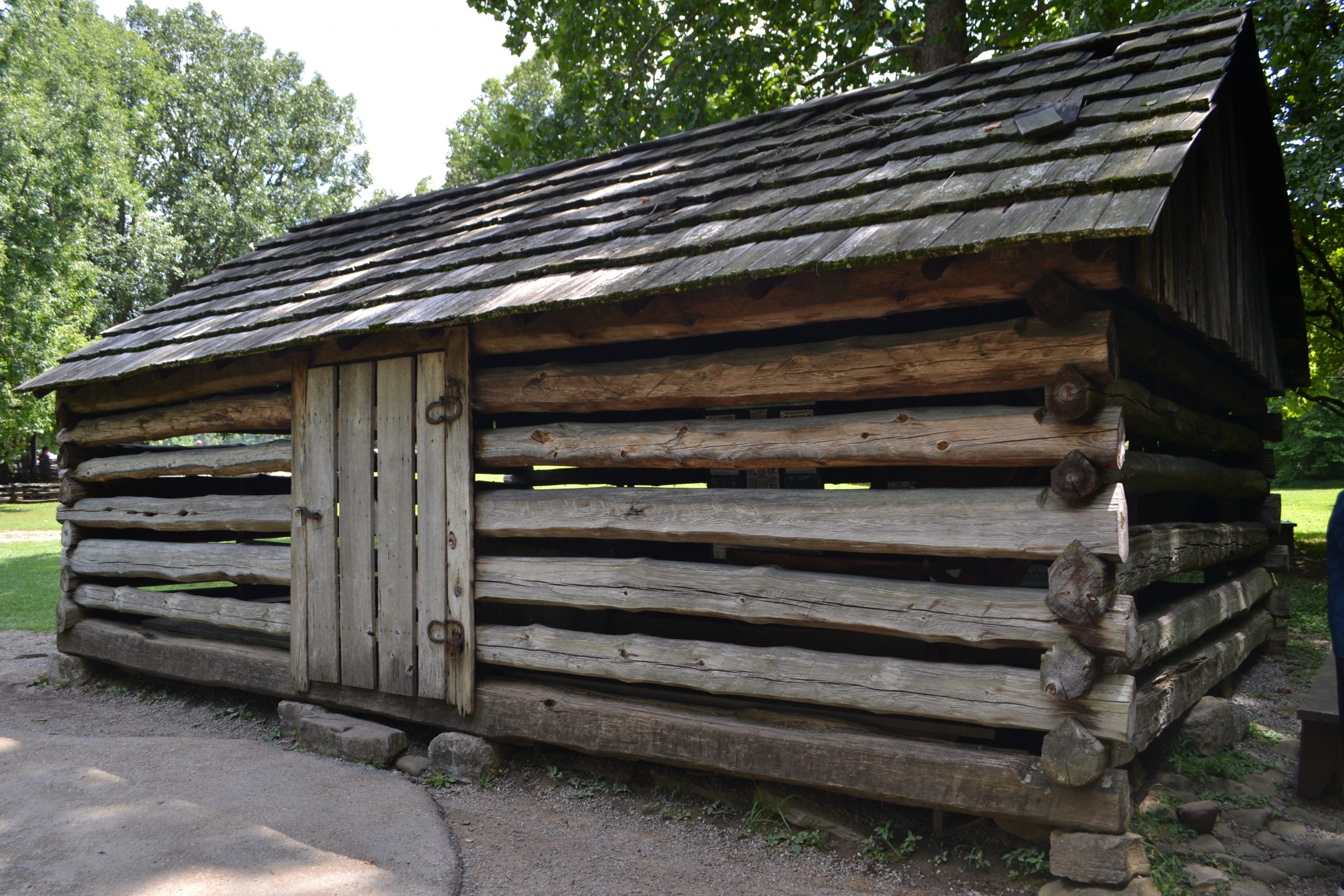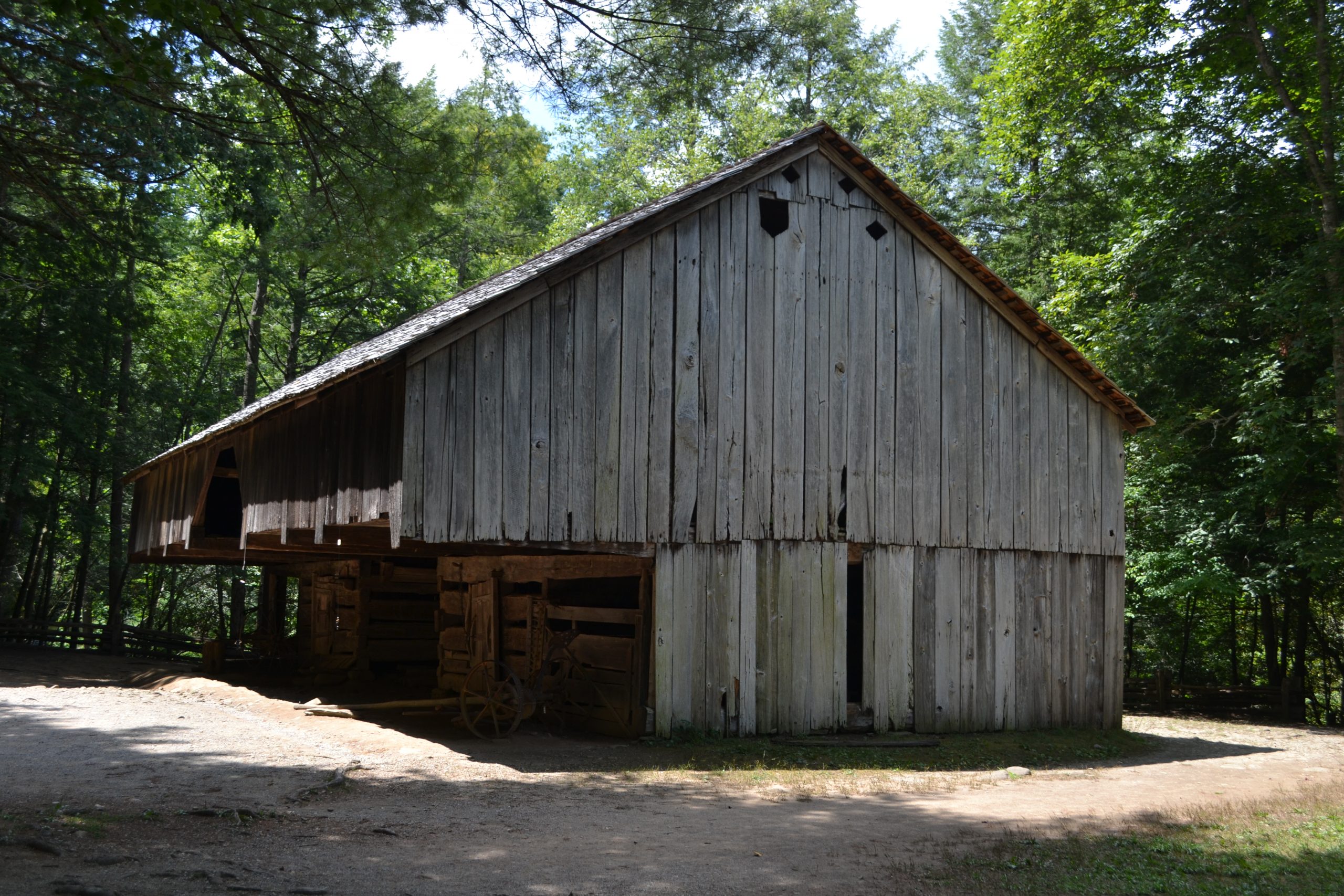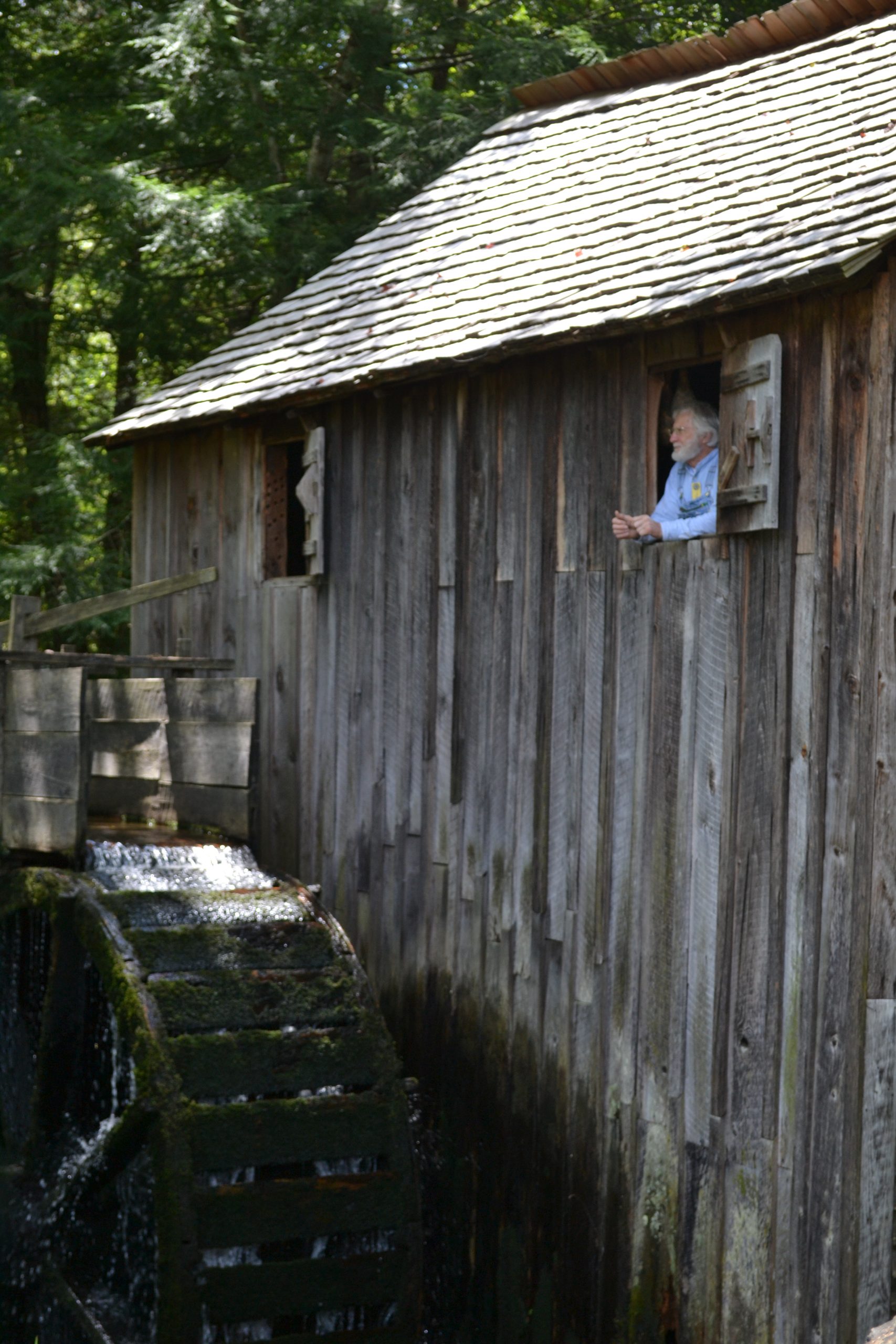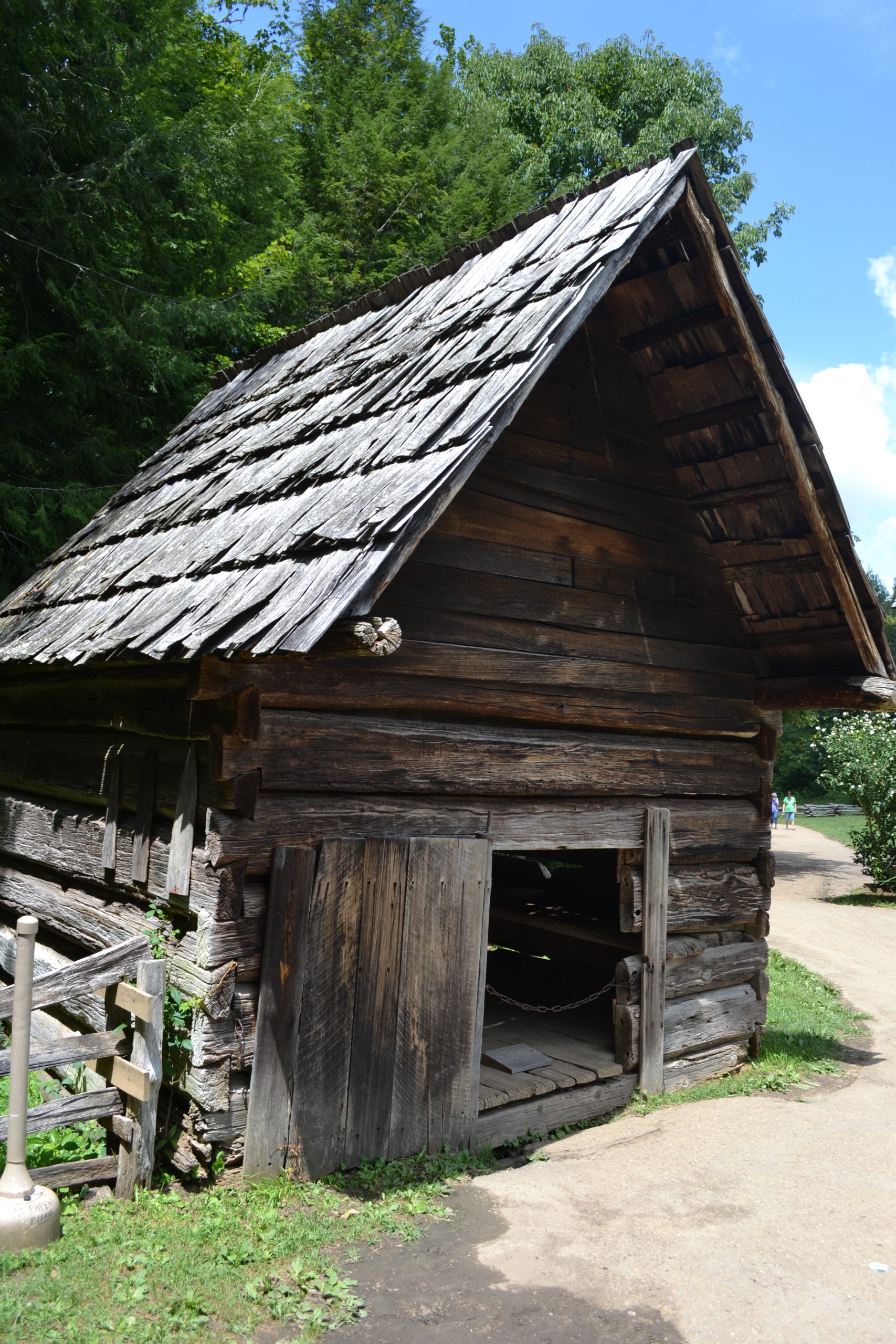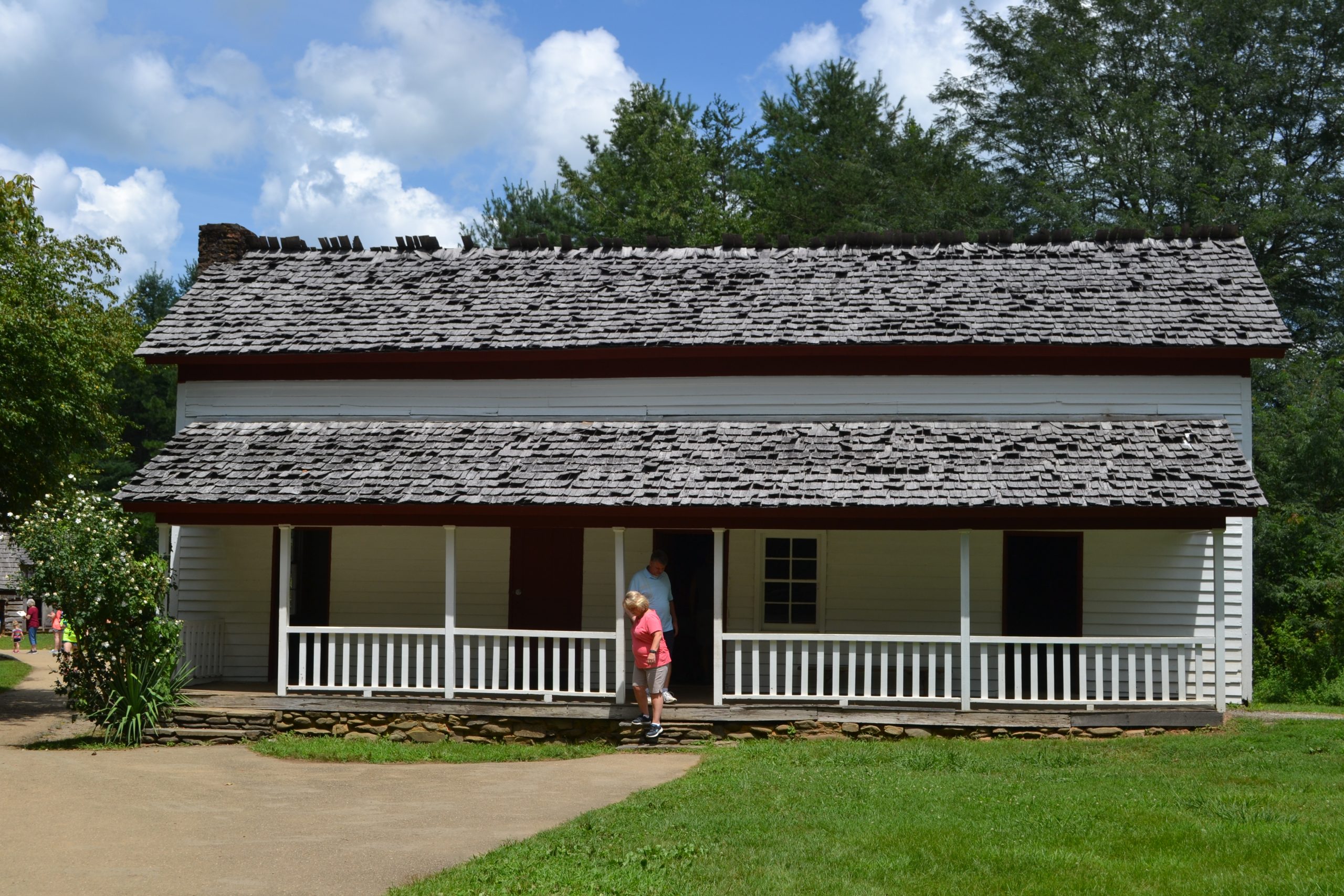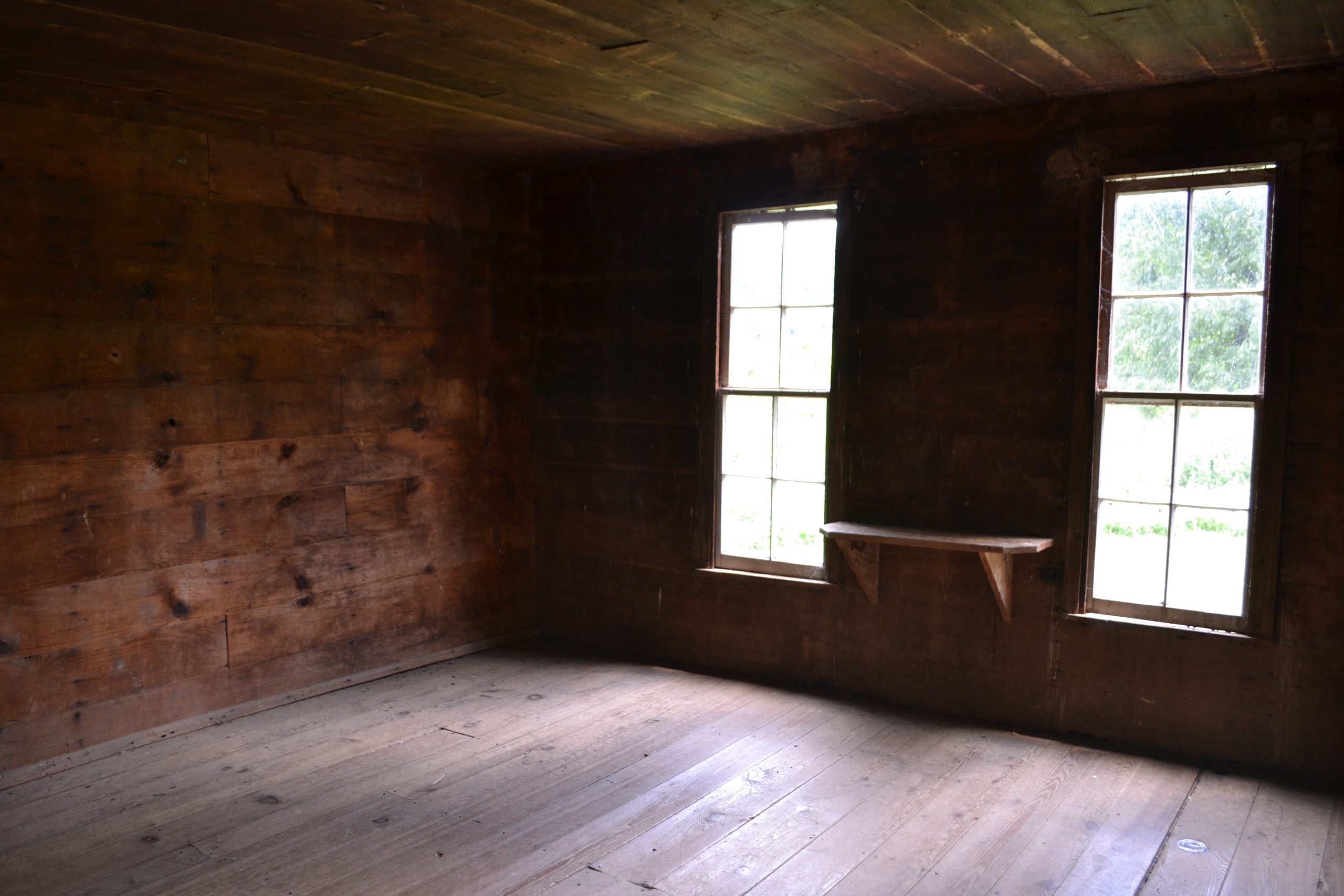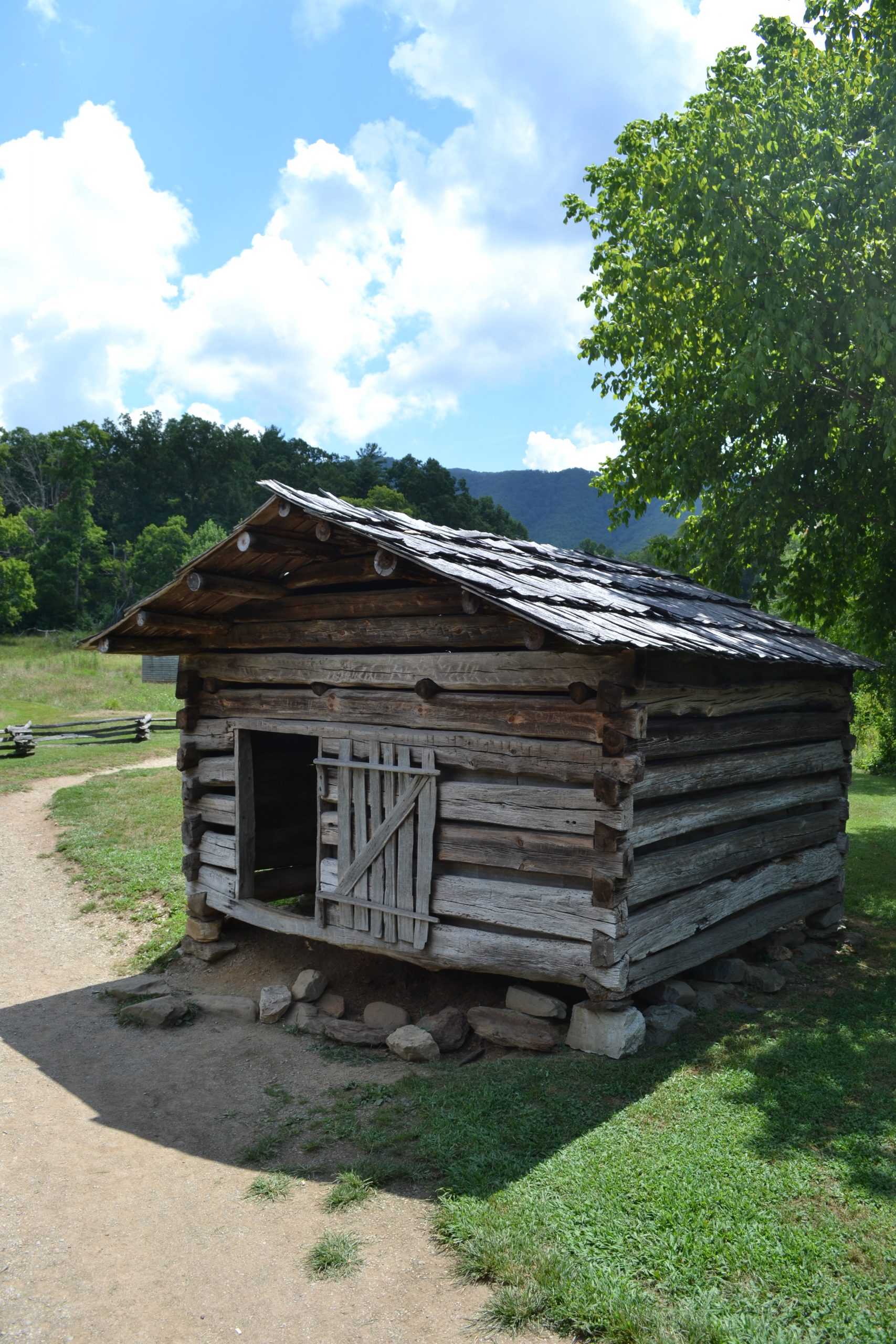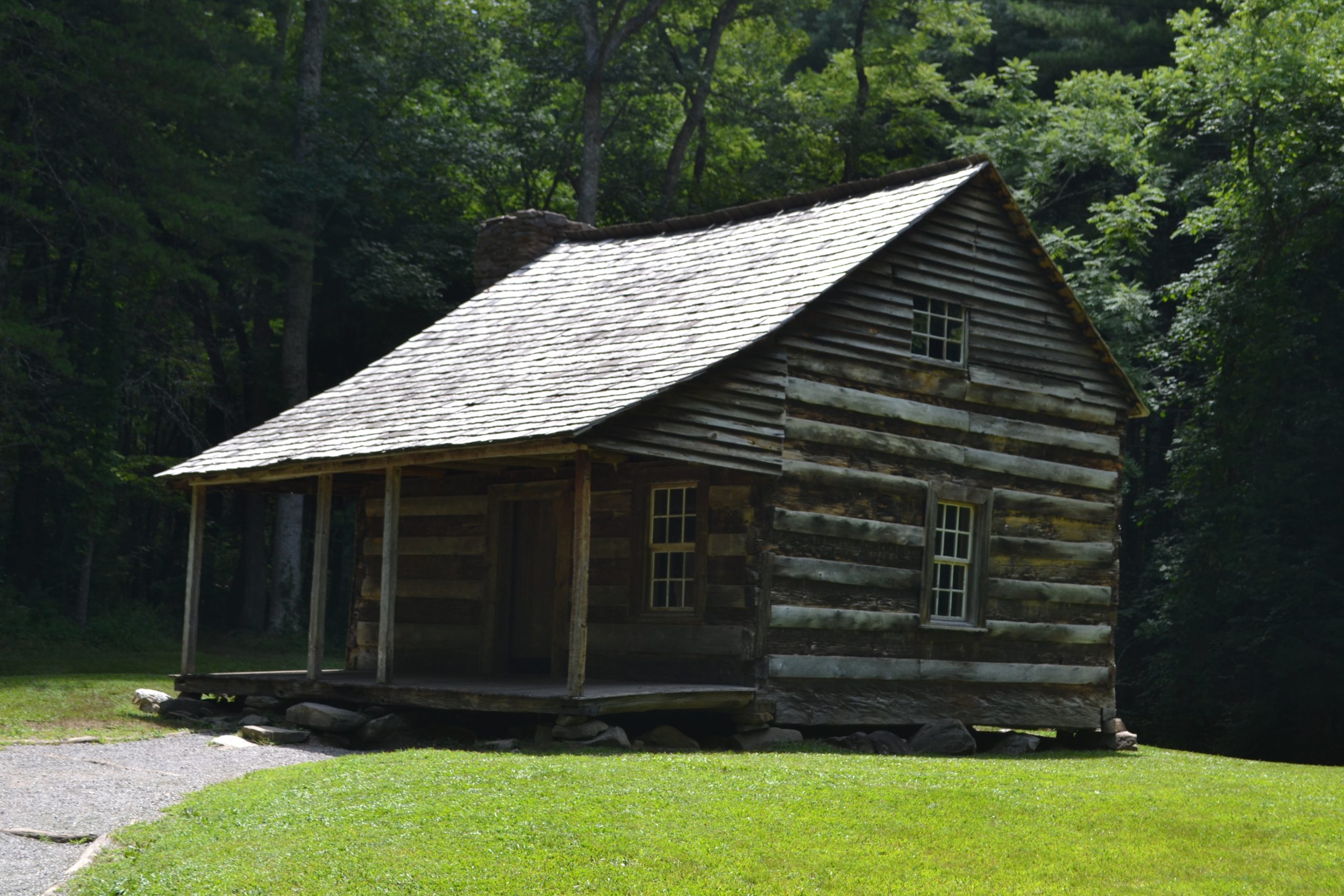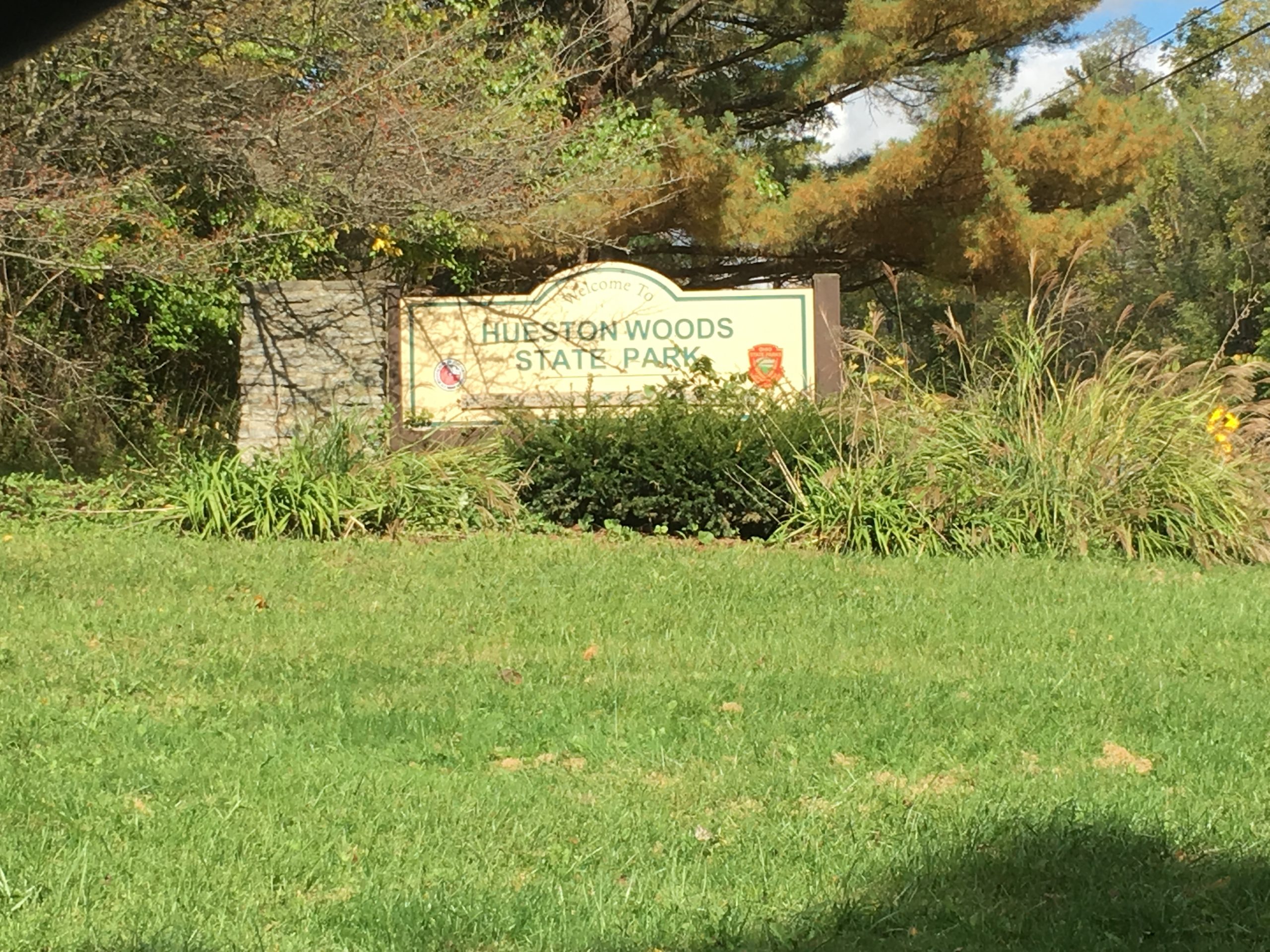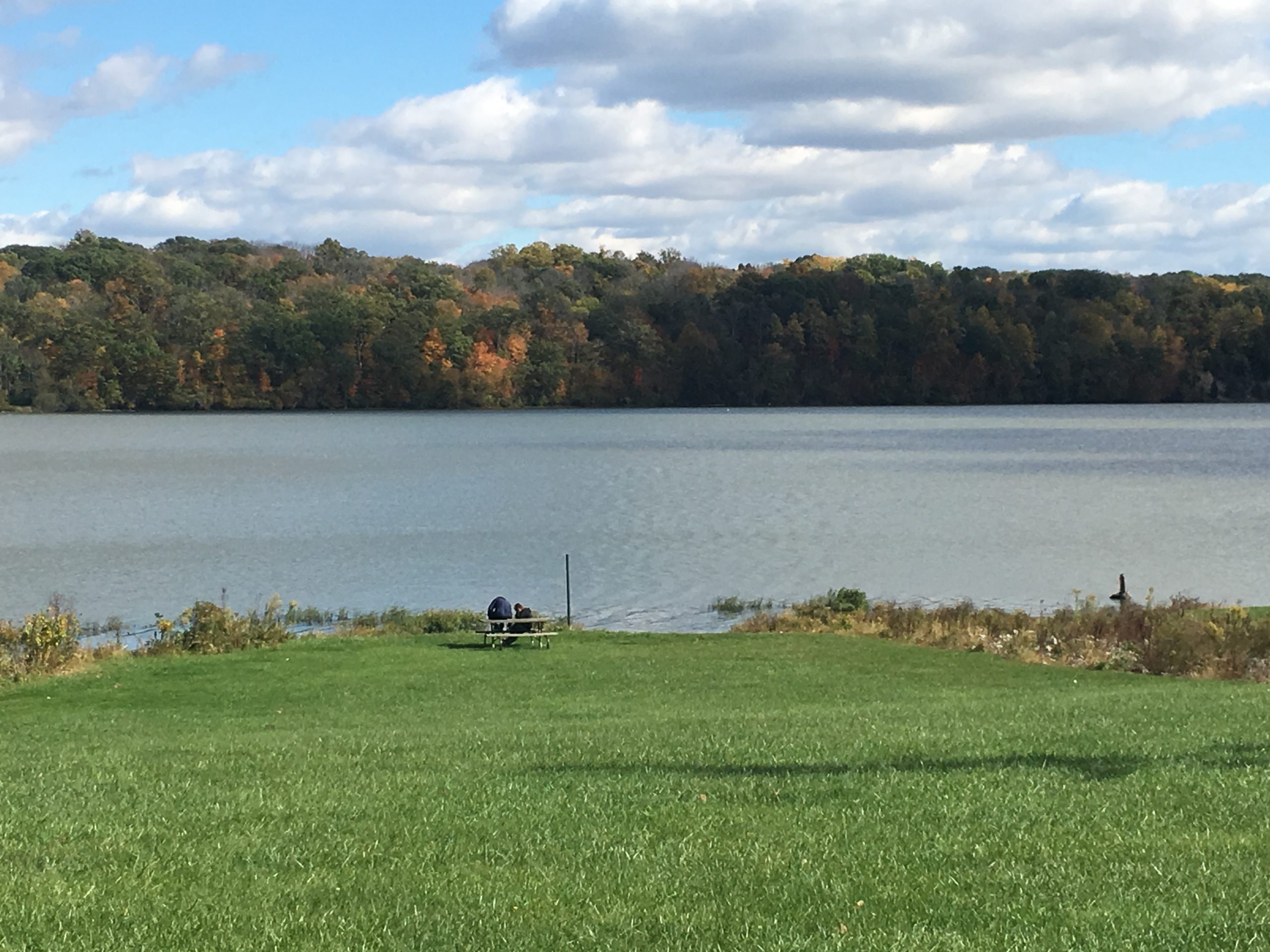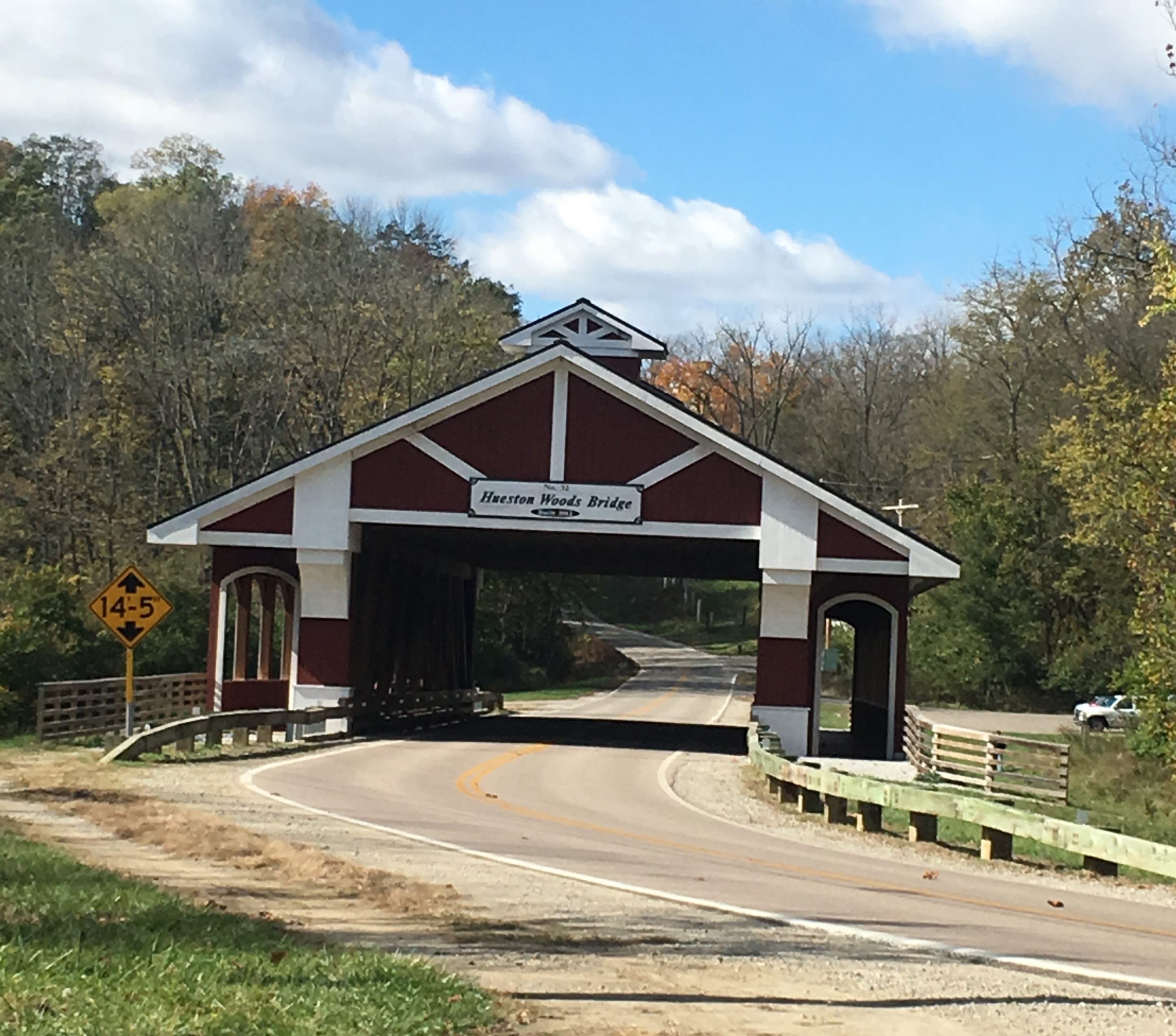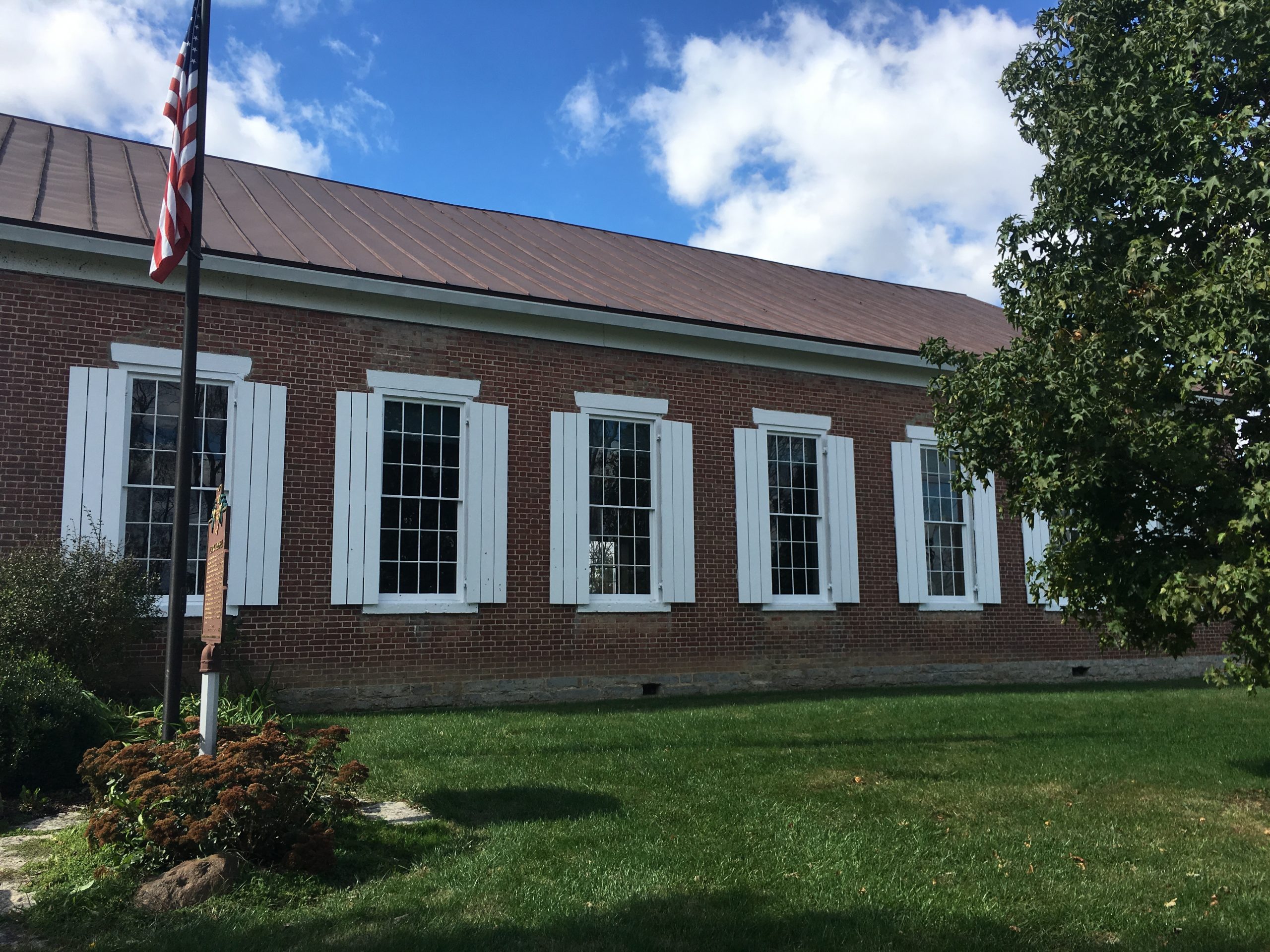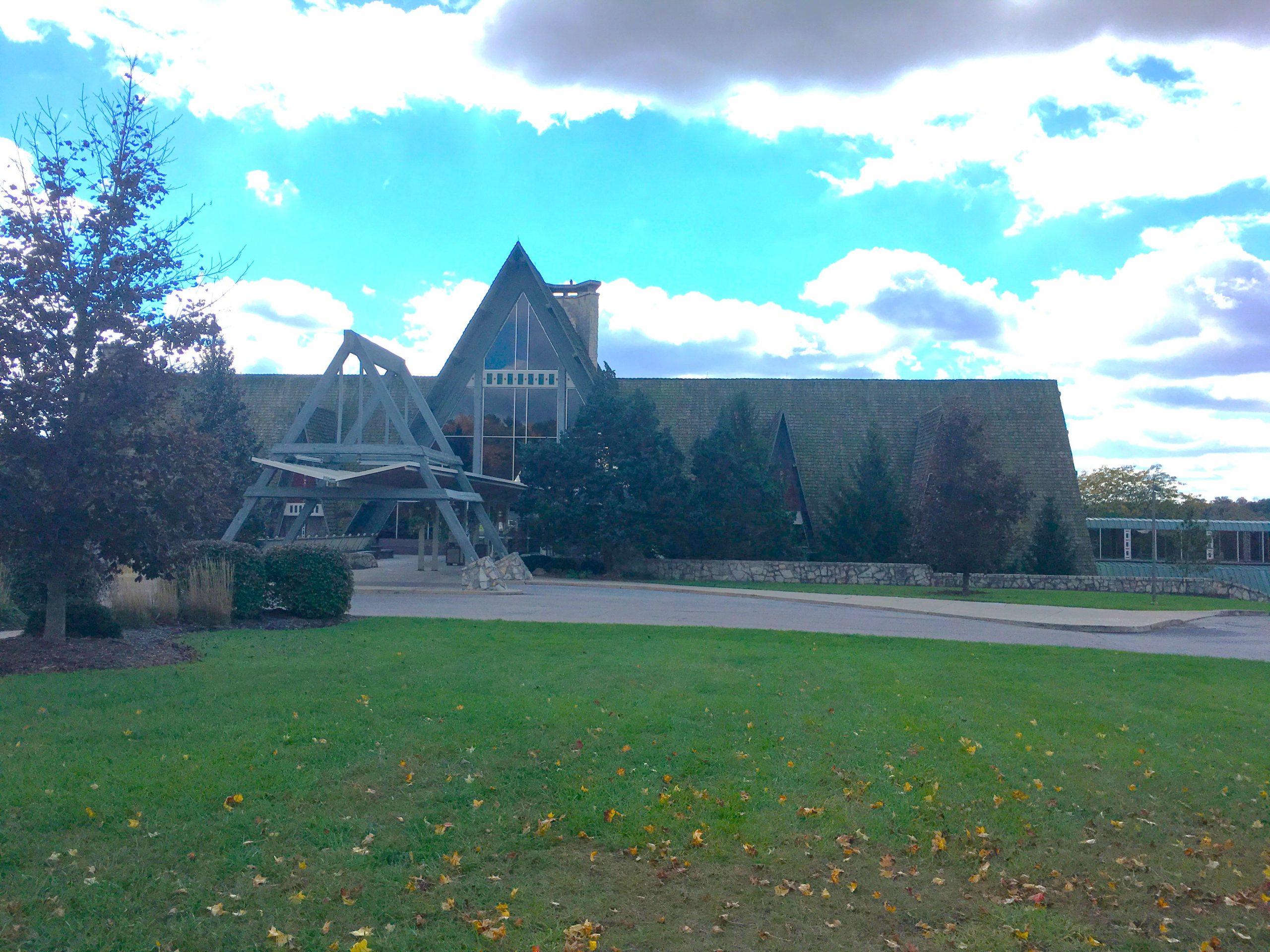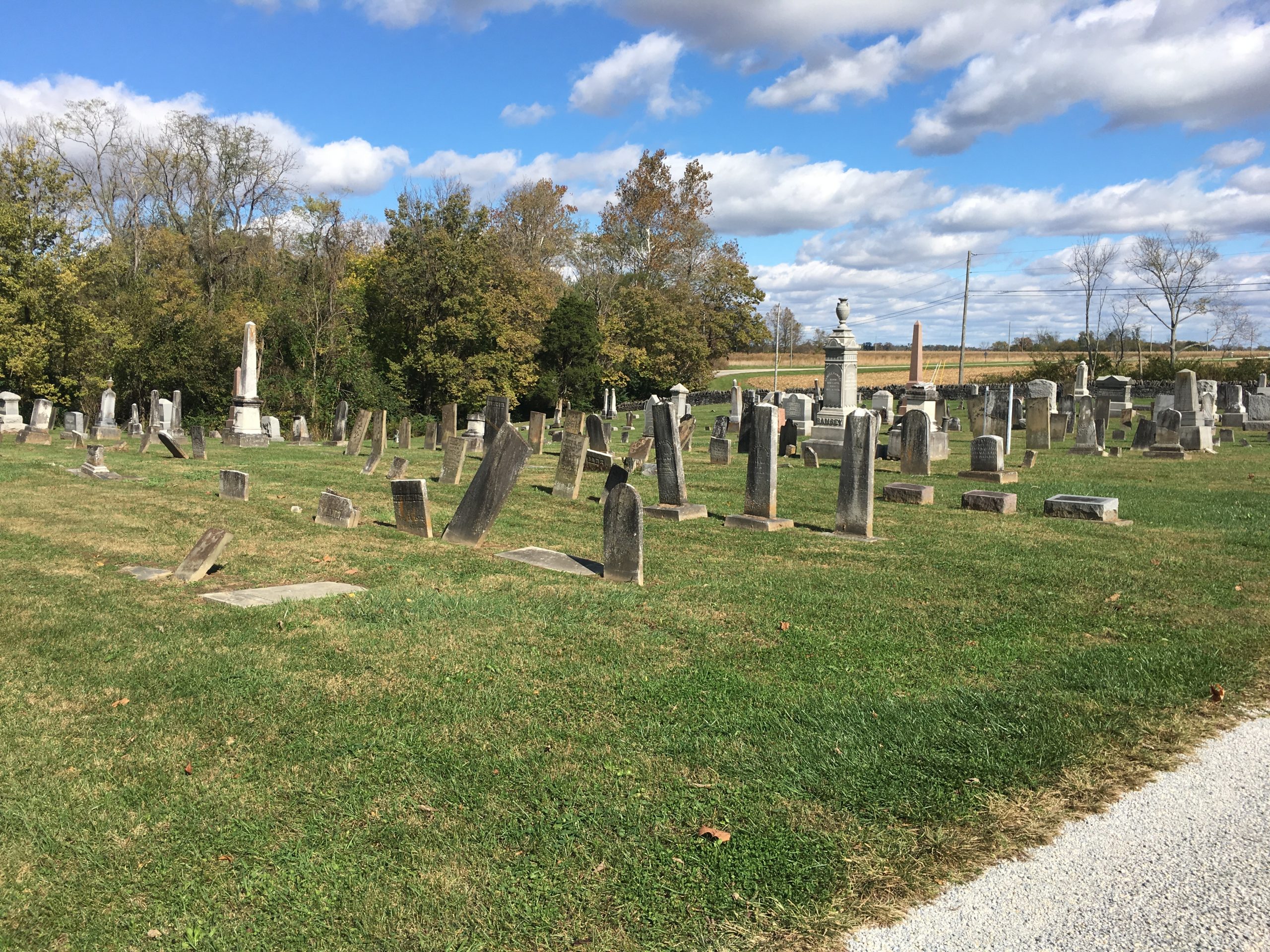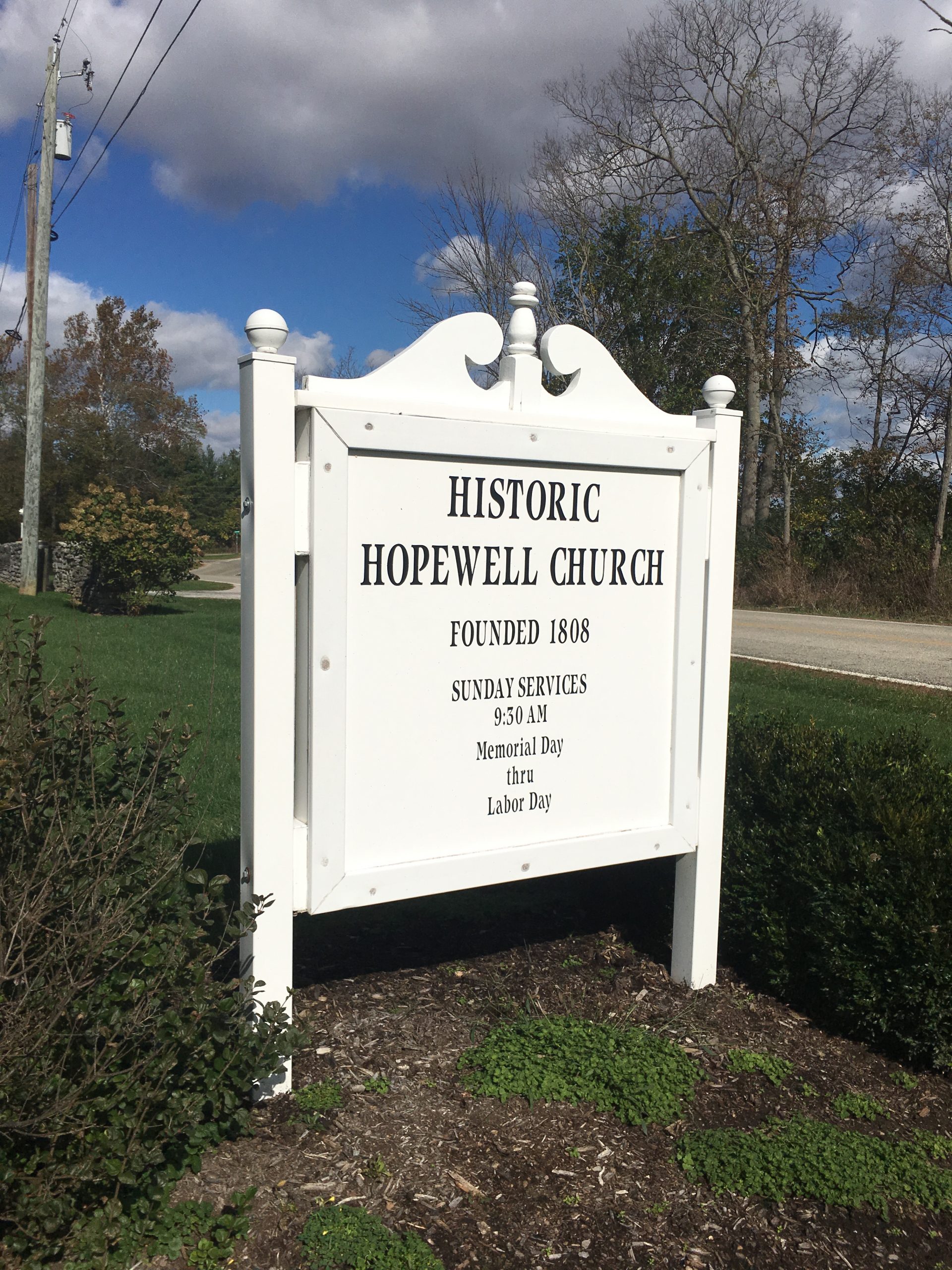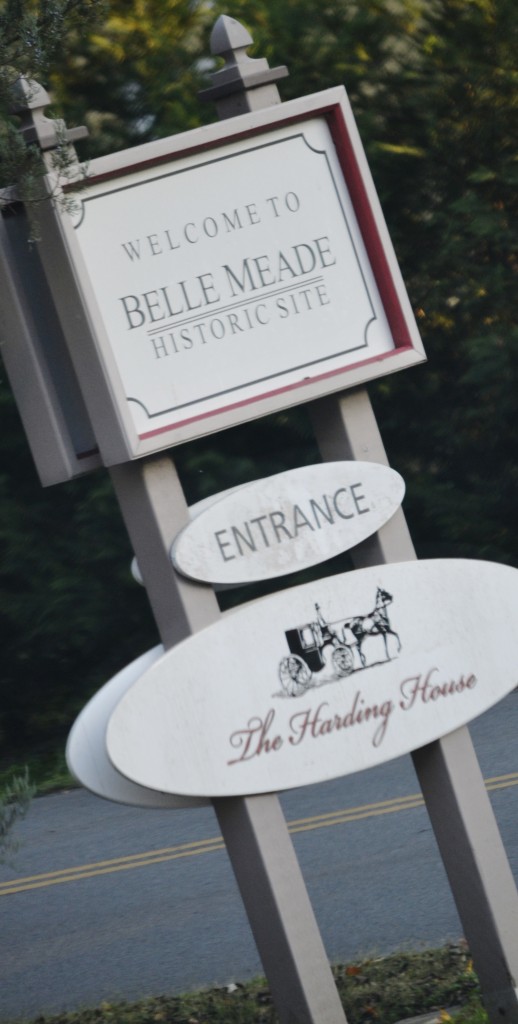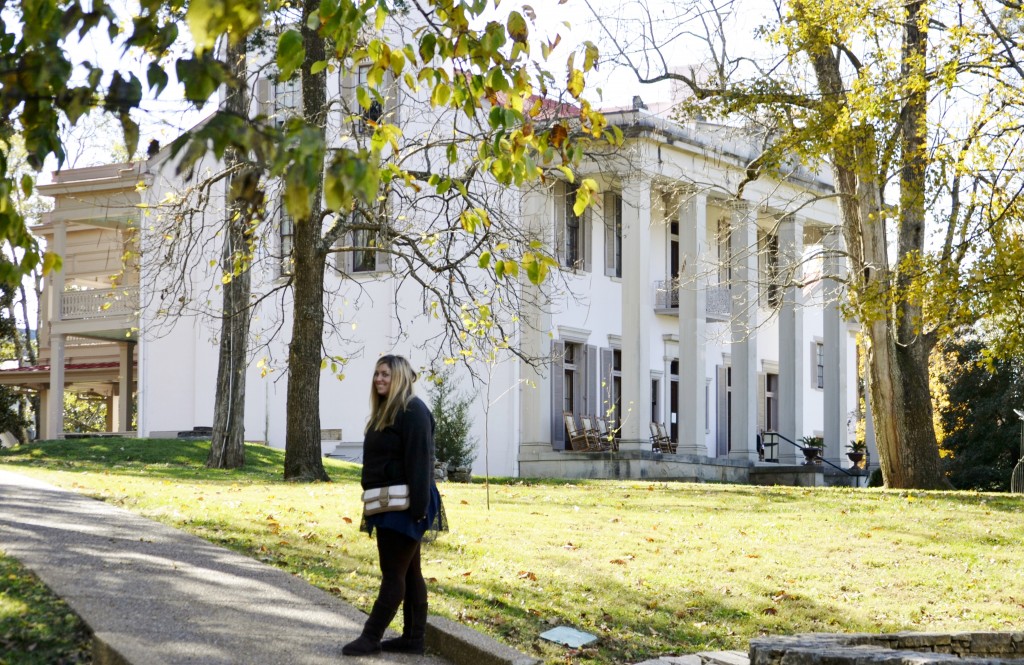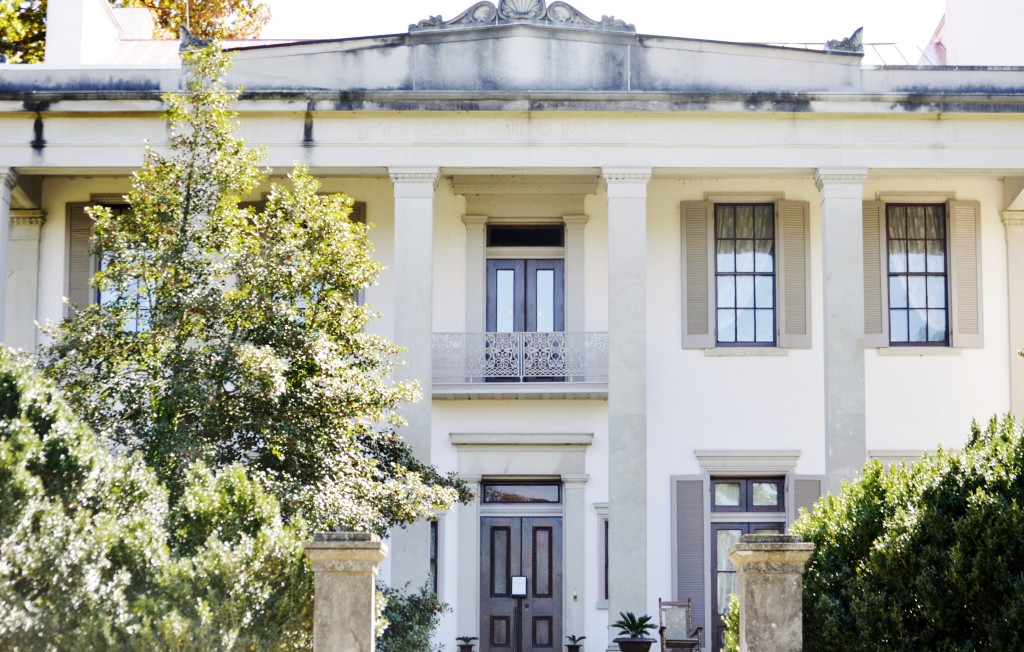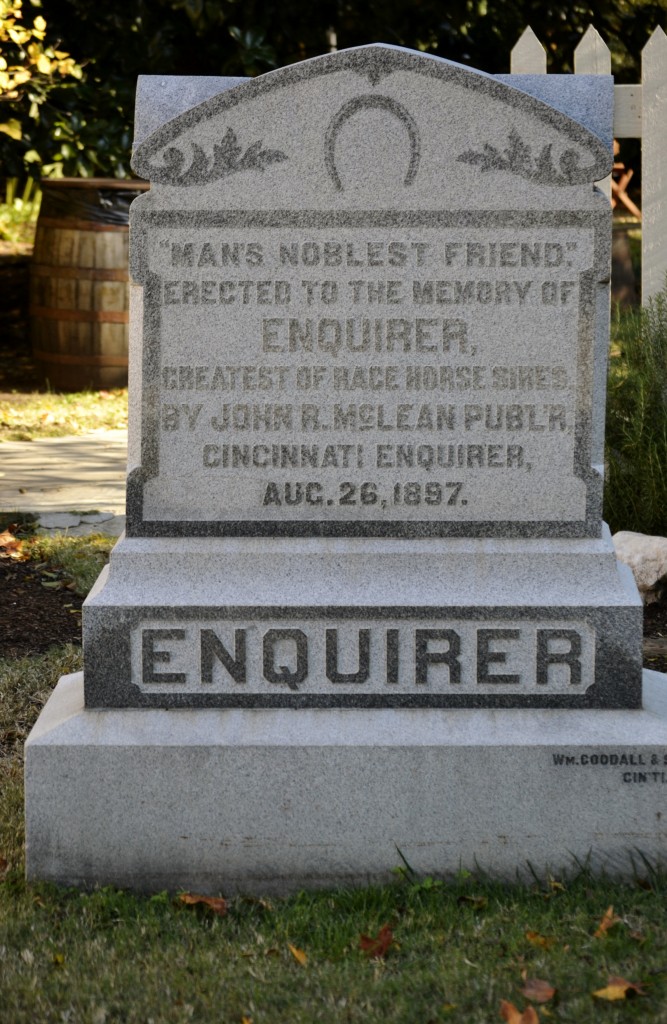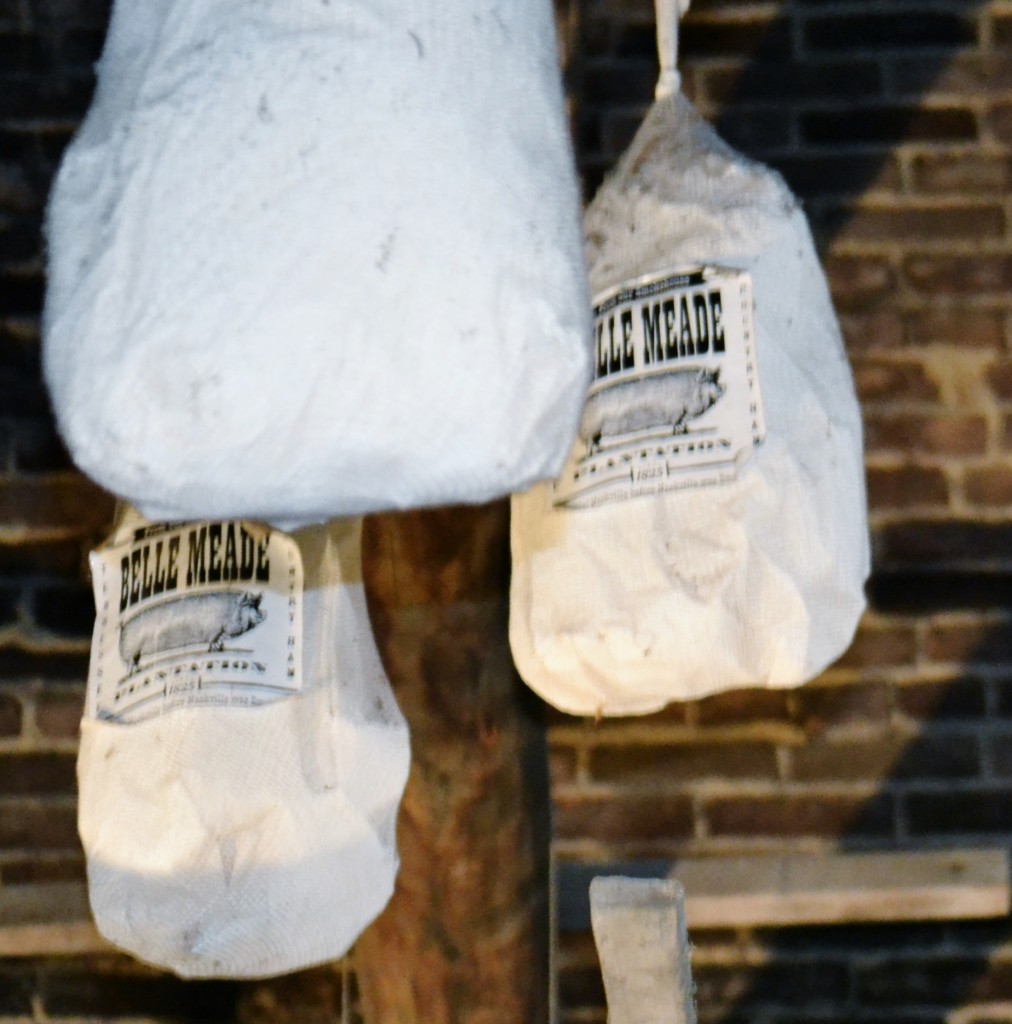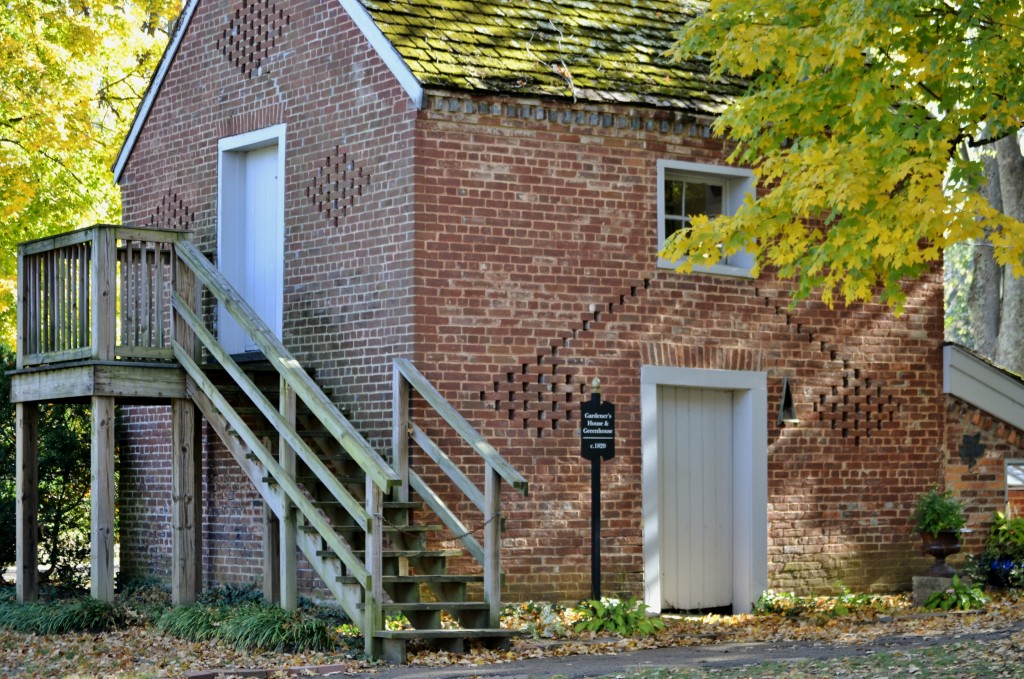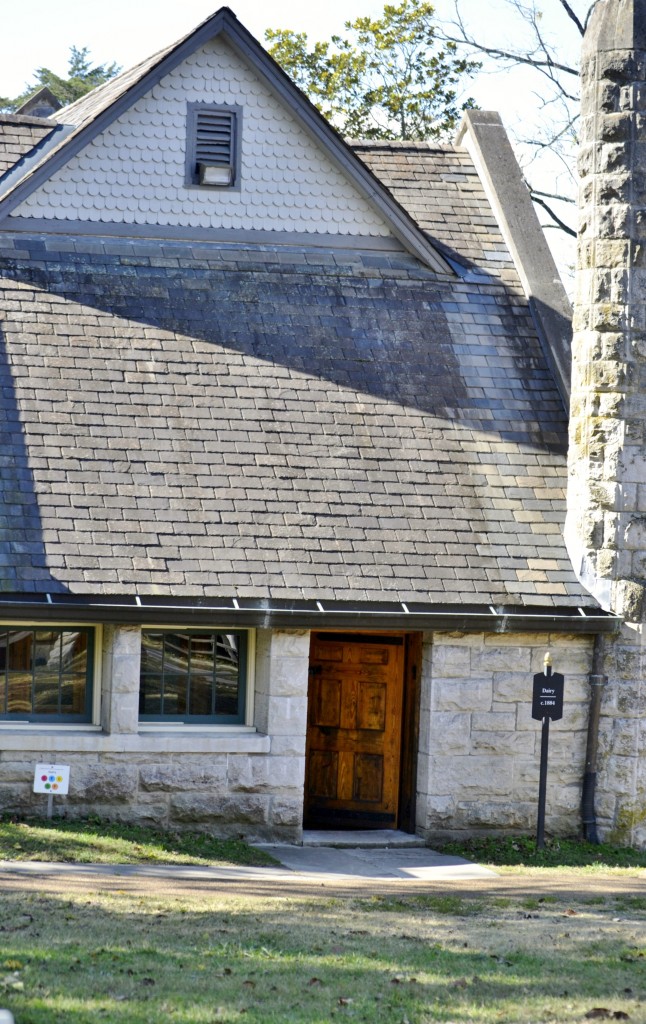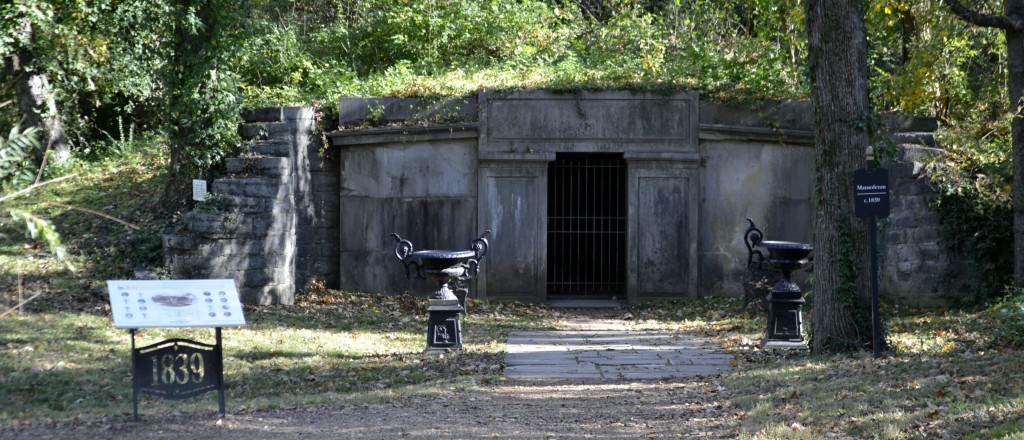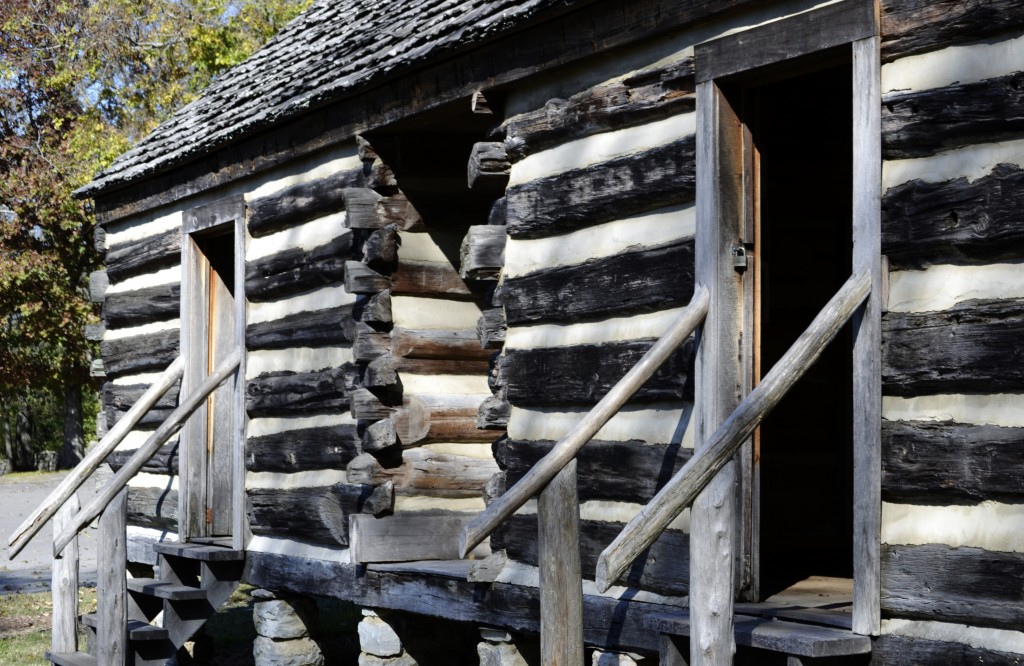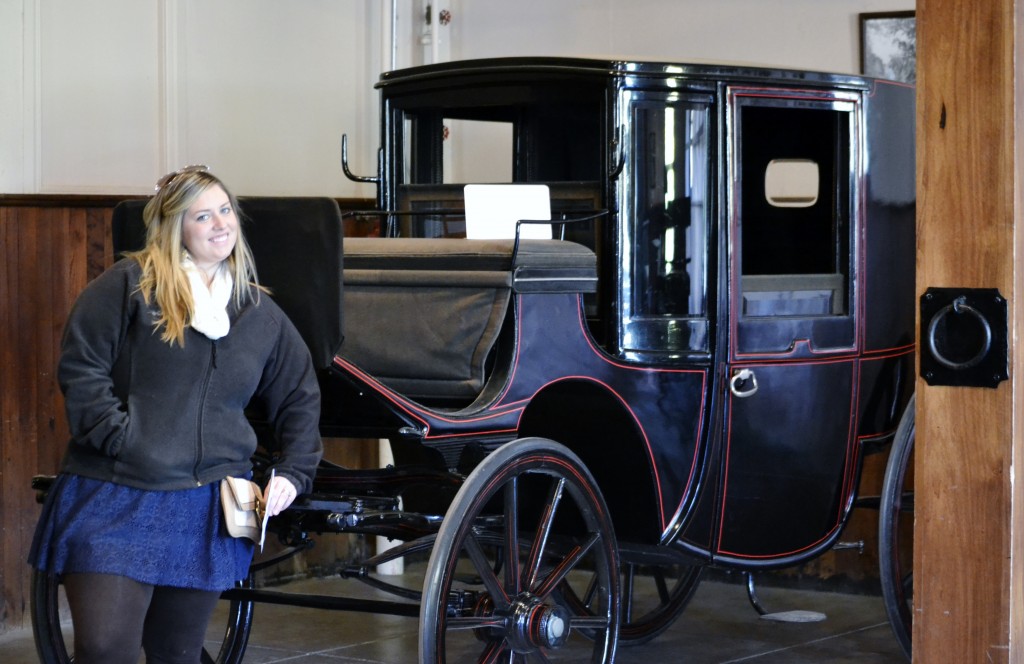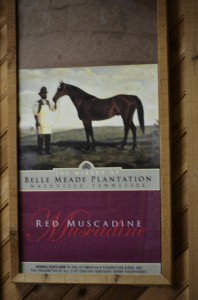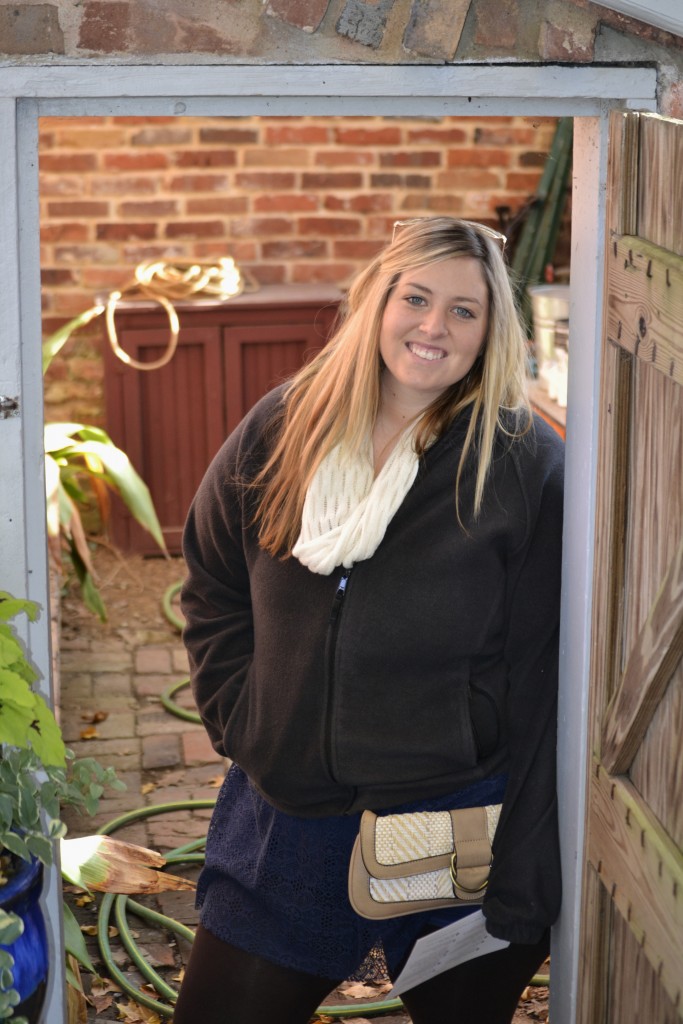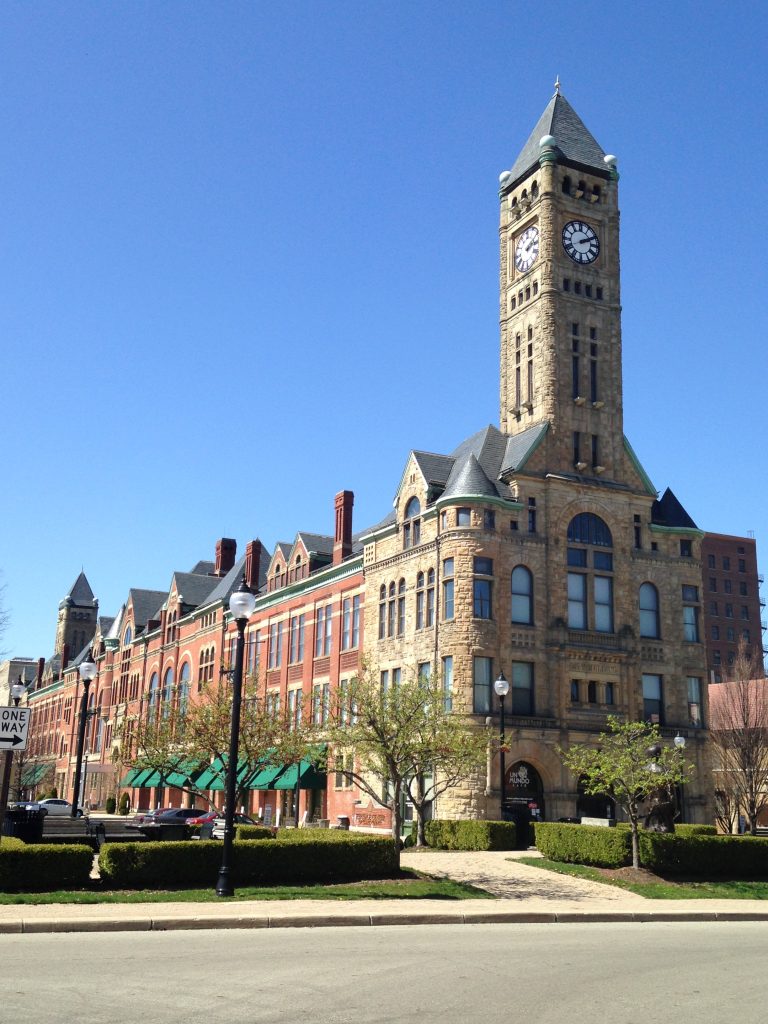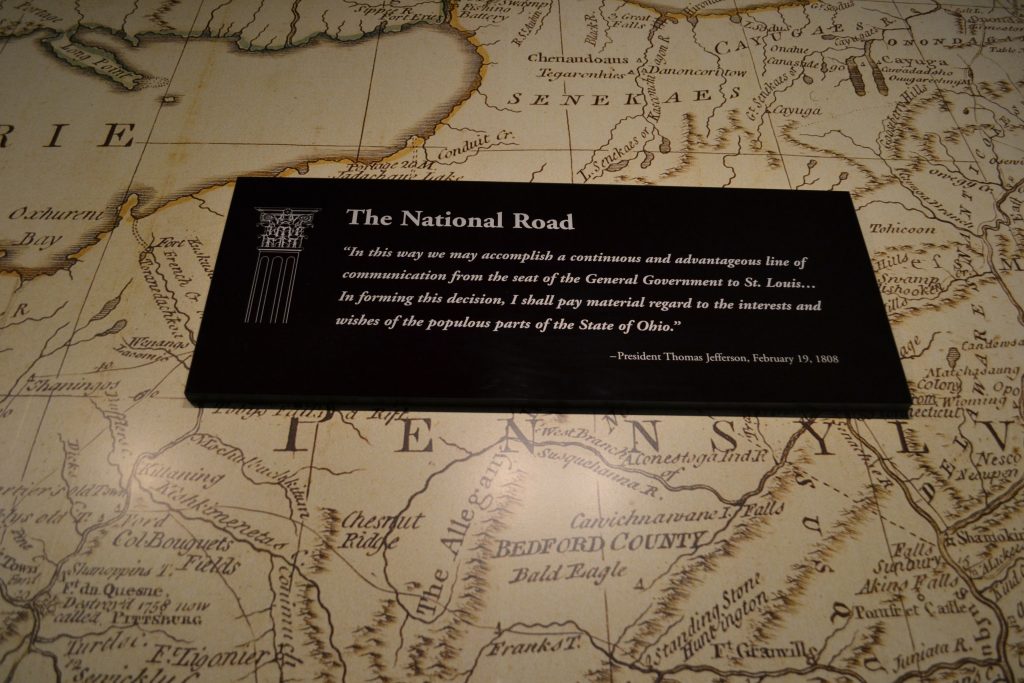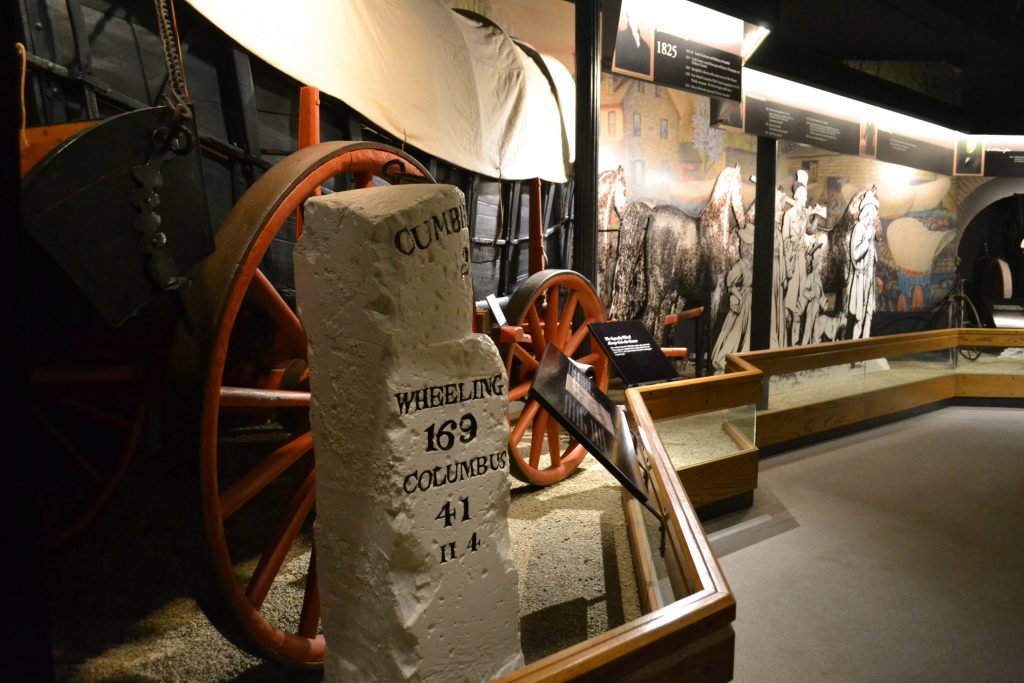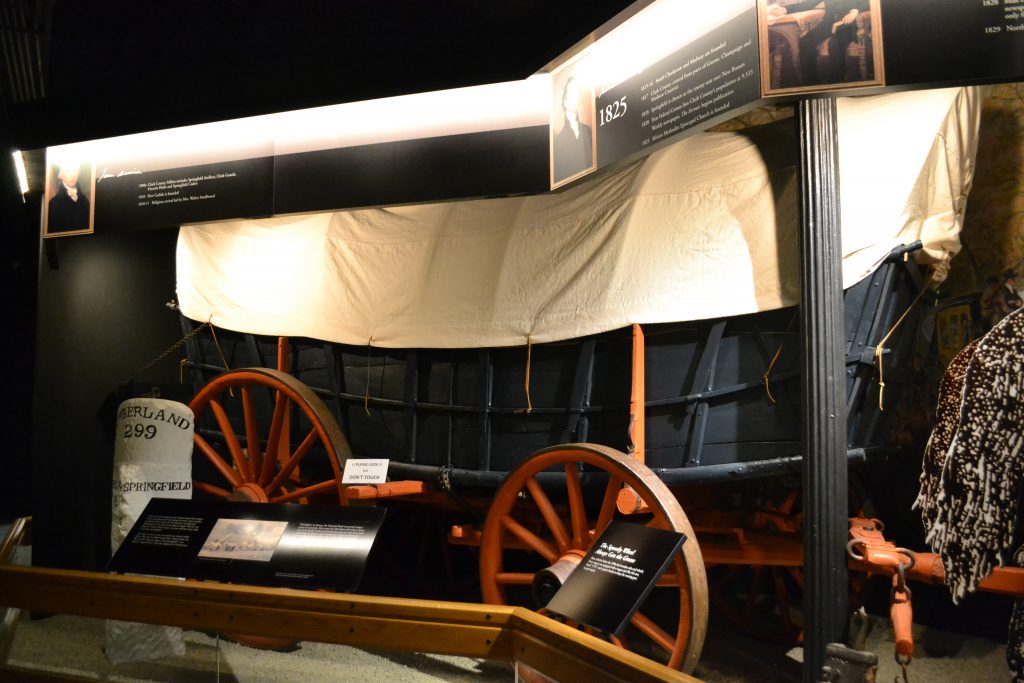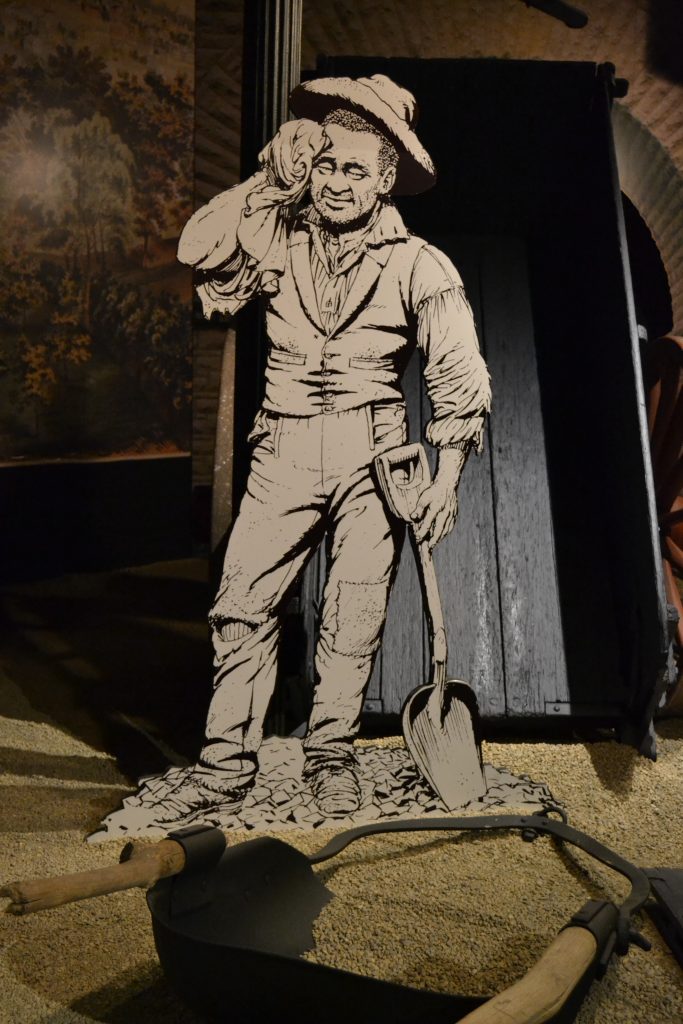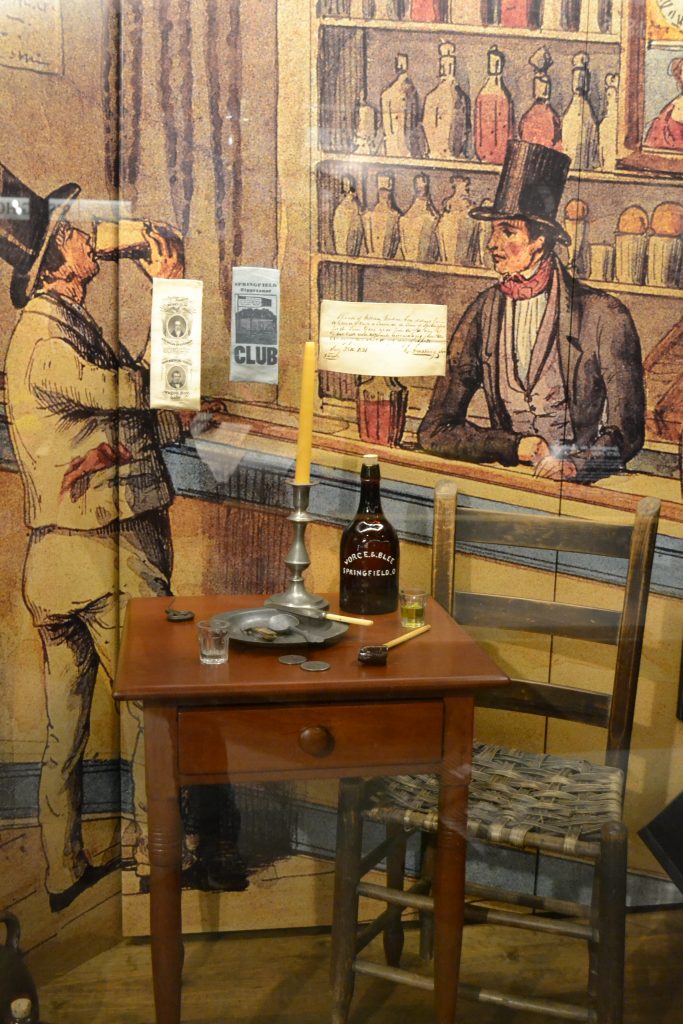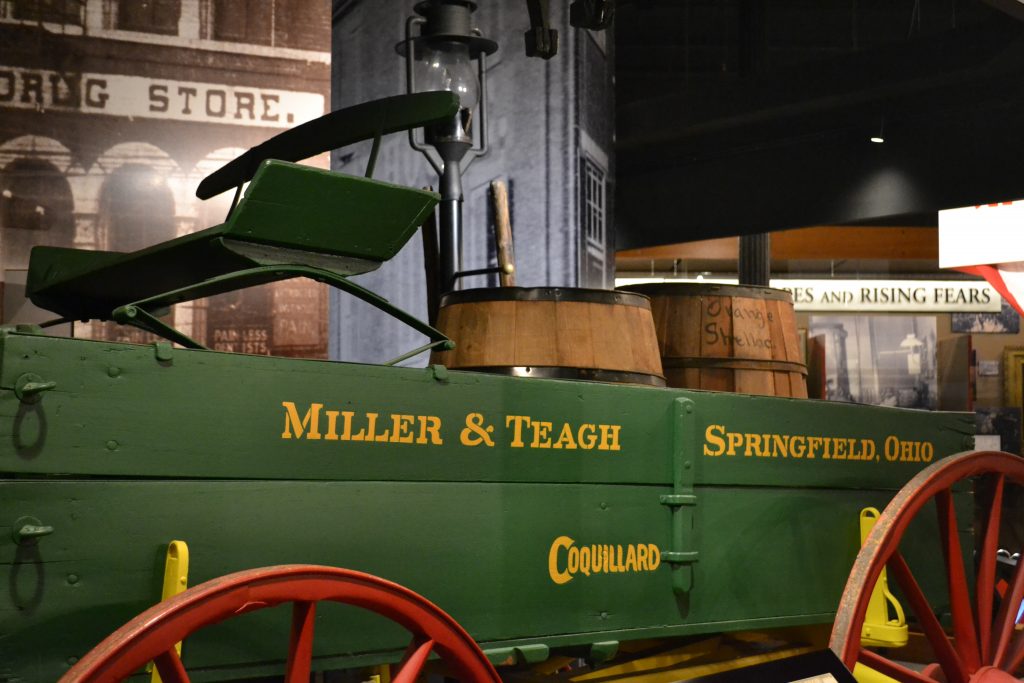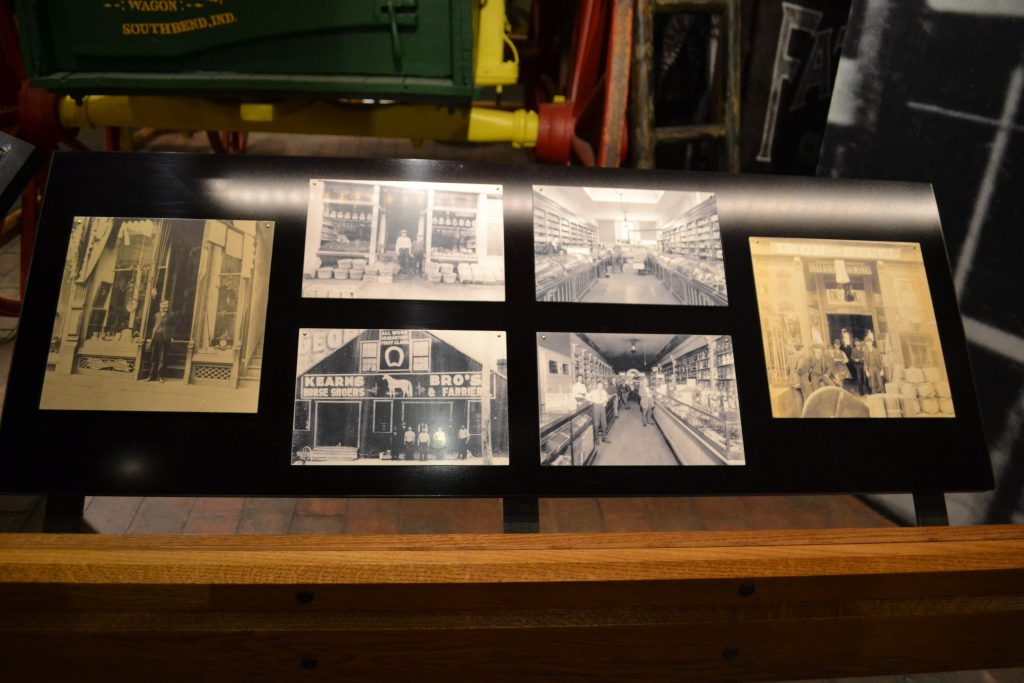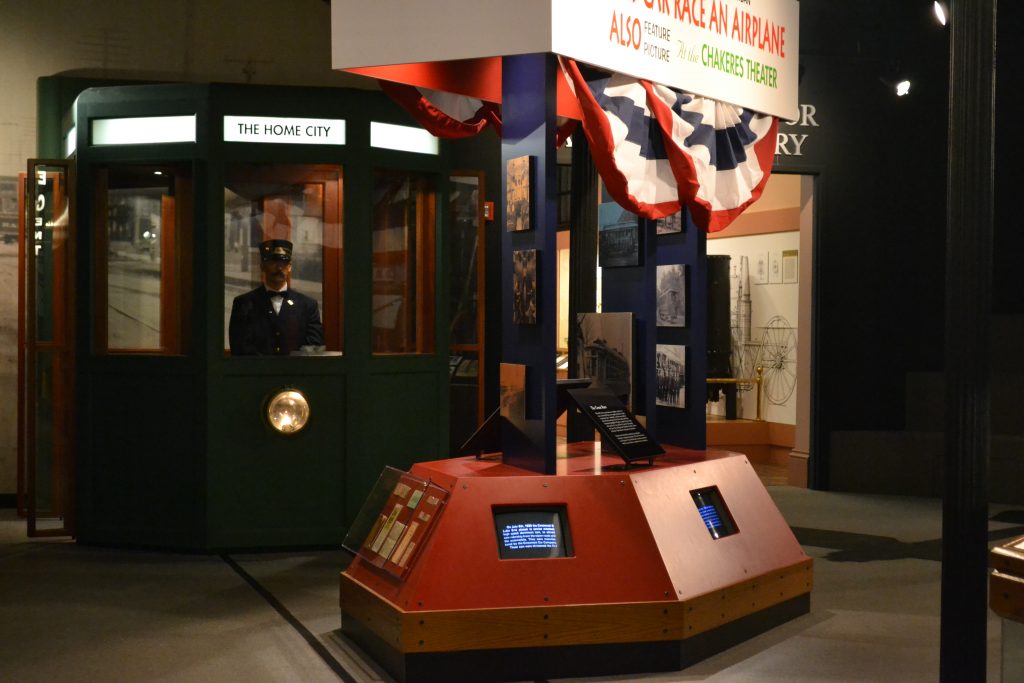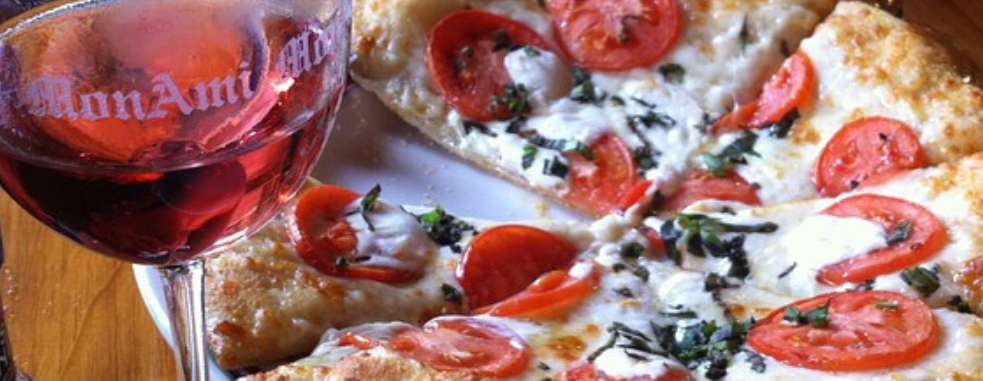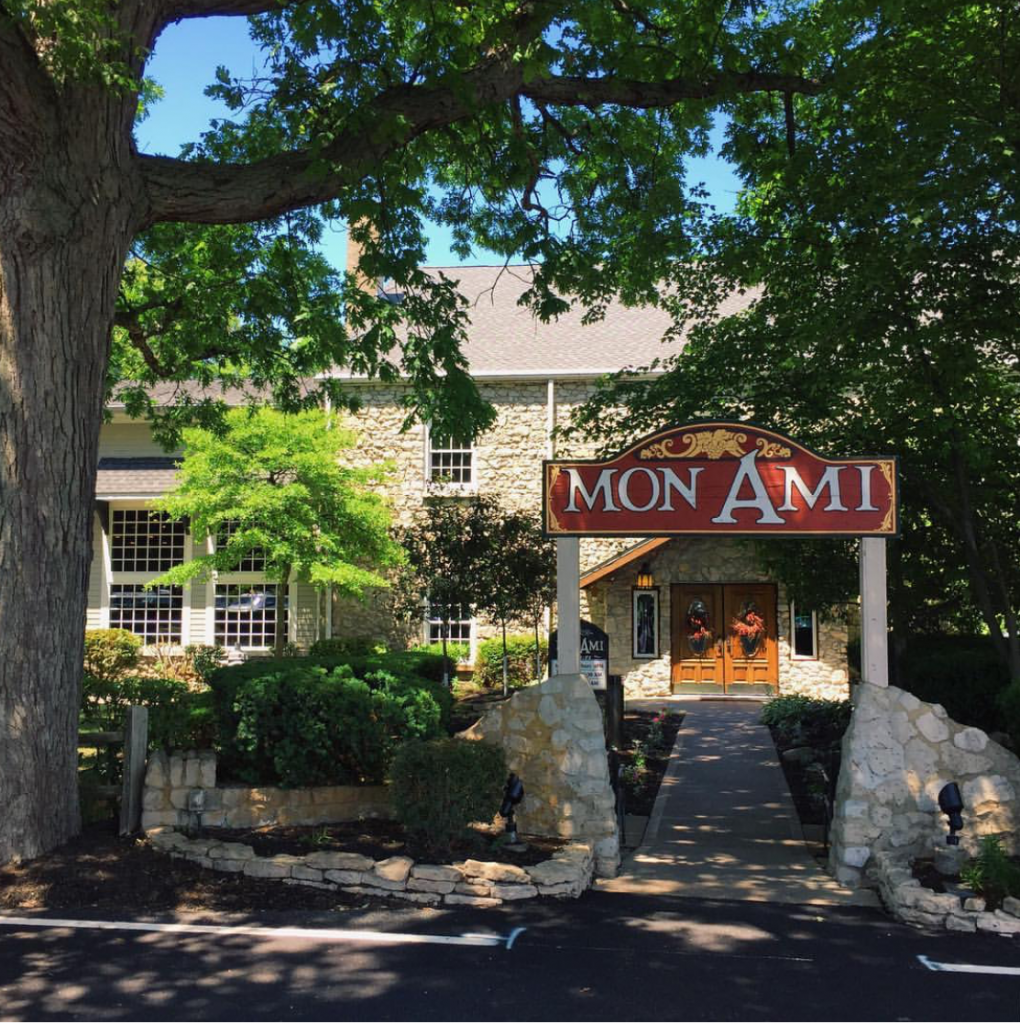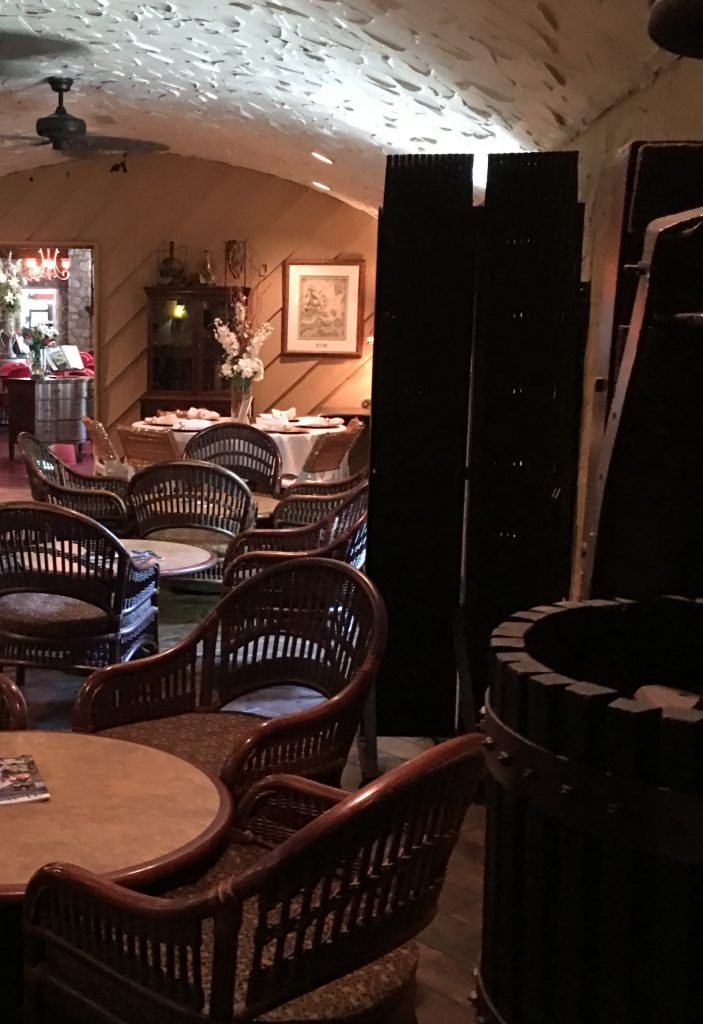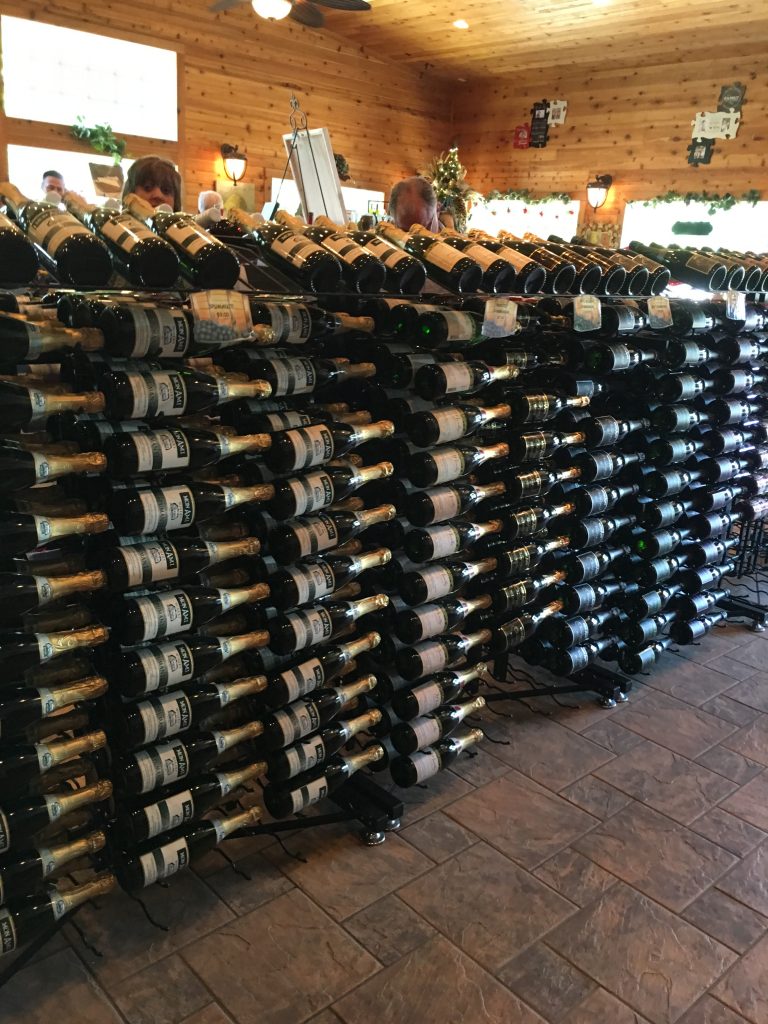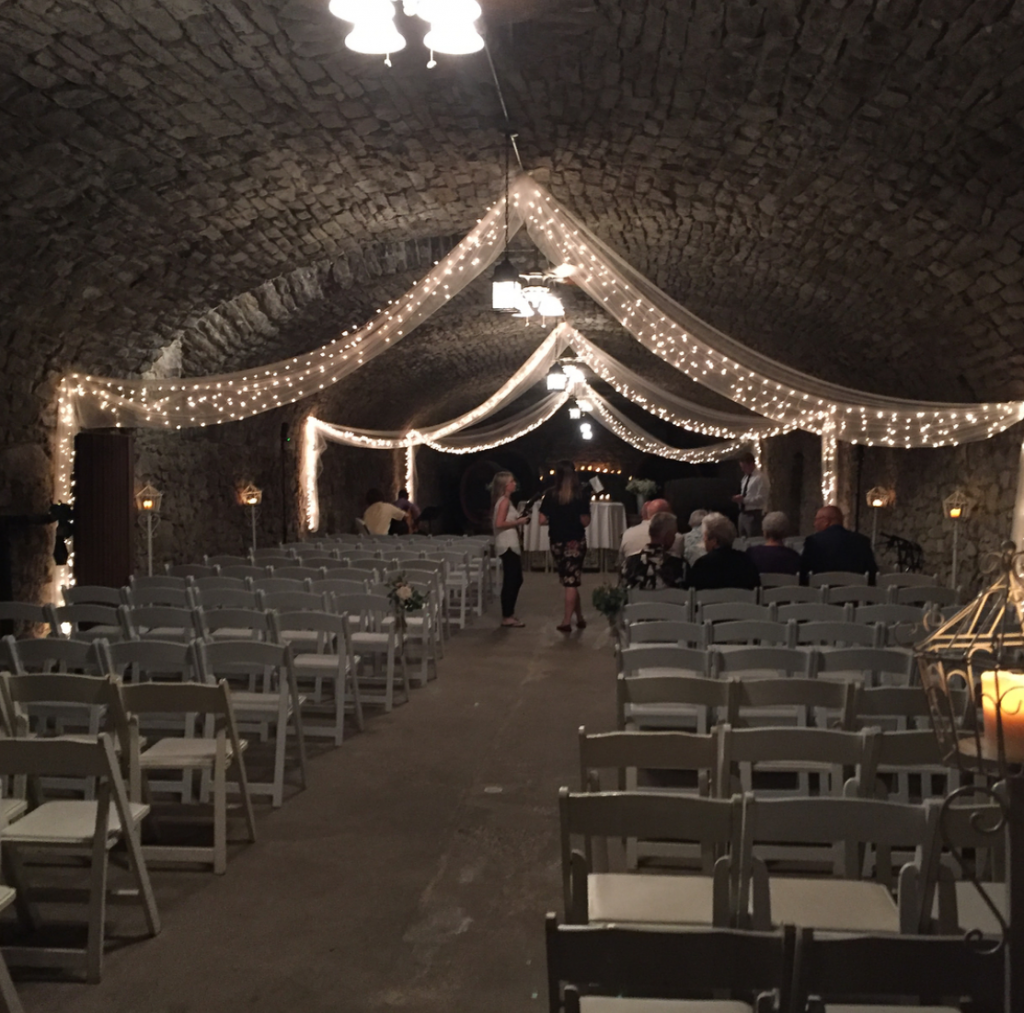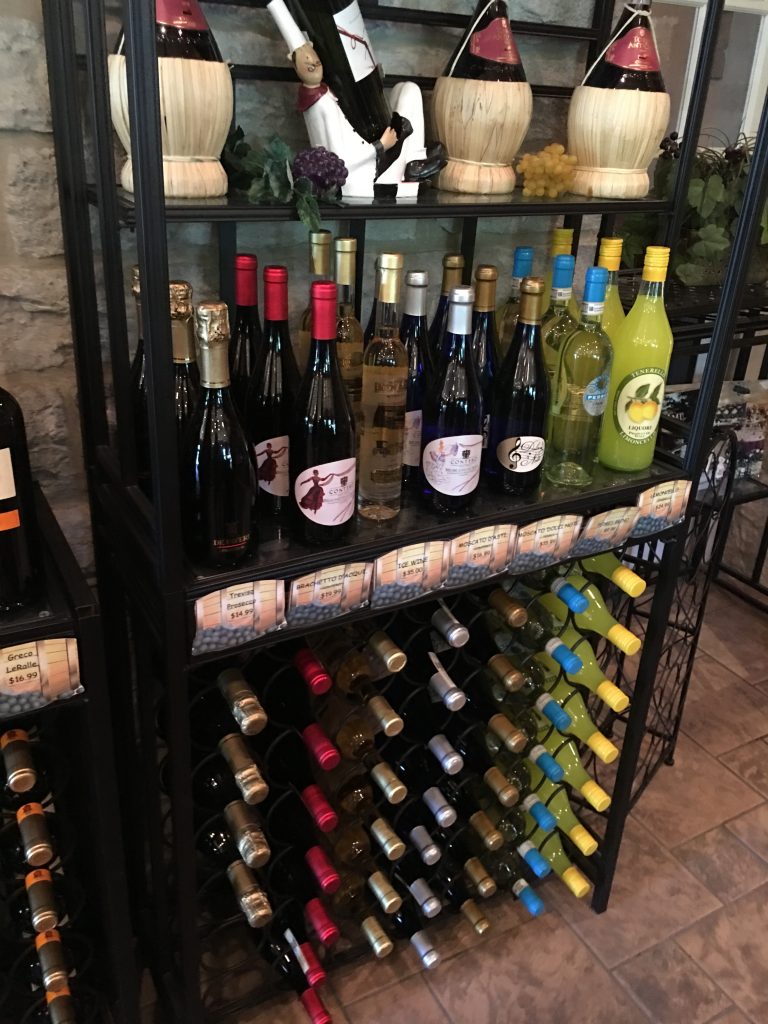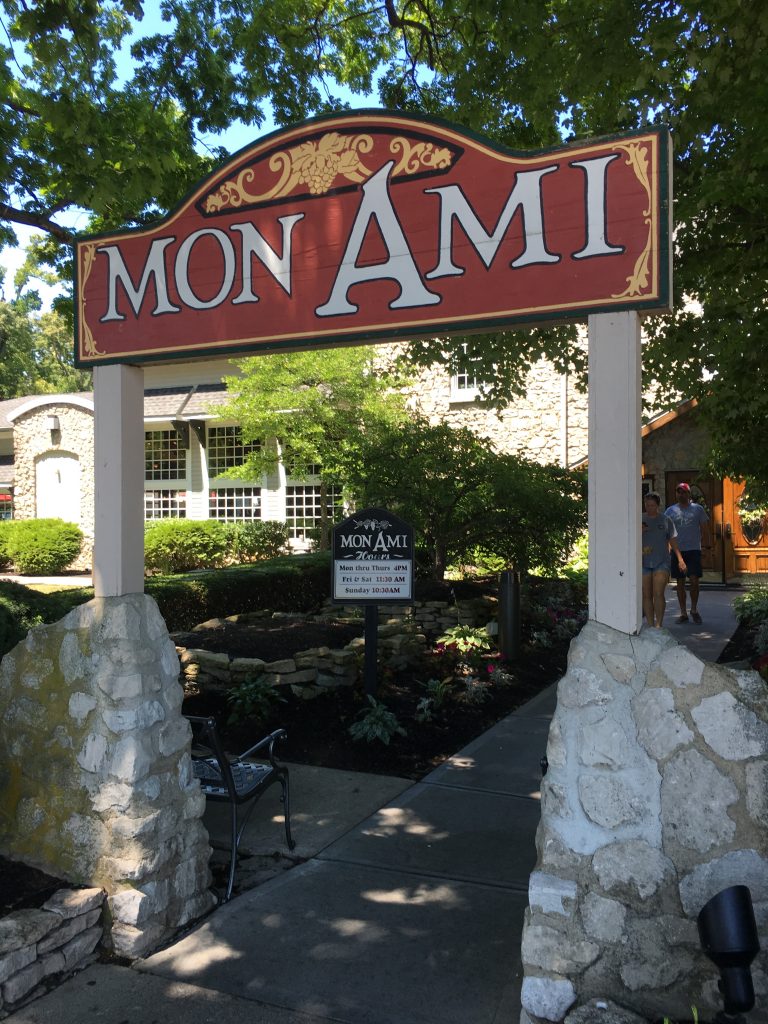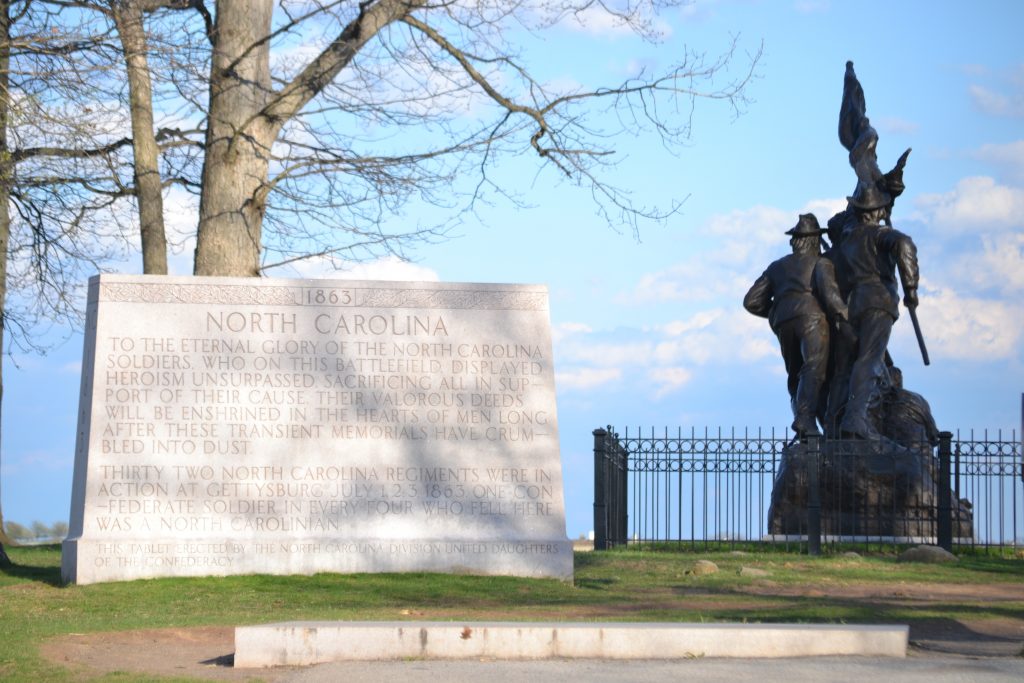
The second day of The Battle of Gettysburg conflict began with General Lee’s army forming his battle line along Seminary Ridge. Major General George Meade had arrived at 1AM on July 2, 1863 meeting up with the forces that occupied Culp’s Hill and Cemetery Hill along Cemetery Ridge. Meade was expecting an army of eighty thousand men who were not far behind.
“North Carolina Memorial: Early in the day, the Confederate army positioned itself on high ground here along Seminary Ridge, through town and north of Cemetery and Culp’s Hills. Union forces occupied Culp’s and Cemetery hills and along Cemetery Ridge south to the Round tops, The lines of both armies formed two parallel “fishhooks”.” – The Auto Trail
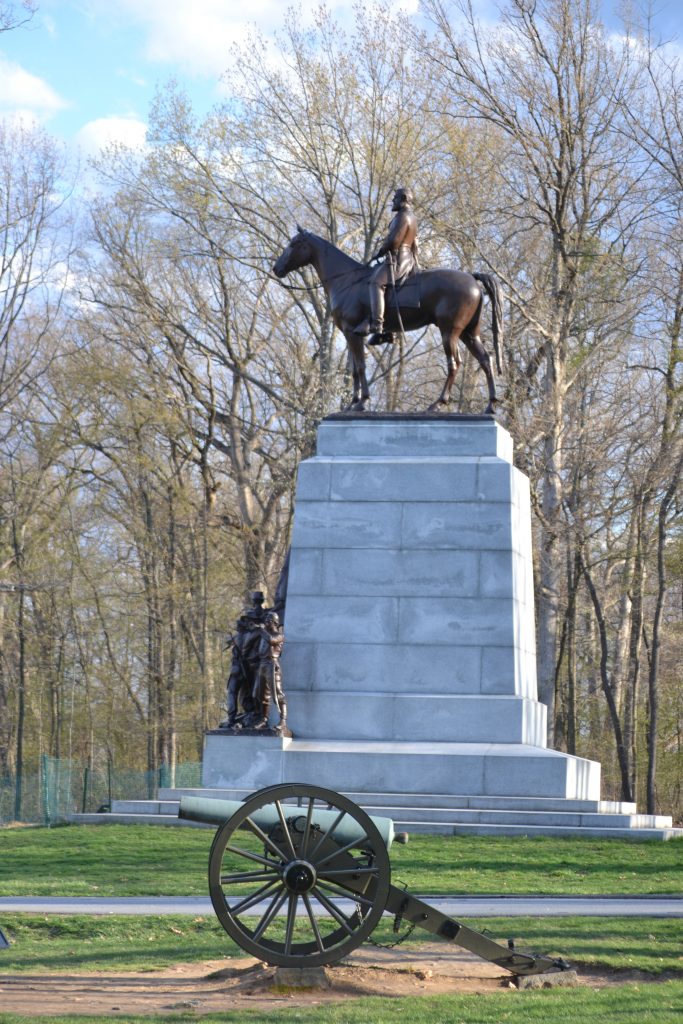
The Virginia Memorial marks the location where the second day of battle took place. Meade was prepared for Day 2 of the battle and had lined up cannons from Cemetery Hill stretching all the way towards Little Round Top. While General Lee discussed his aim of attack with his commanders, this gave the Union plenty of time to prepare and Union troops under General Dan Sickles, moved to the area known as Devil’s Den. General Lee launched an attack on the Union around 4PM, the fighting escalated at Culp’s Hill and Cemetery Hill and Meade was calling for more troops because Little Round Top was totally unprotected. Although there were many casualties, the Union was able to hold their stance, ending Day 2 of the battle.
“Virginia Memorial: The large open field to the east is where the last Confederate assault of the battle known as “Pickett’s Charge”, occurred July 3rd.” – The Auto Tour
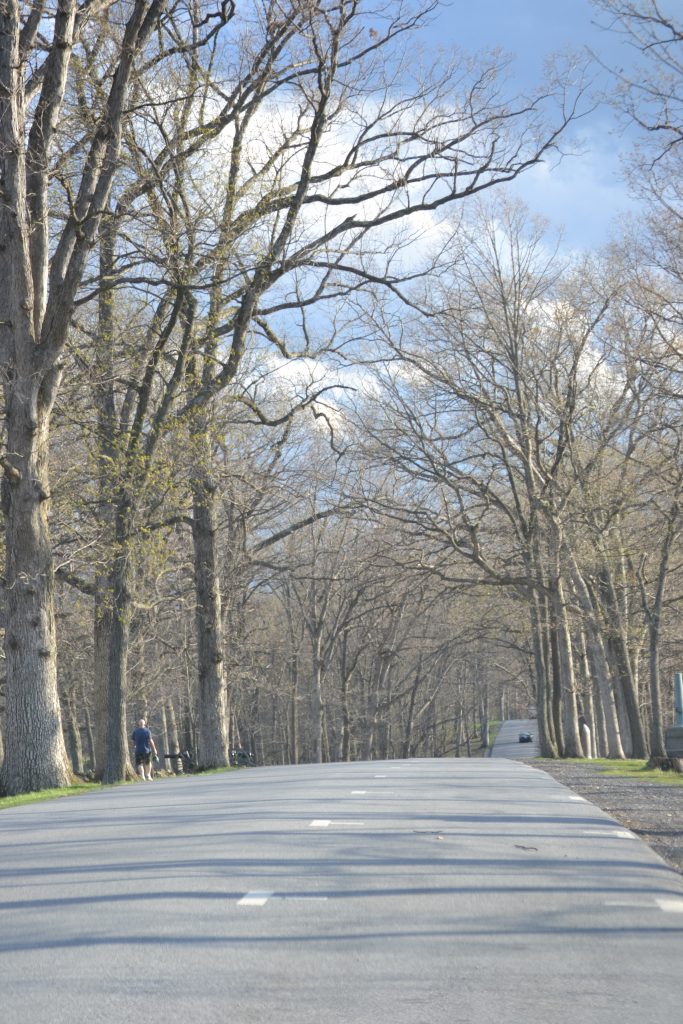
Several notable locations on the auto tour overlap the days of battle but are quite significant to the story.
Pitzer Woods: In the afternoon of July 2nd, Lt. General James Longstreet placed his Confederate troops along Warfield Ridge anchoring the left of Pitzer Woods”. – The Auto Tour
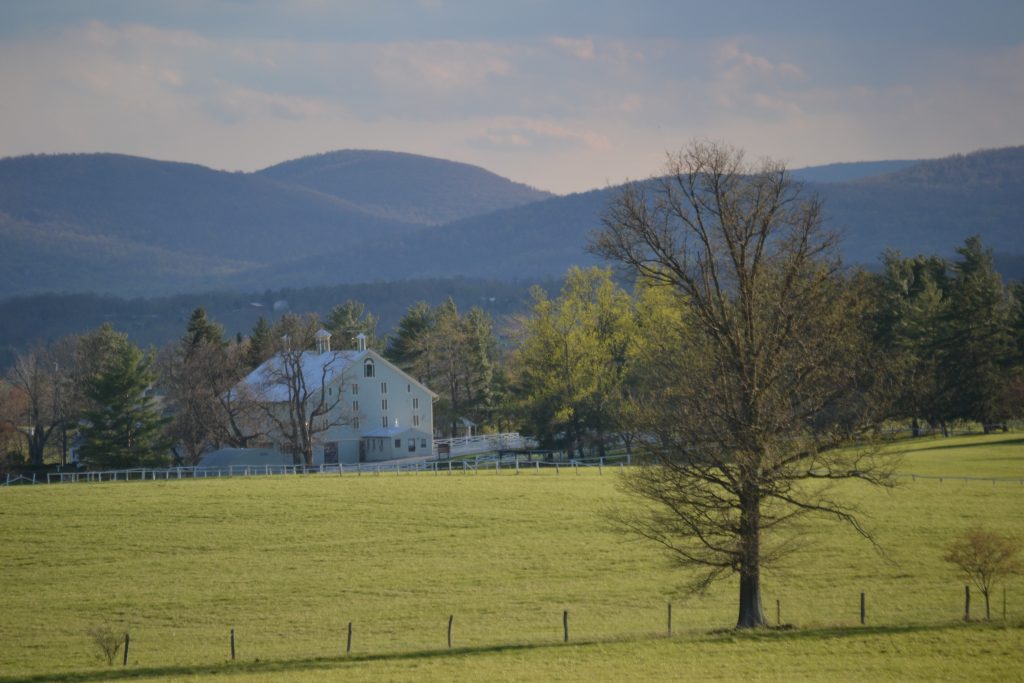
Shortly after passing through Pitzer Woods is an observation tower that provides exceptional views of The Peach Orchard and Eisenhower’s Rose Farm. He purchased the 189-acre farm in 1950. Once he became President, he raised Angus on the property and it became his sanctuary away from the Oval Office. After completing two terms in office, Eisenhower and his wife made the farm their permanent home until his death in 1969.
“Warfield Ridge: Longstreet’s assaults began here at 4PM. They were directed against Union troops occupying Devil’s Den the Wheatfield, and Peach Orchard, against Meade’s undefended left flank at The Round Tops.” – The Auto Tour
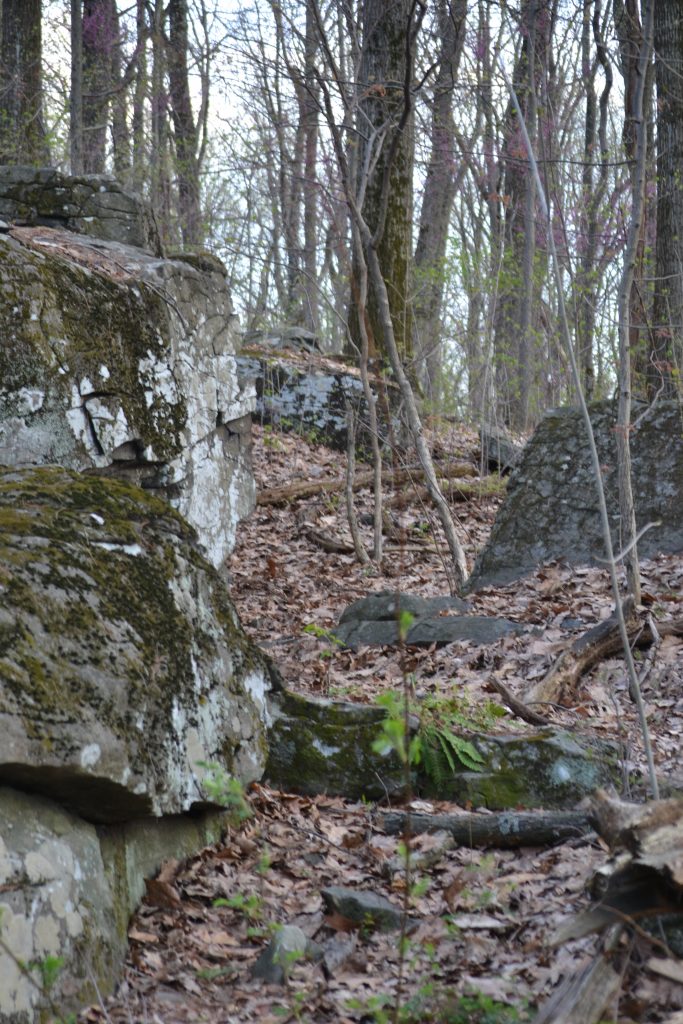
The road begins to take a northeasterly direction. Before reaching Little Round Top, there is a hike with several memorials and monuments. I enjoyed taking a break from the auto tour and enjoying the outdoors.
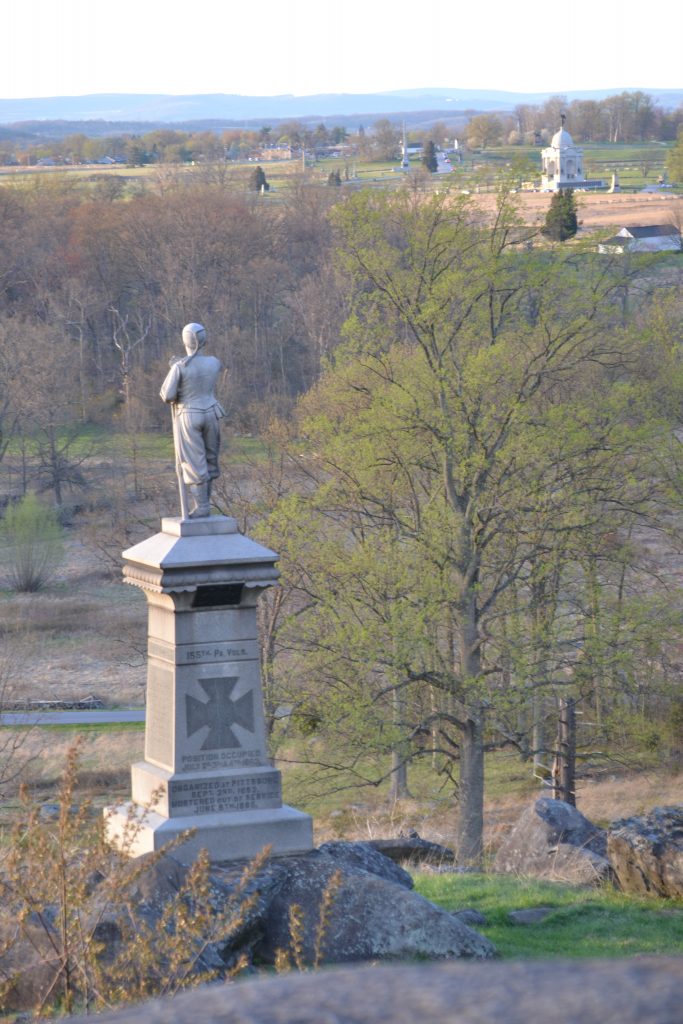
Coming upon Little Round Top, a placard clearly marks the battle site. This location was a significant hill occupied by the Union forces.
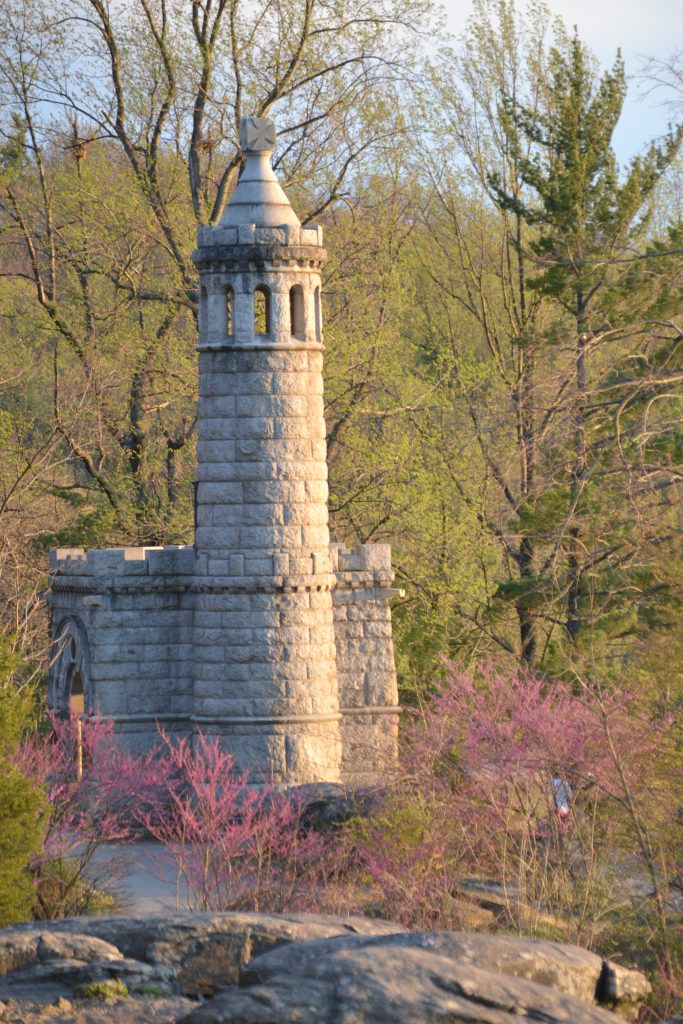
“ Little Round Top: Quick action by Brig. Gen. Governor K. Warren, Meade’s chief engineer, alerted Union officers to the Confederate threat and brought Federal reinforcements to defend this position.” – The Auto Tour
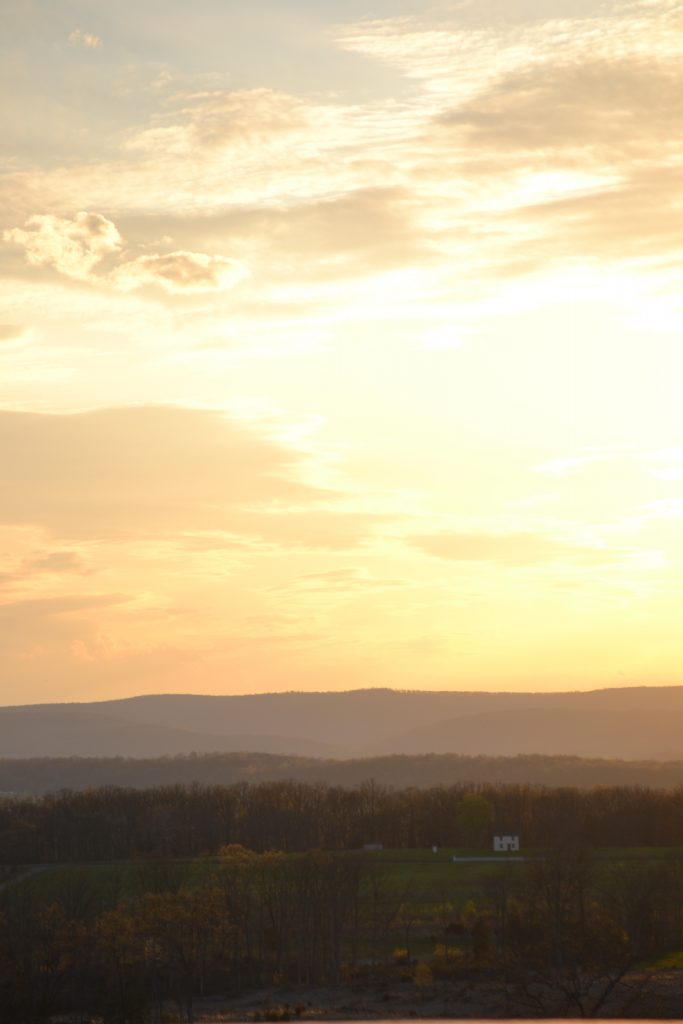
Continuing the drive along Sykes Avenue and the road reaches large open field known as The Wheatfield and The Peach Orchard. On the second day of battle, brutal fighting stormed through Little Round Top, Wheatfield and Sherfy’s Peach Orchard. The Union soldiers continued to hold their lines.
“The Wheatfield: Charge and countercharge left this field and the nearby woods strewn with over 4,000 dead and wounded.” – The Auto Tour
“The Peach Orchard: The Union line extended from Devil’s Den to here on Emmitsburg Road. Federal cannon bombarded Southern forces across the Rose Farm toward the Wheatfield until about 6:30PM, when Confederate attacks overran this position.” – The Auto Tour
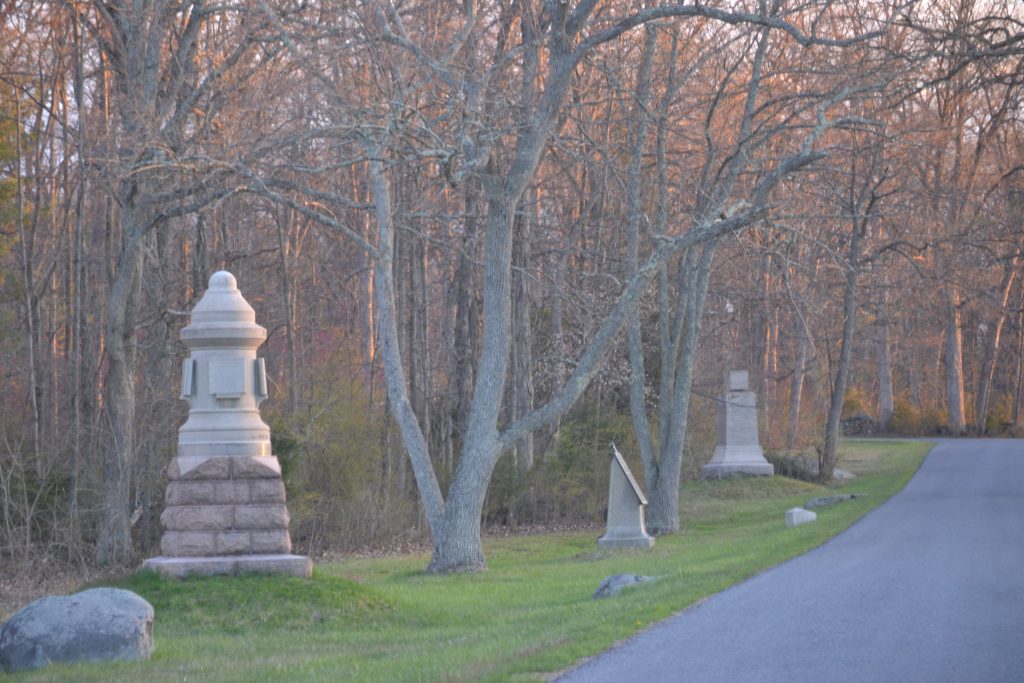
United States Avenue passes the Plum Run Valley. The fighting eventually reached Plum Run, which later became known as the “Valley of Death”.
“Plum Run: While fighting raged to the south at the Wheatfield and Little Round Top, retreating Union soldiers crossed this ground on their way from the Peach Orchard to Cemetery Ridge.” – The Auto Tour
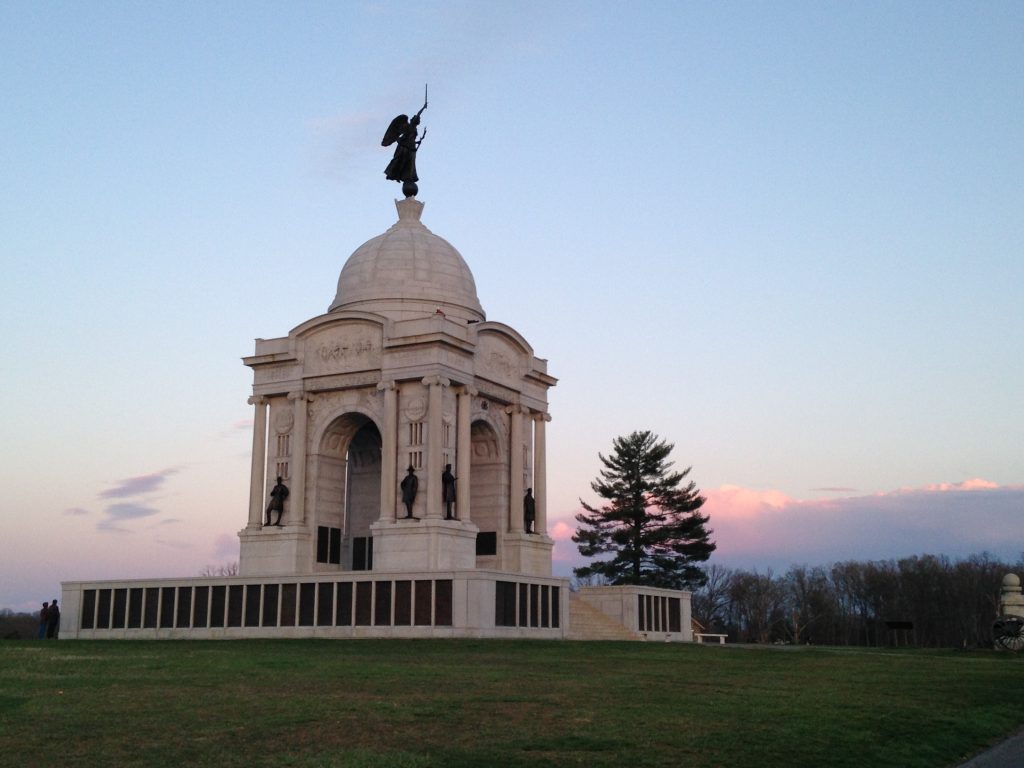
United States Avenue dead ends into Hancock Avenue on the left and Sedgewick Avenue towards the right. Making a sharp left, the Pennsylvania Monument comes into view.
“Pennsylvania Monument: Union artillery held the line alone here on Cemetery Ridge late in the day as Meade called for infantry from Culp’s Hill and other areas to strengthen and hold the center of the Union position.” – The Auto Tour
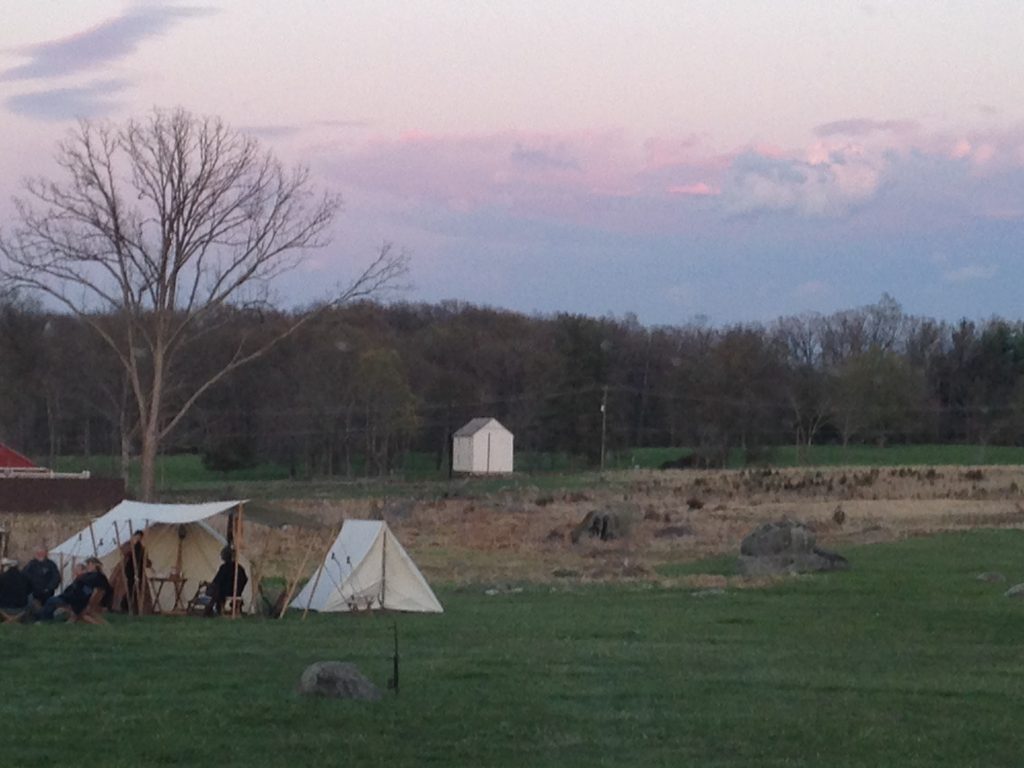
At Culp’s Hill, there is an observational tower before reaching East Cemetery Hill.
“East Cemetery Hill: At dusk, Union forces repelled a Confederate assault that reached the crest of the hill. By day’s end, both flanks of the Union army had been attacked and both had held, despite losing ground. In a council of war, Meade, anticipating an assault on the center of his line, determined that his army would stay and fight.” – The Auto Tour
As fighting continued throughout the day, the Union army traveled further south and west towards Devil’s Den. By the end of the day, the Wheat Field was strewn with corpses and the battle ended in a stalemate.
This would end the second day of battle, July 3, 1863.
Are you familiar with the Battle of Gettysburg? Have you visited the National Military Park? I would love to hear about your time spent in Gettysburg and what you found most interesting if you would kindly leave a message in the comments section below. Many thanks for following my drive through the Gettysburg National Military Park and wishing you many Happy Travels!
What to See and What to Do:
Gettysburg National Military Park Museum and Visitor Center
1195 Baltimore Pike
Gettysburg, PA 17325
Telephone: 717 334 1124
- Admission Fee: There is no fee charged to enter the Visitor’s center and museum, but there are fees associated with additional activities provided by the park. All activities are free to children ages 5 and under. To view the 45 minute film narrated by Morgan Freeman, there is a $15 charge for adults (ages 13+) and $10 for children ages 6 – 12. The museum only experience: $9 for adults (ages 13+), $7 for children ages 6 – 12. Guided Bus Tour of the Battlefield: $35 for adults (ages 13+), $21 for children ages 6 – 12; Eisenhower National Historic Site Tour: $9 for adults (ages 13+), $5 for children ages 6 – 12; The David Wills House: $7 for adults (ages 13+), $4 for children ages 6 – 12; NOTE: Tours of the house are free from June 9 – December 31, 2018. The George Spangler Farm Civil War Field Hospital (open only in summer): $6 for adults (ages 13+), $2 for children ages 6 – 12. Visit the website for additional tours which may be available during your visit.
- Hours: Park grounds and roads: April 1 – October 31, open from 6 AM to 10 PM; November 1 – March 31, open from 6 AM to 7 PM. The museum is open daily from 9 AM to 5 PM yet closed on Thanksgiving Day, Christmas Day, New Year’s Day and early closure on Christmas Eve – 2 PM. The Soldier’s National Cemetery is open from dawn to dusk. Gettysburg Lincoln Railroad Station: November – February: Closed with the exception of holiday dates (see website); March – May open from 10 AM to 5 PM Friday, Saturday and Sunday only; Memorial Day – Labor Day: 10 AM to 5 PM daily; September – October 10 AM to 5 PM Friday, Saturday and Sunday only.
- Amenities: Several tour options, movie at theater, audio guide for scenic drive, hiking, historical reinactments, horseback riding, ranger programs, living history programs and virtual tours and lodging at Bushman House
- Scenic View: Spectacular views from Little Round Top and observation towers.
- Length of Visit: 2 – 3 hours or more if you have booked multiple tours.
- Tips for Your Visit: Booking a tour is one of the best ways to explore Gettysburg National Military Park. During the auto tour, there are very few restrooms and picnic areas along the route. There are also no restaurants along the tour, so pack some snacks and water. Remember that the park is located on hallowed ground and you are asked to treat it with respect.
Where to Stay:
Brickhouse Inn Bed & Breakfast
452 Baltimore Street
Gettysburg, PA 17325
Telephone: 717 338 9337
Located in downtown historic Gettysburg, the B&B is within walking distance to shops, restaurants and museums and nearby Culp’s Hill and the Soldier’s Cemetery.
Where to Eat:
Dobbin House
89 Steinwehr Avenue
Gettysburg, PA 17325
Telephone: 717 334 2100
Gettysburg’s oldest and most historic home, the Dobbin House offers an exceptional dining experience as guests are served by wait staff dressed in period costume.
I started with the shrimp cocktail, served with traditional cocktail sauce. For my main course, I was drawn to the broiled filet mignon and added a Maryland crabcake to my order.
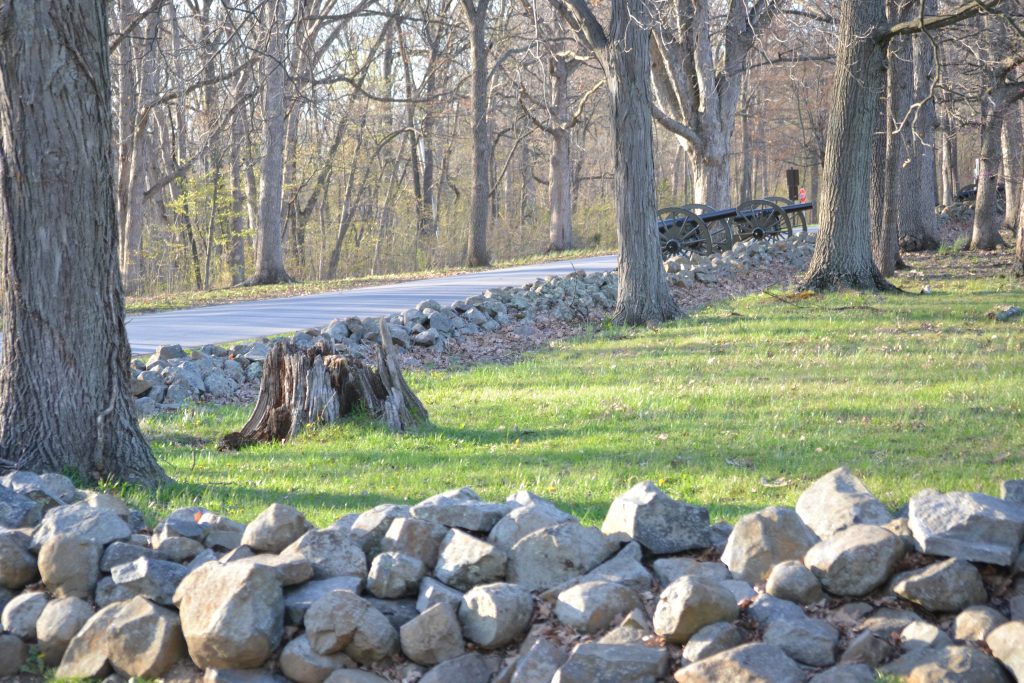
Continuing Along the Gettysburg Memorial Drive
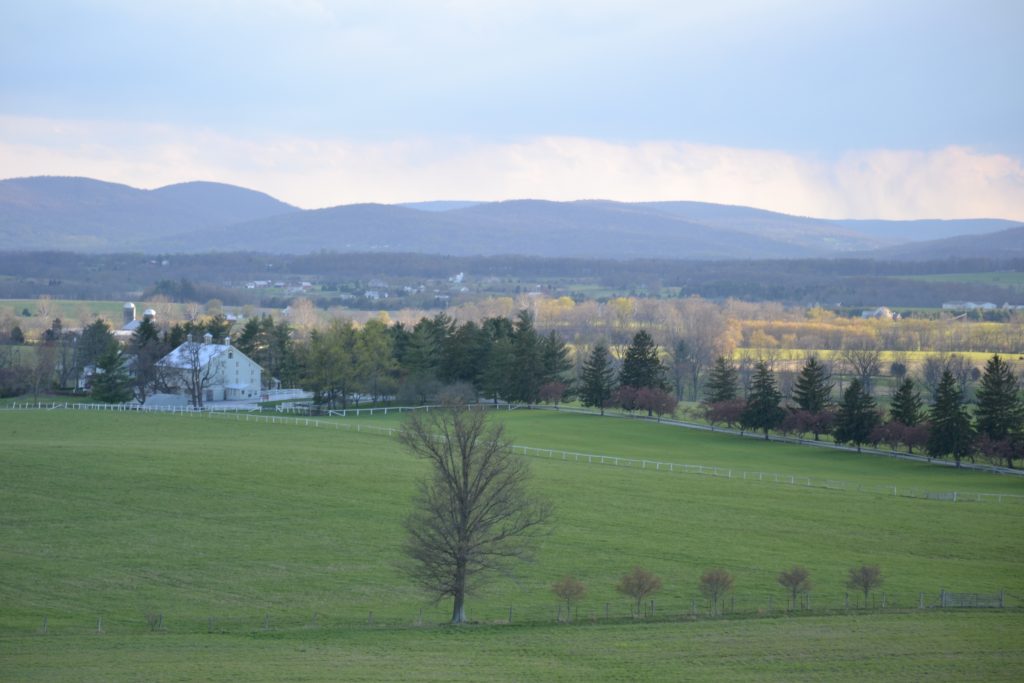
The Eisenhower Farm
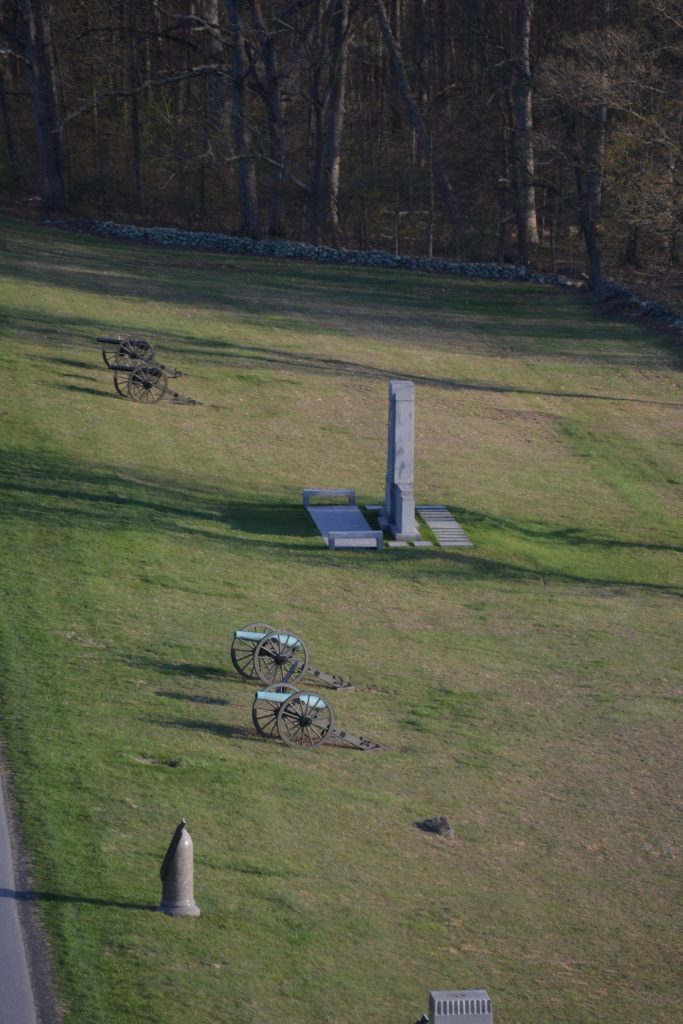
The View from Observation Tower 2
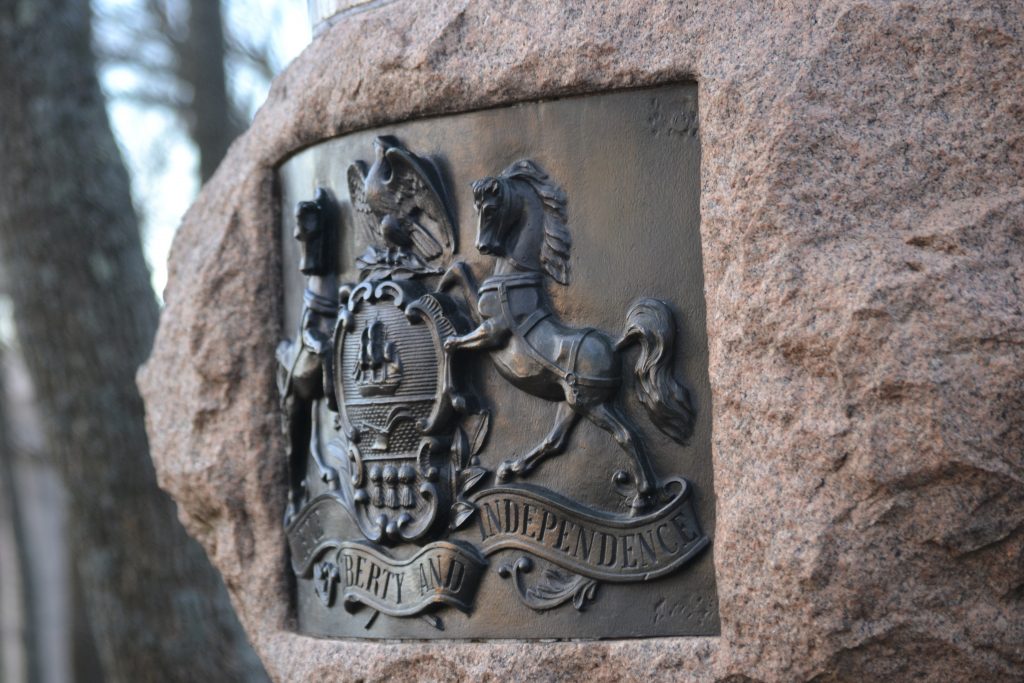
The Insignia on a Monument from one of the Hikes
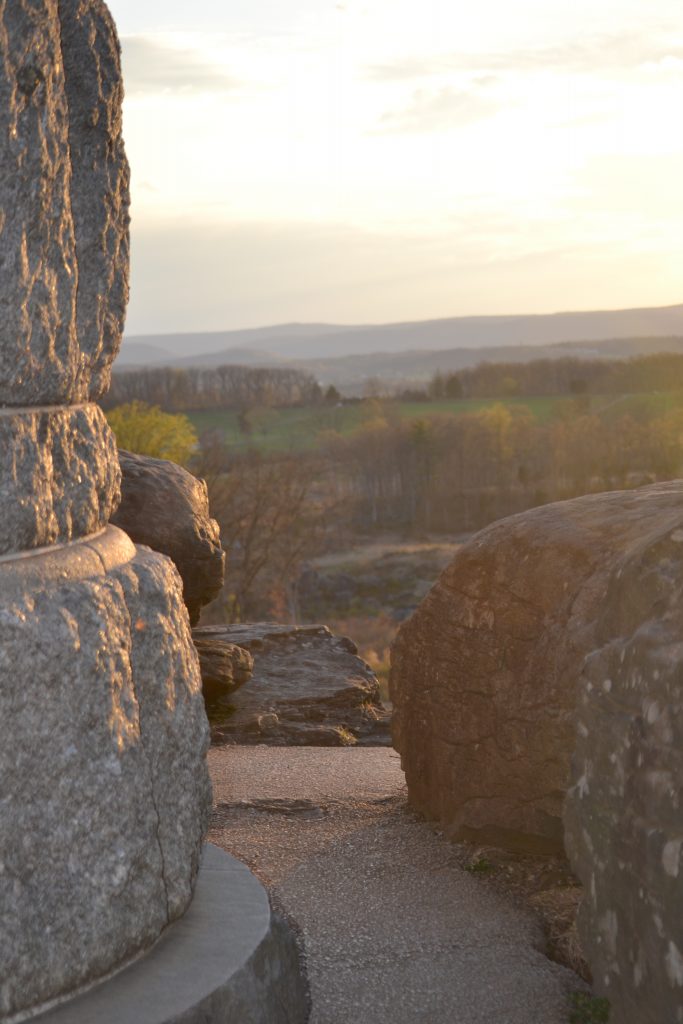
Spectacular Scenery at Little Round Top, Gettysburg
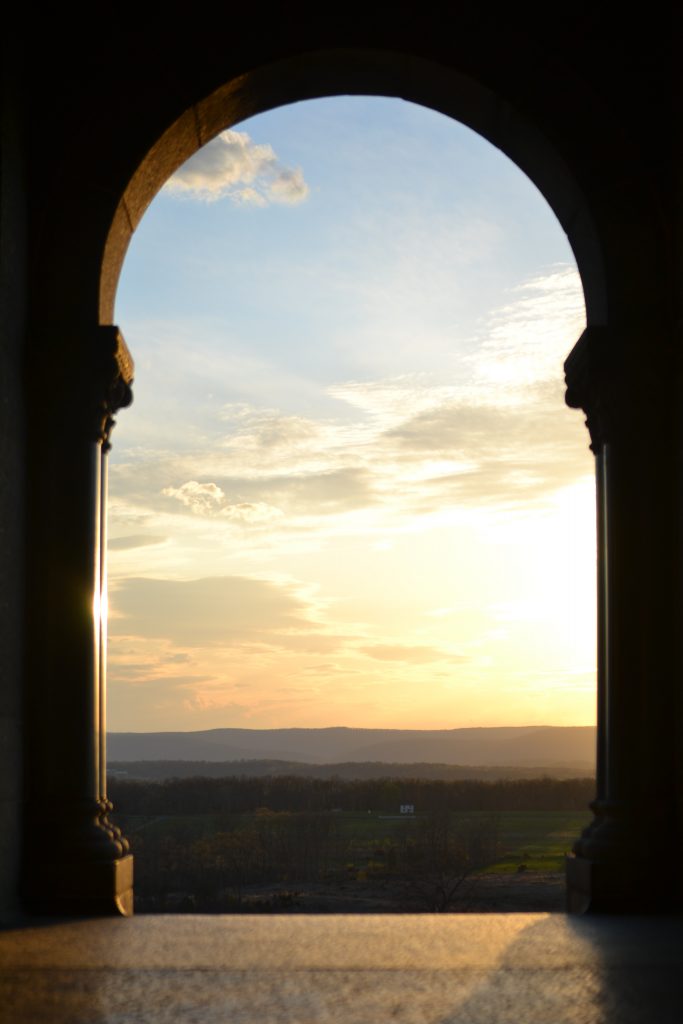
Looking out onto the Gettysburg Battlefield from Little Round Top
